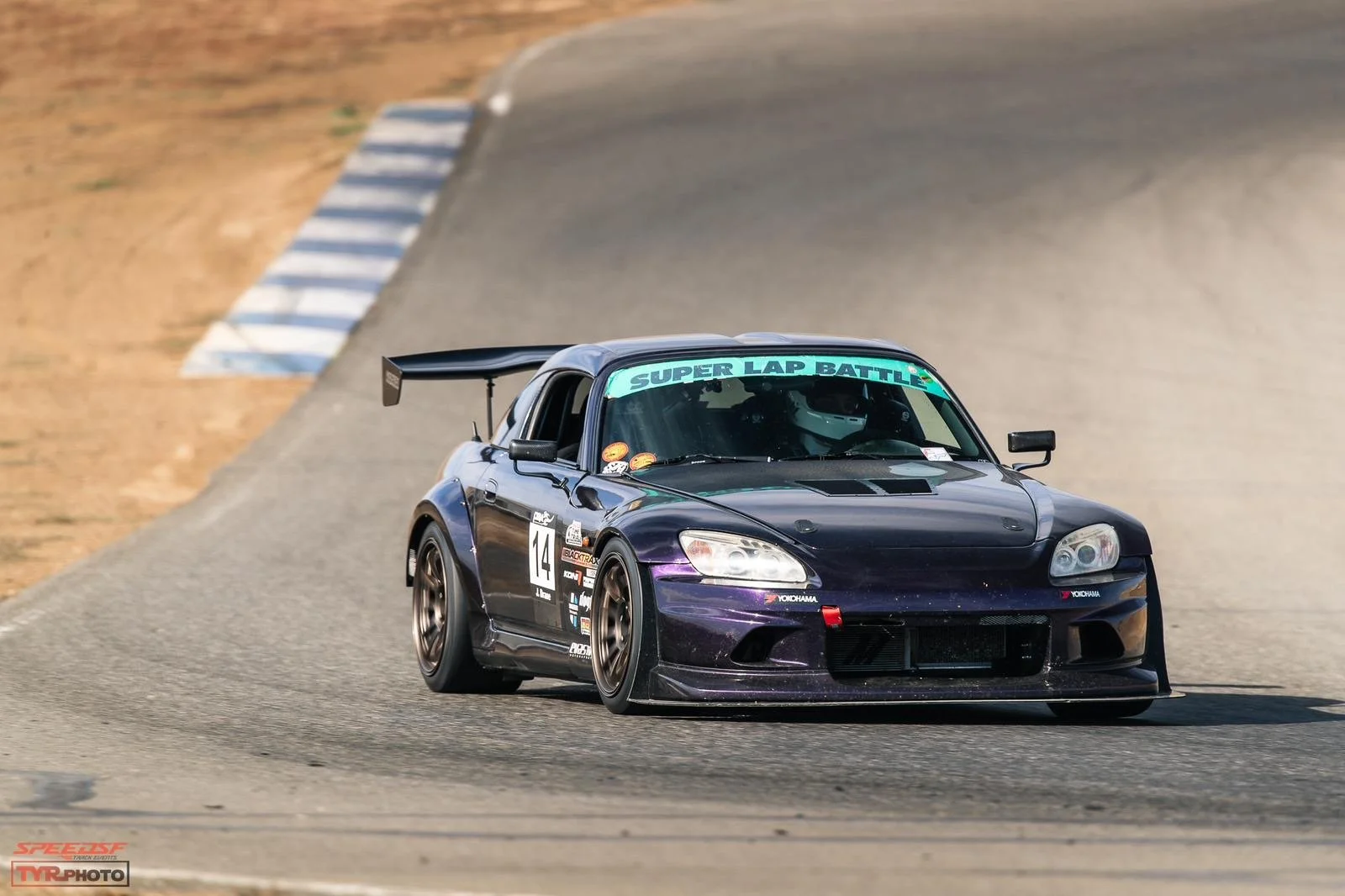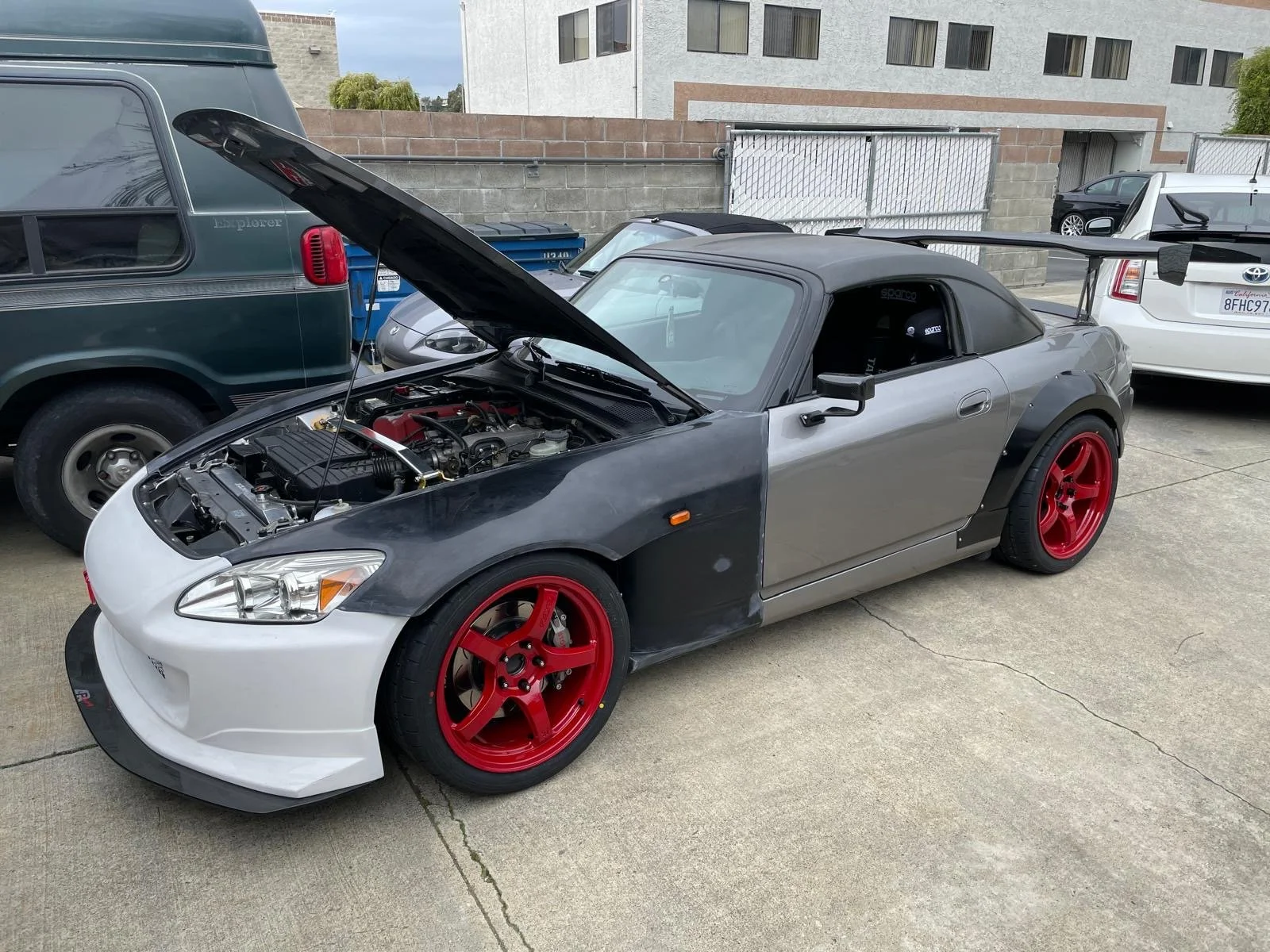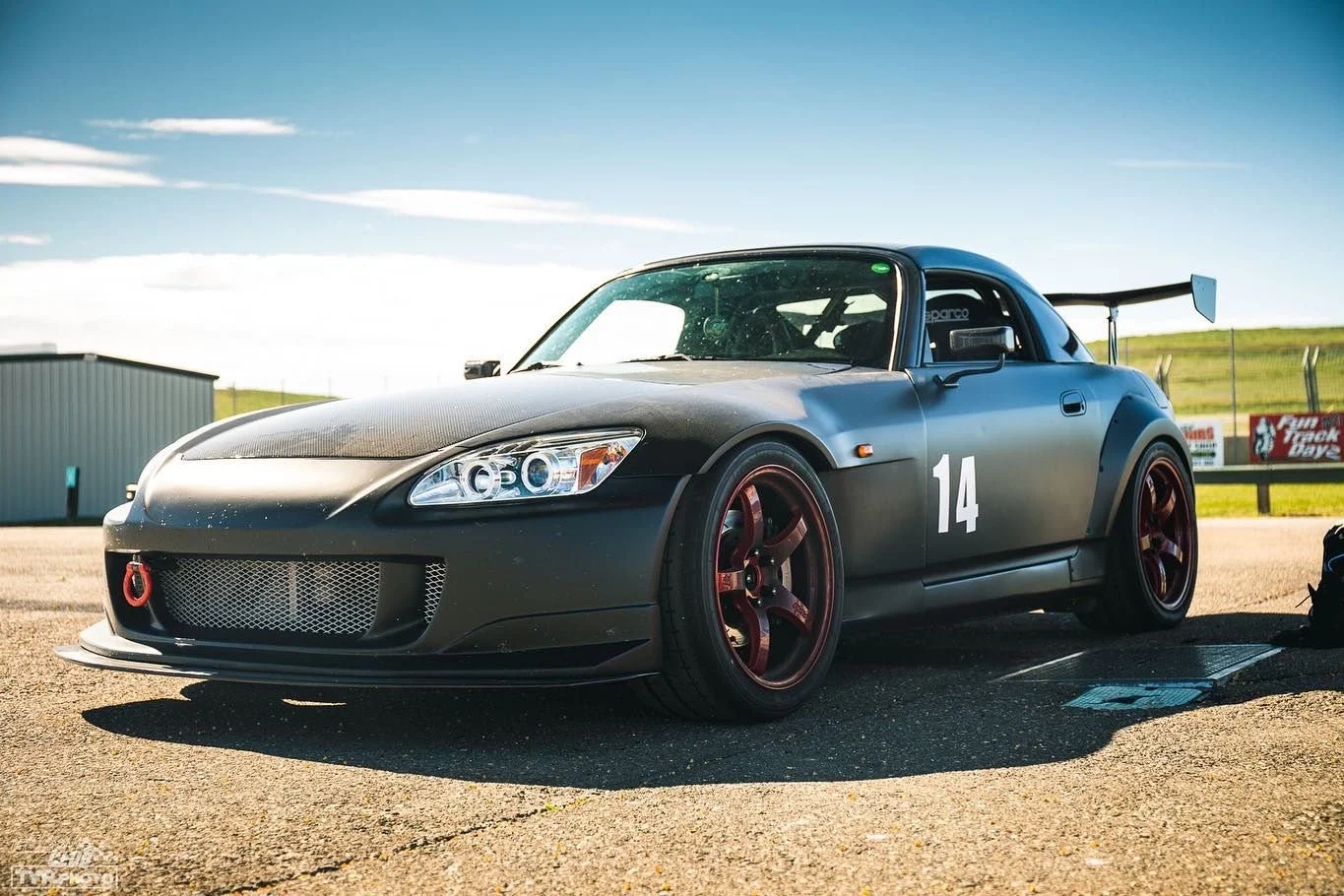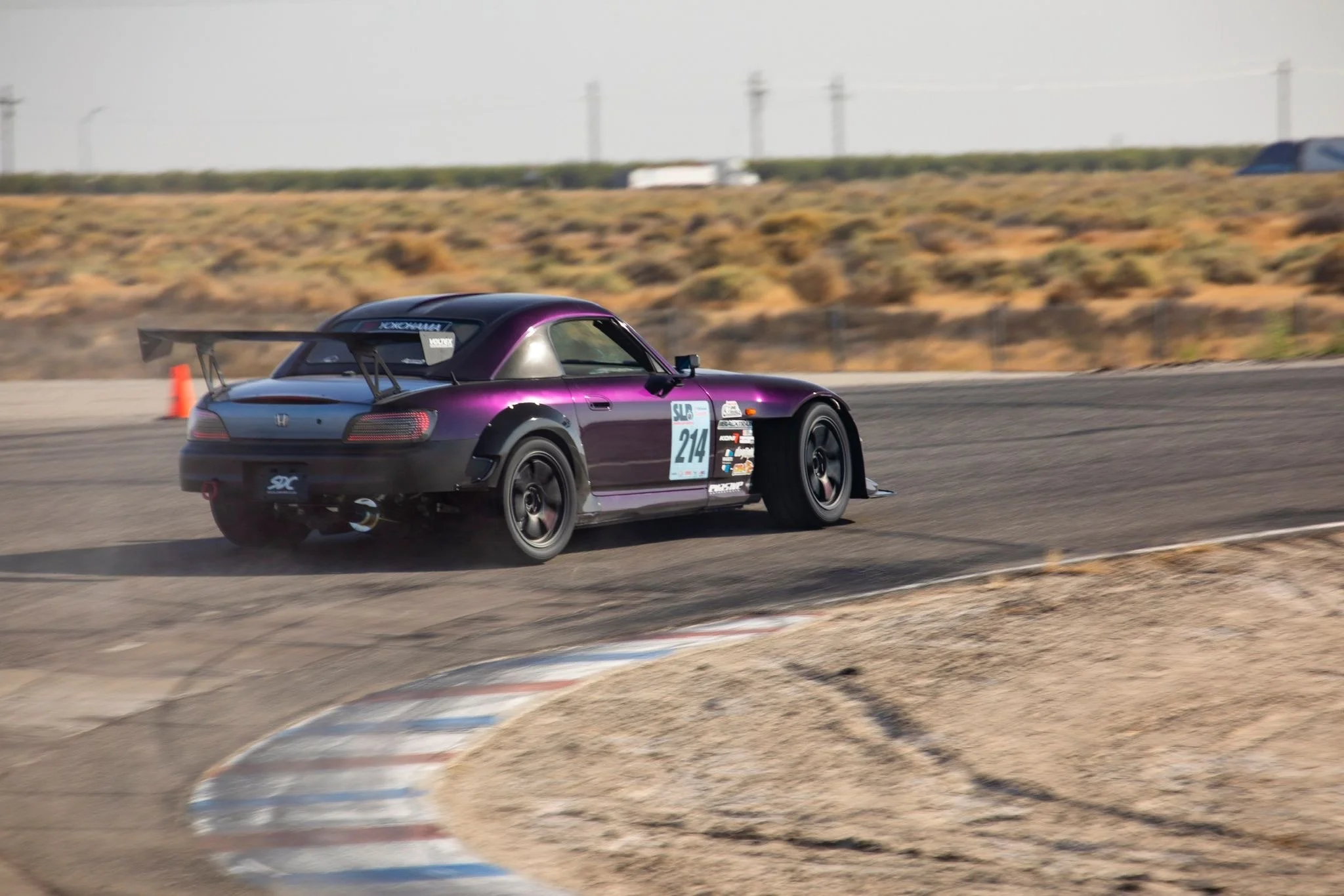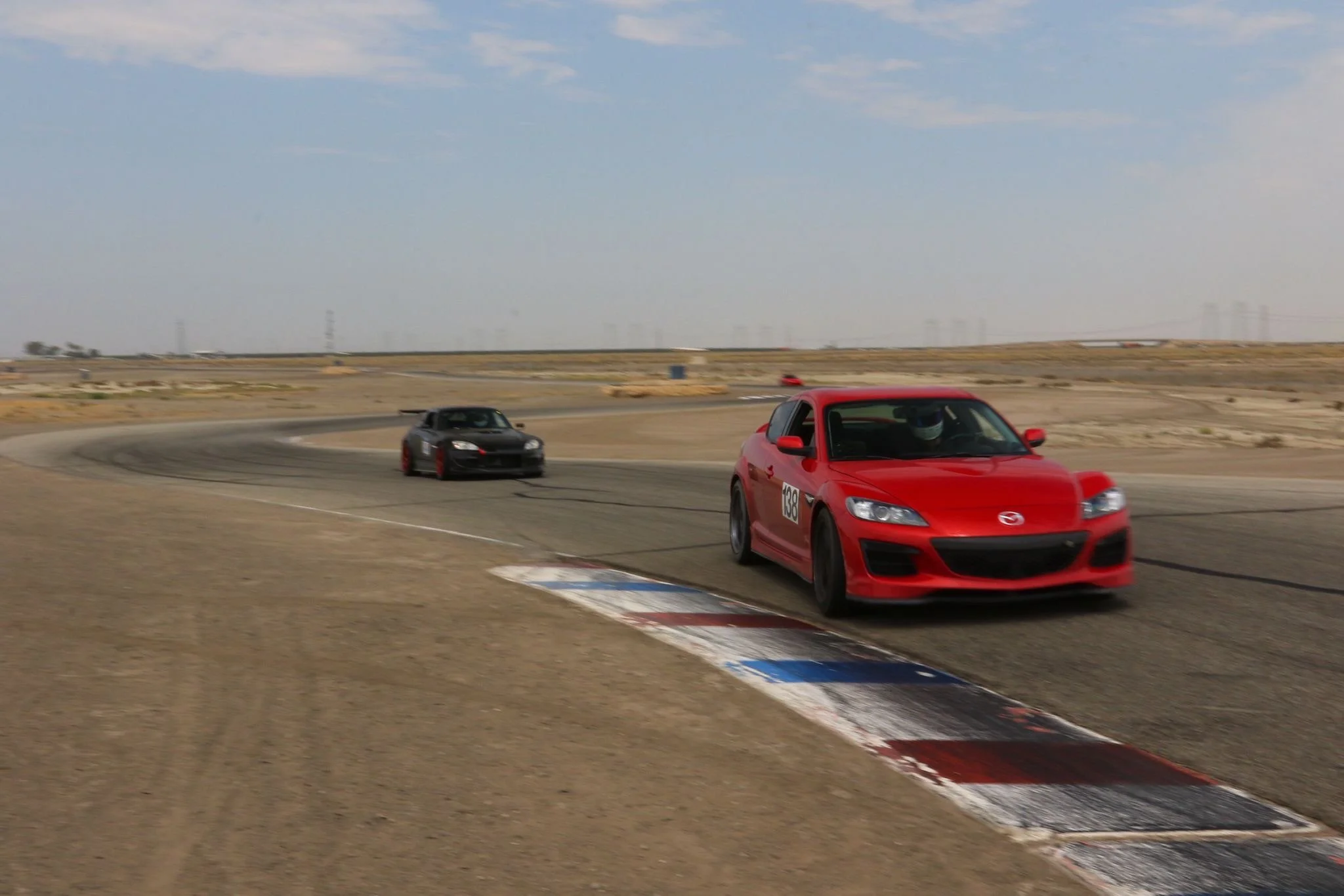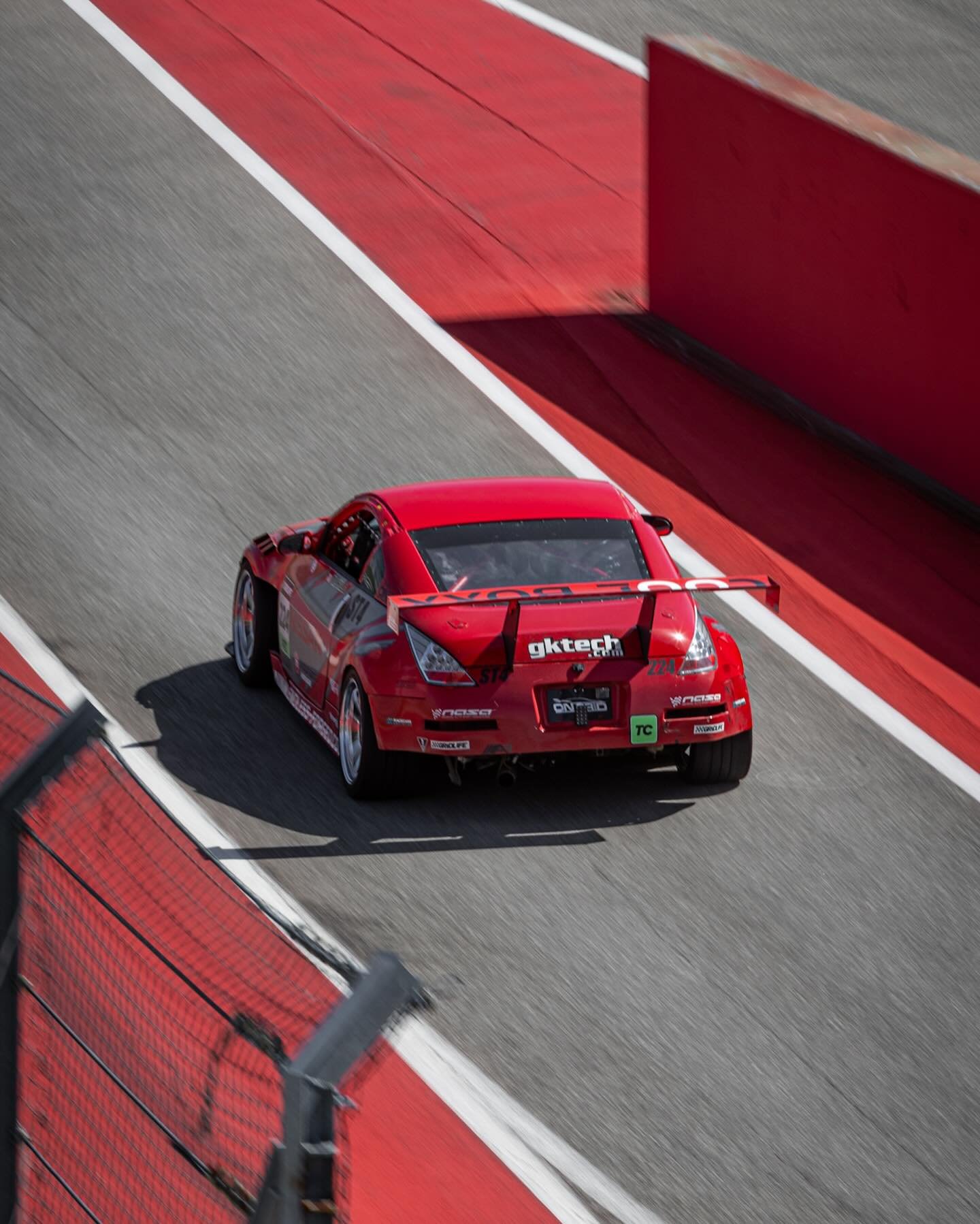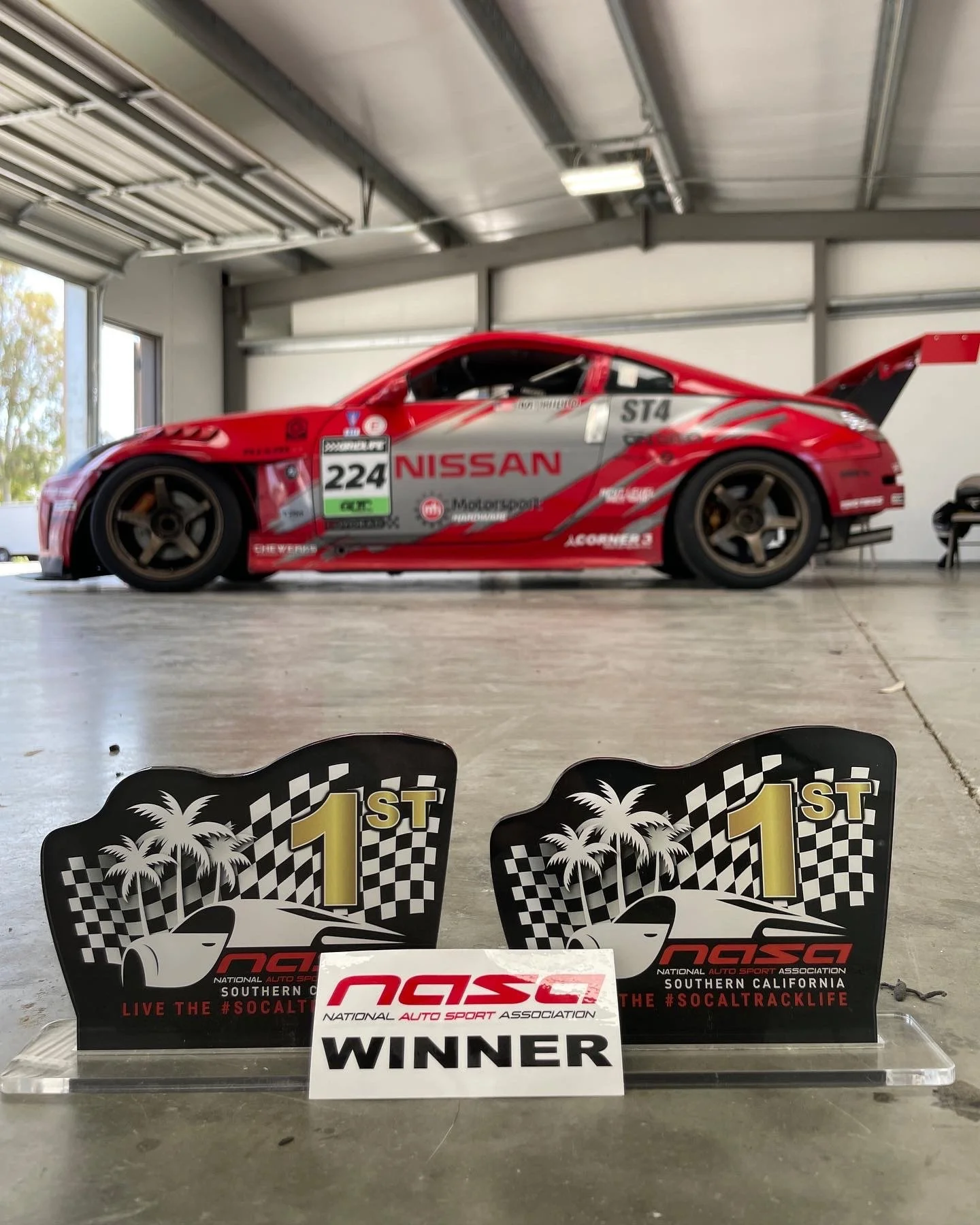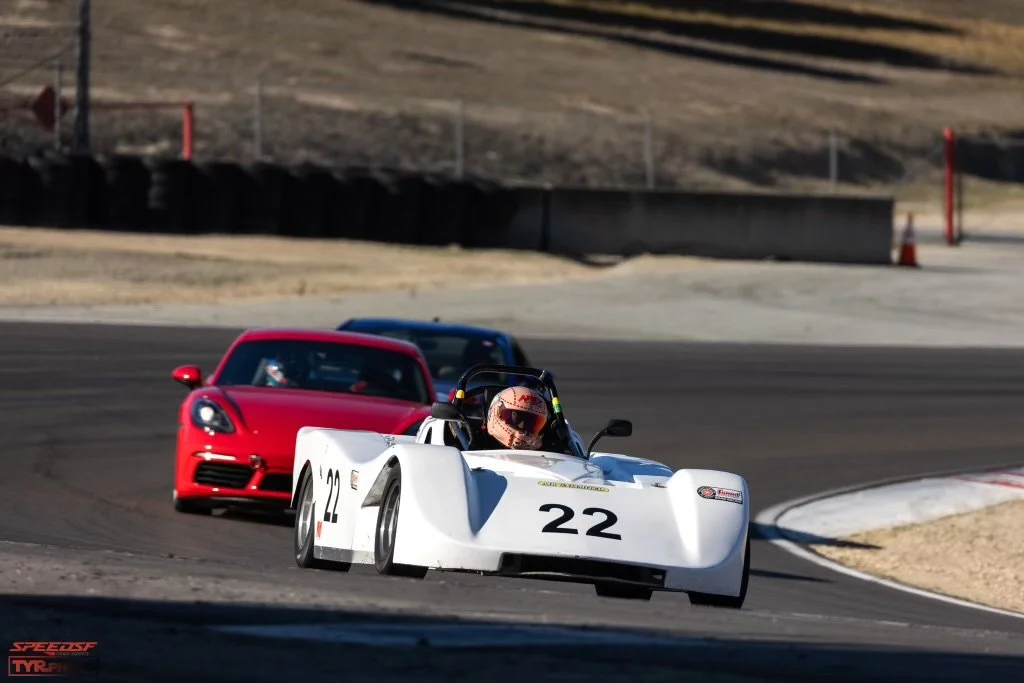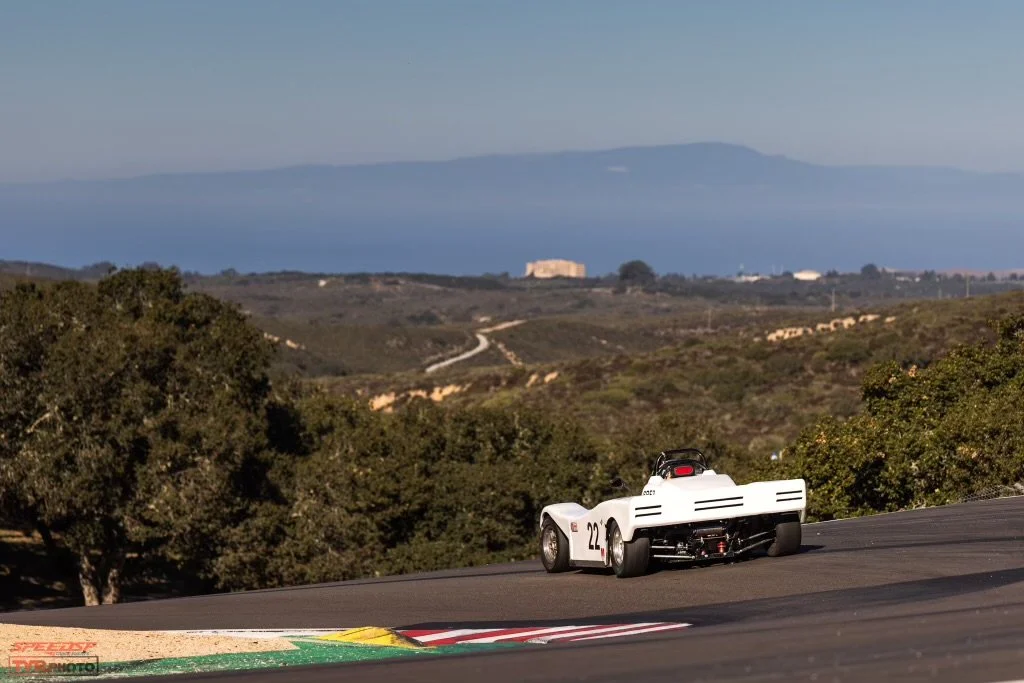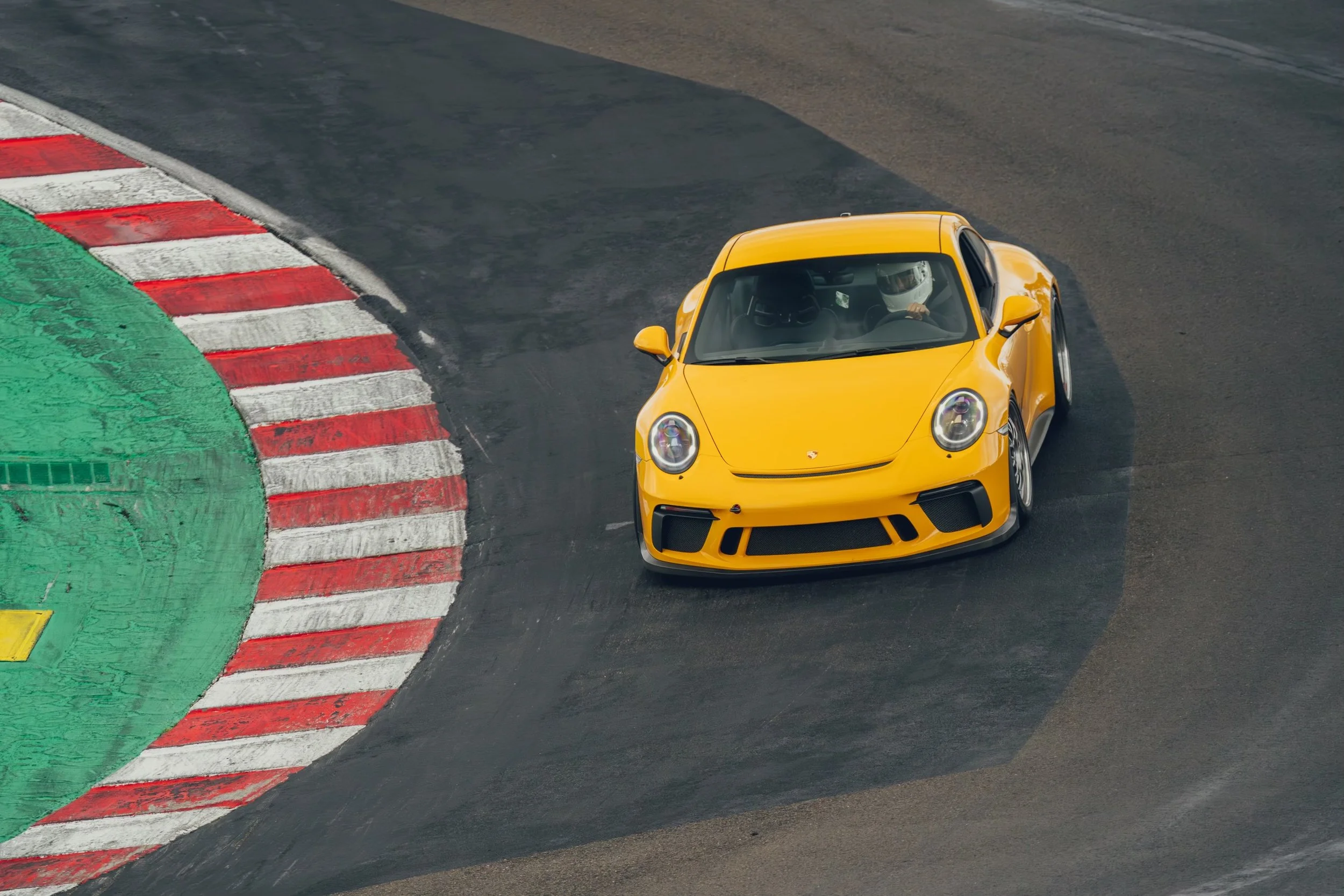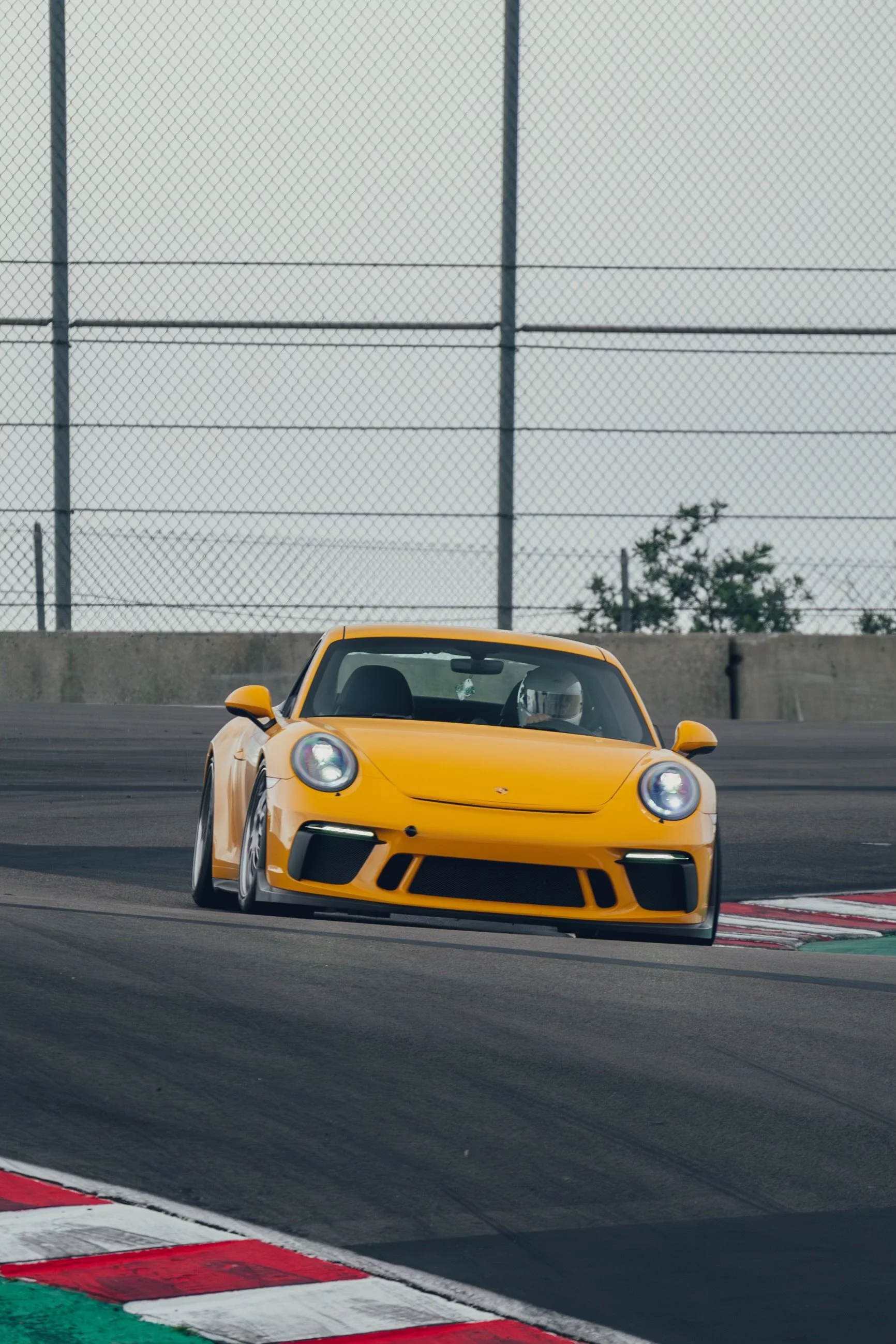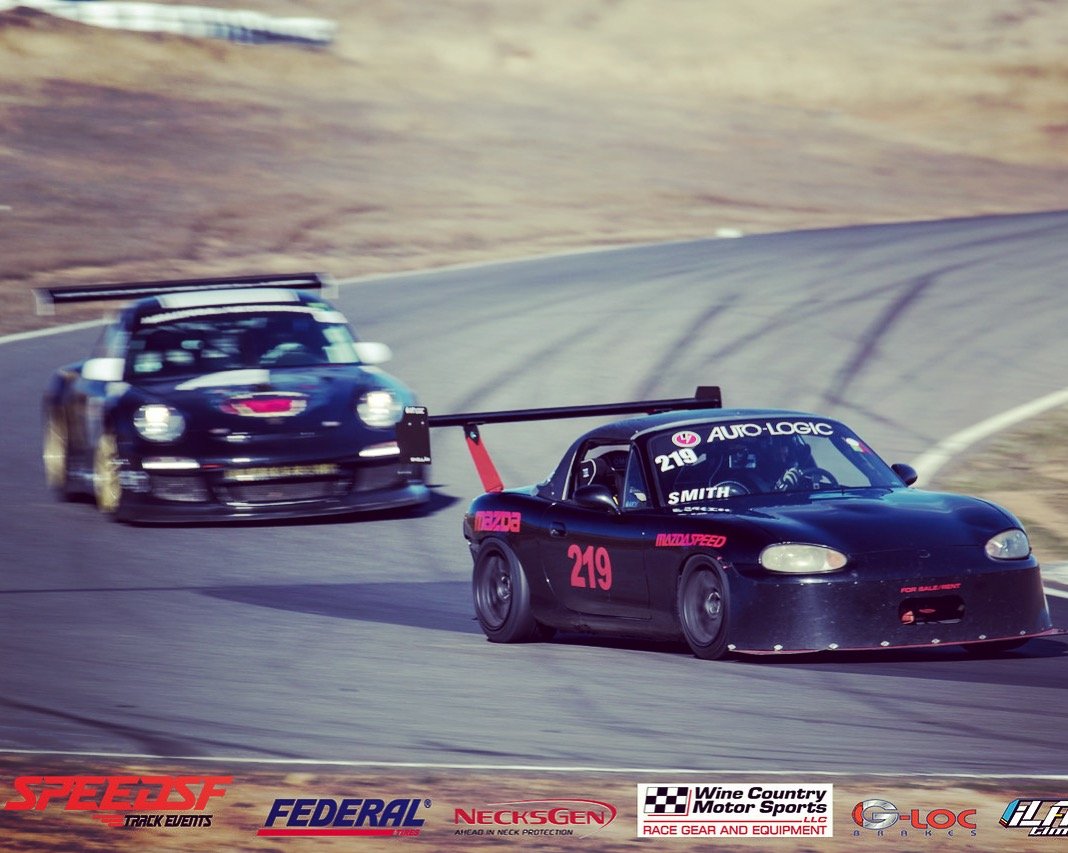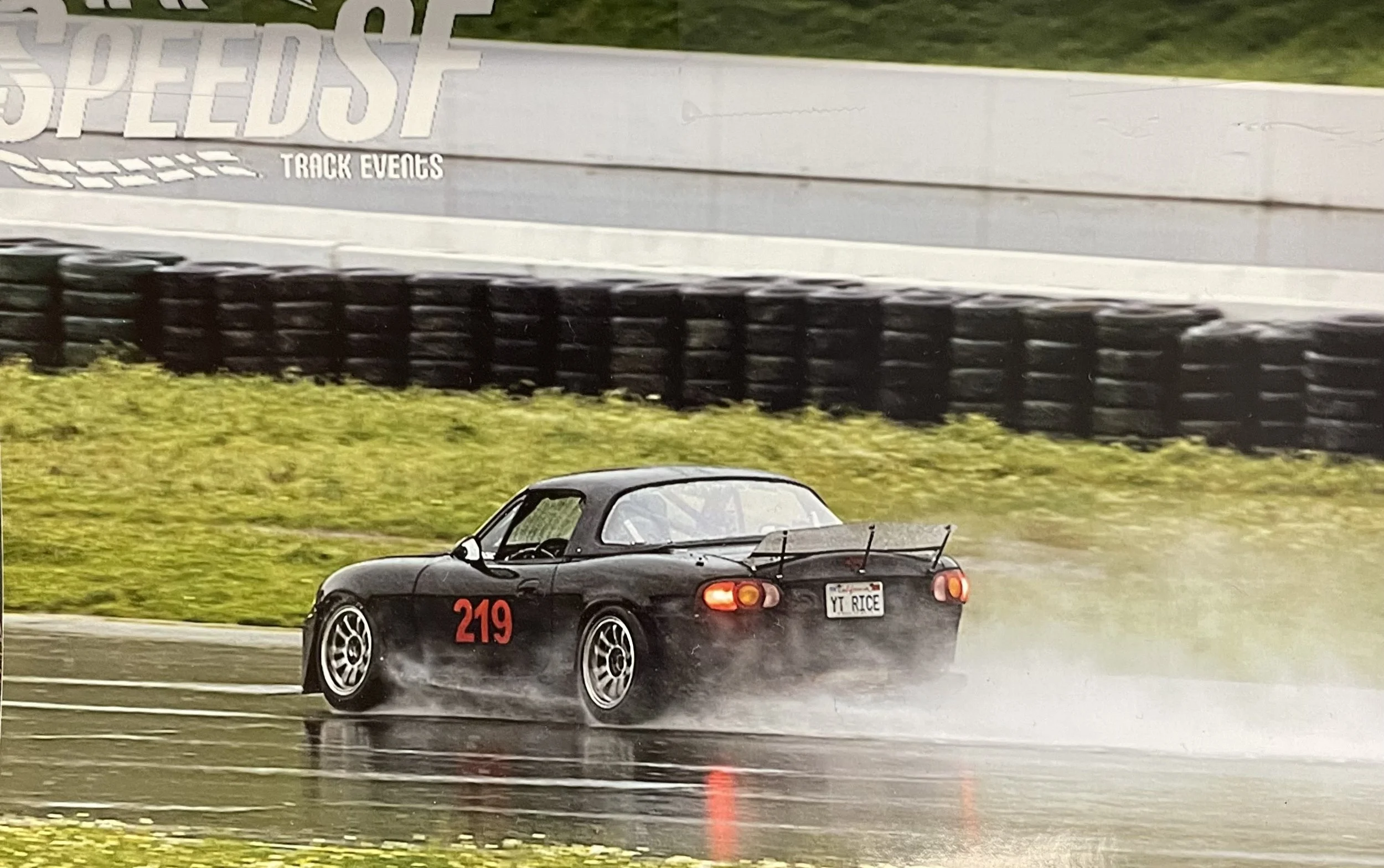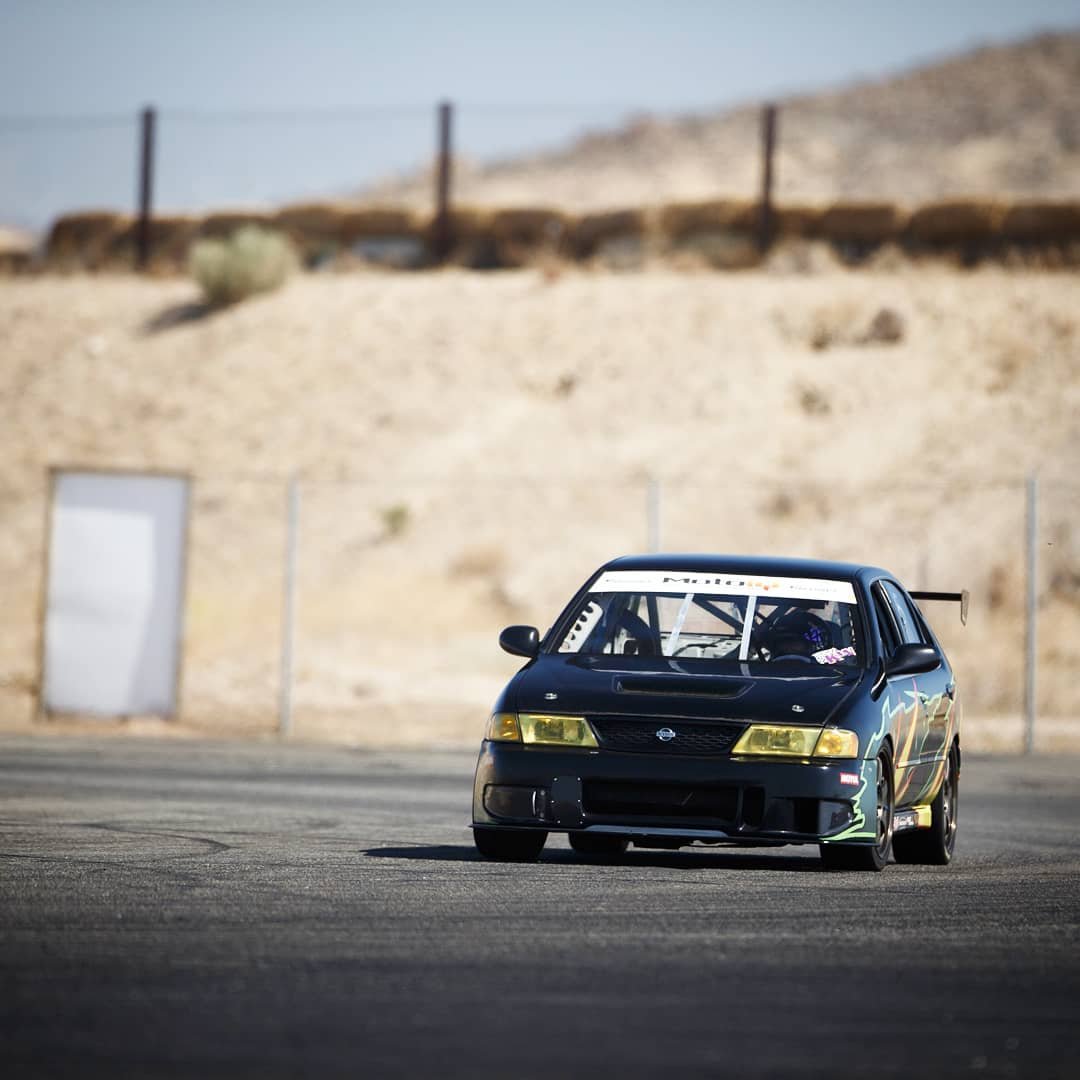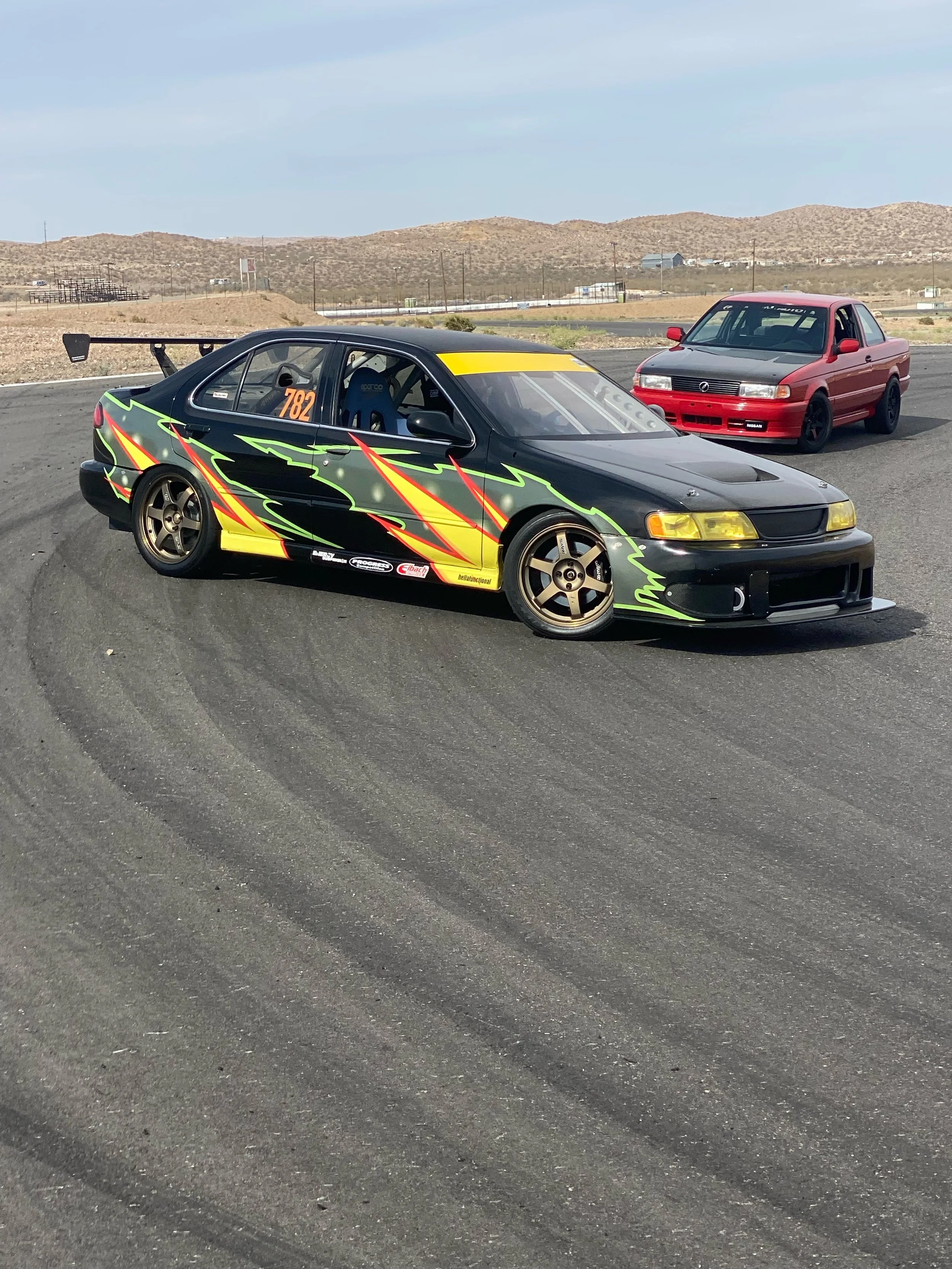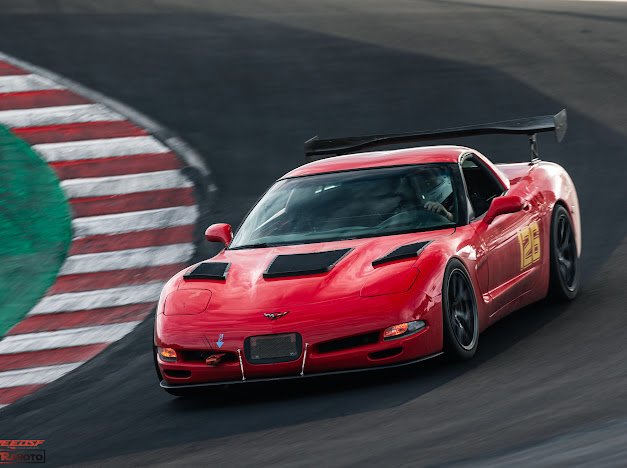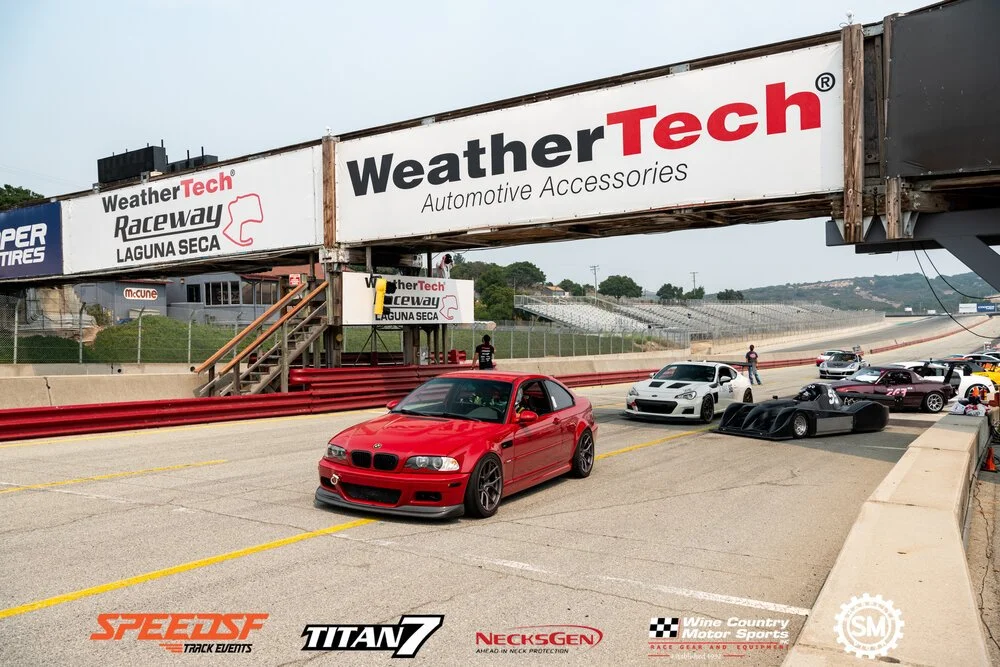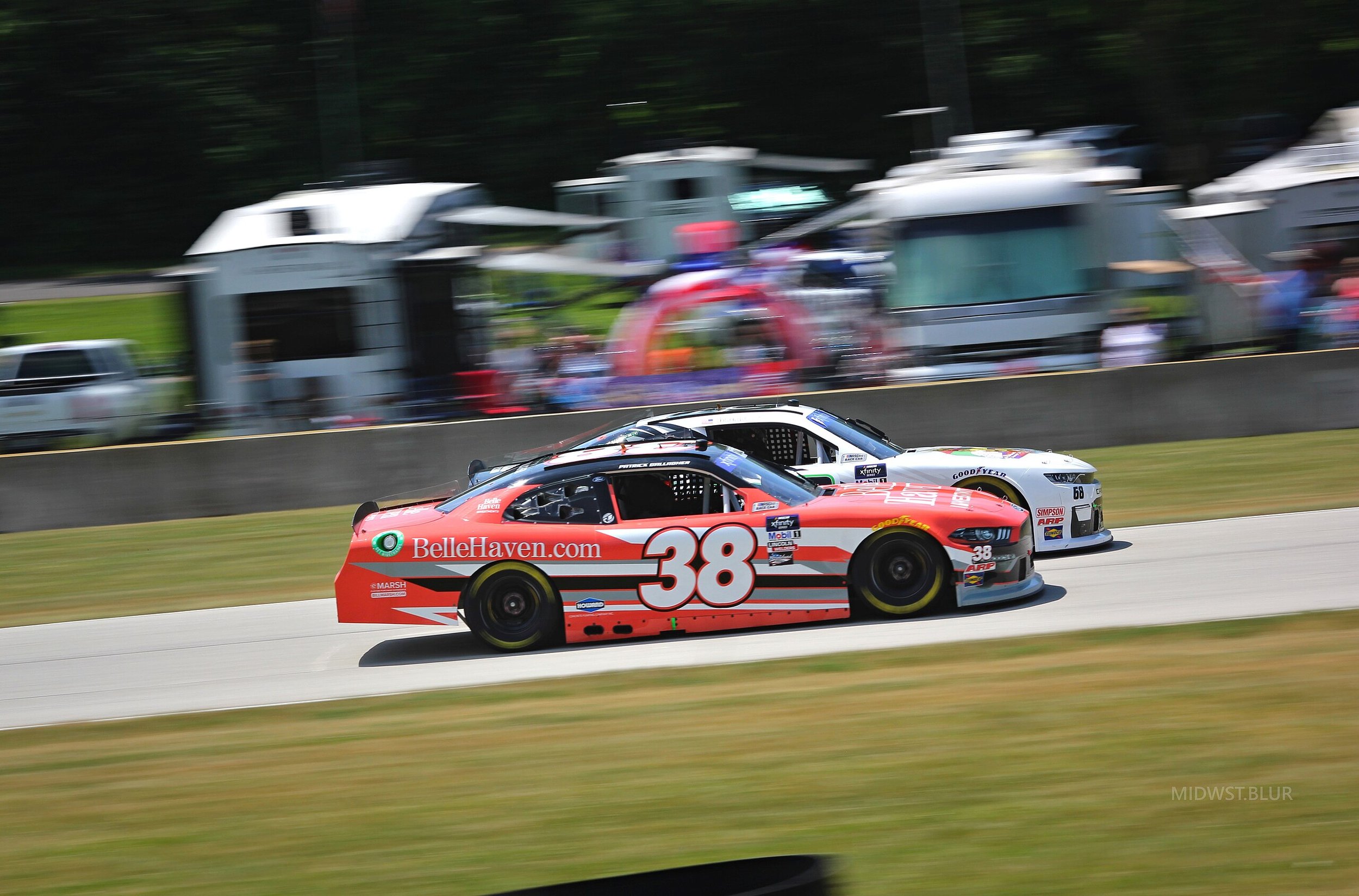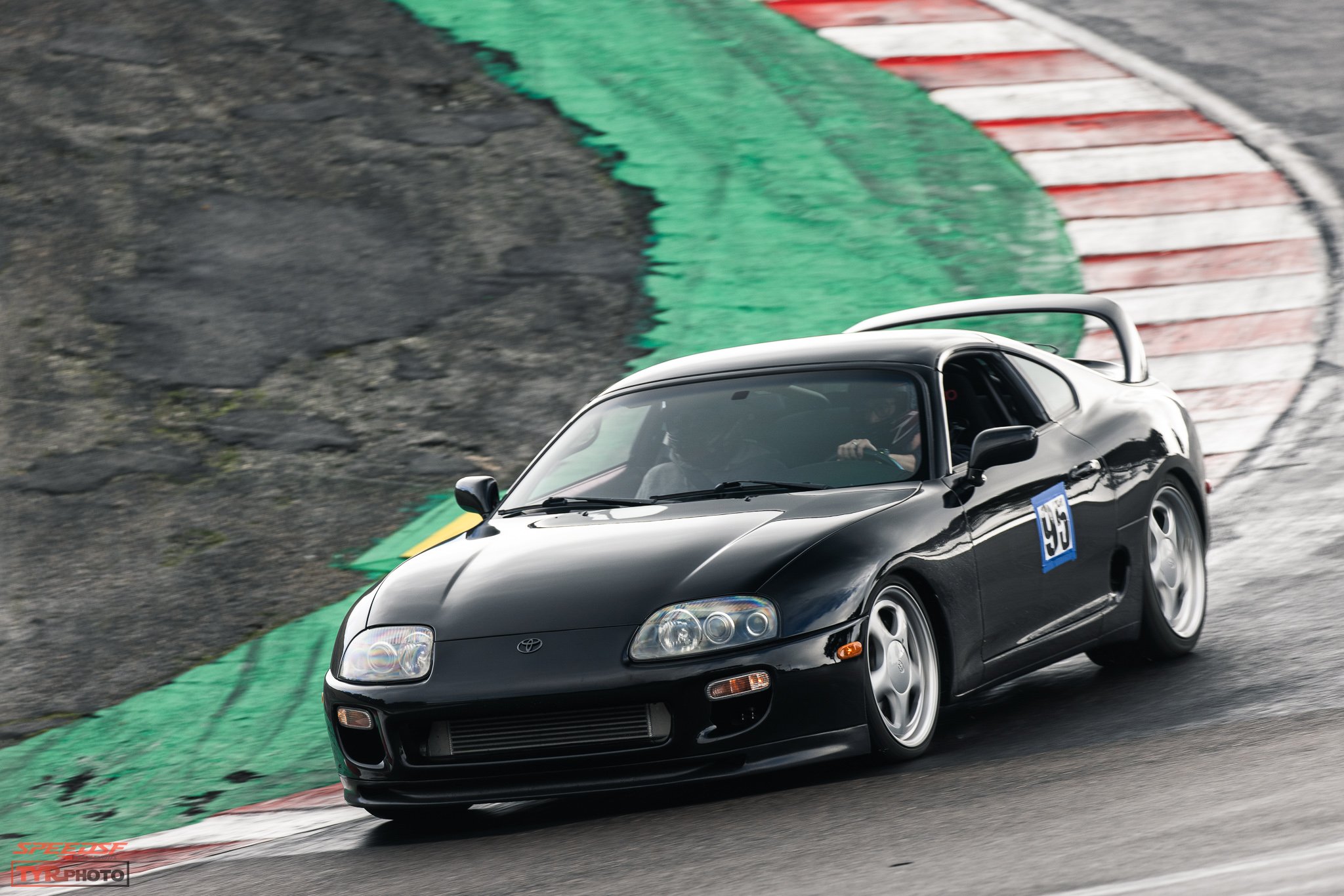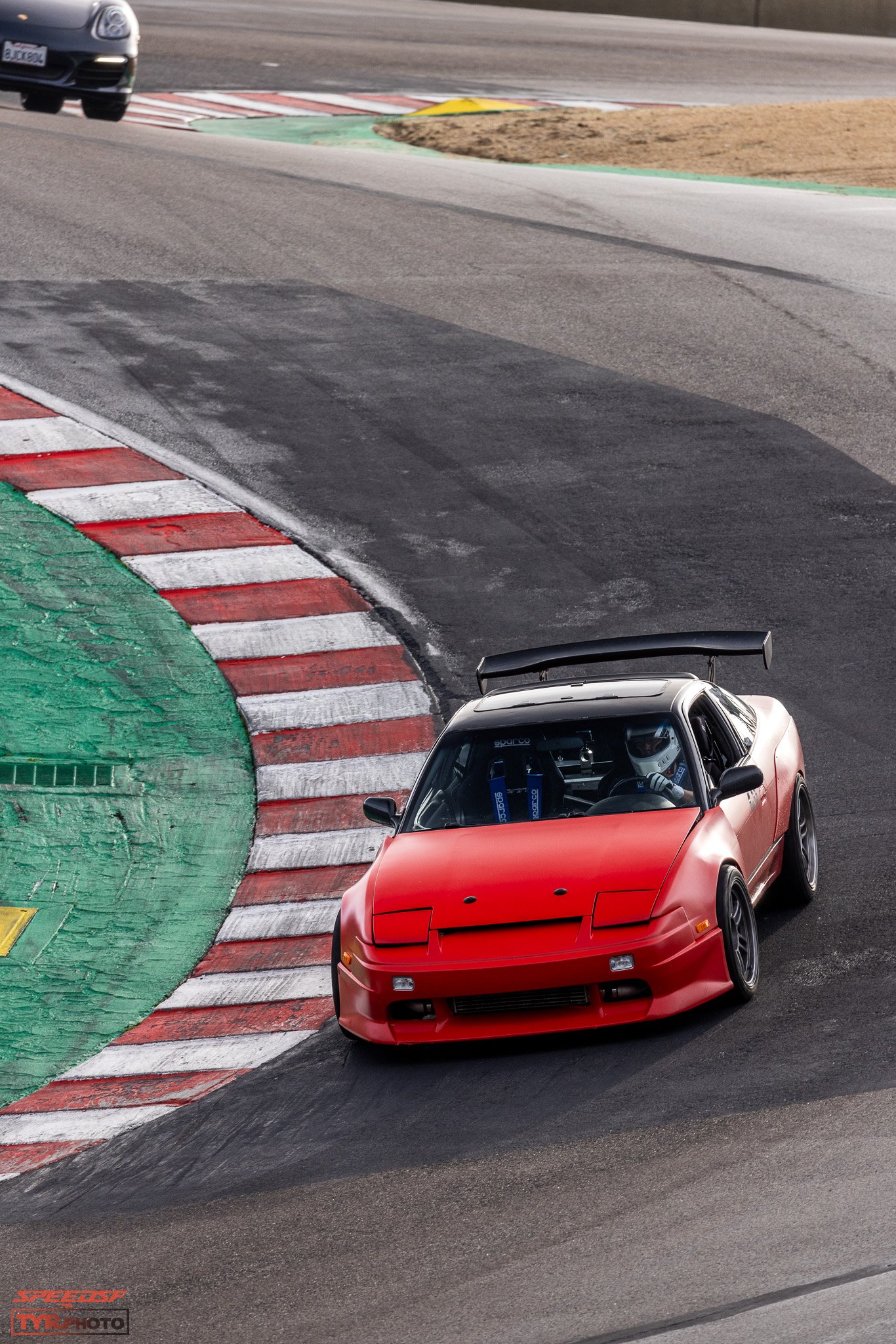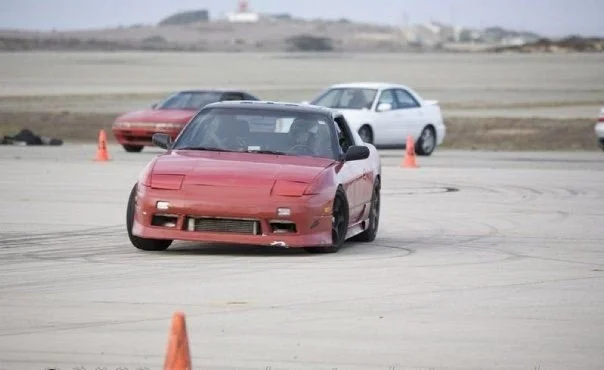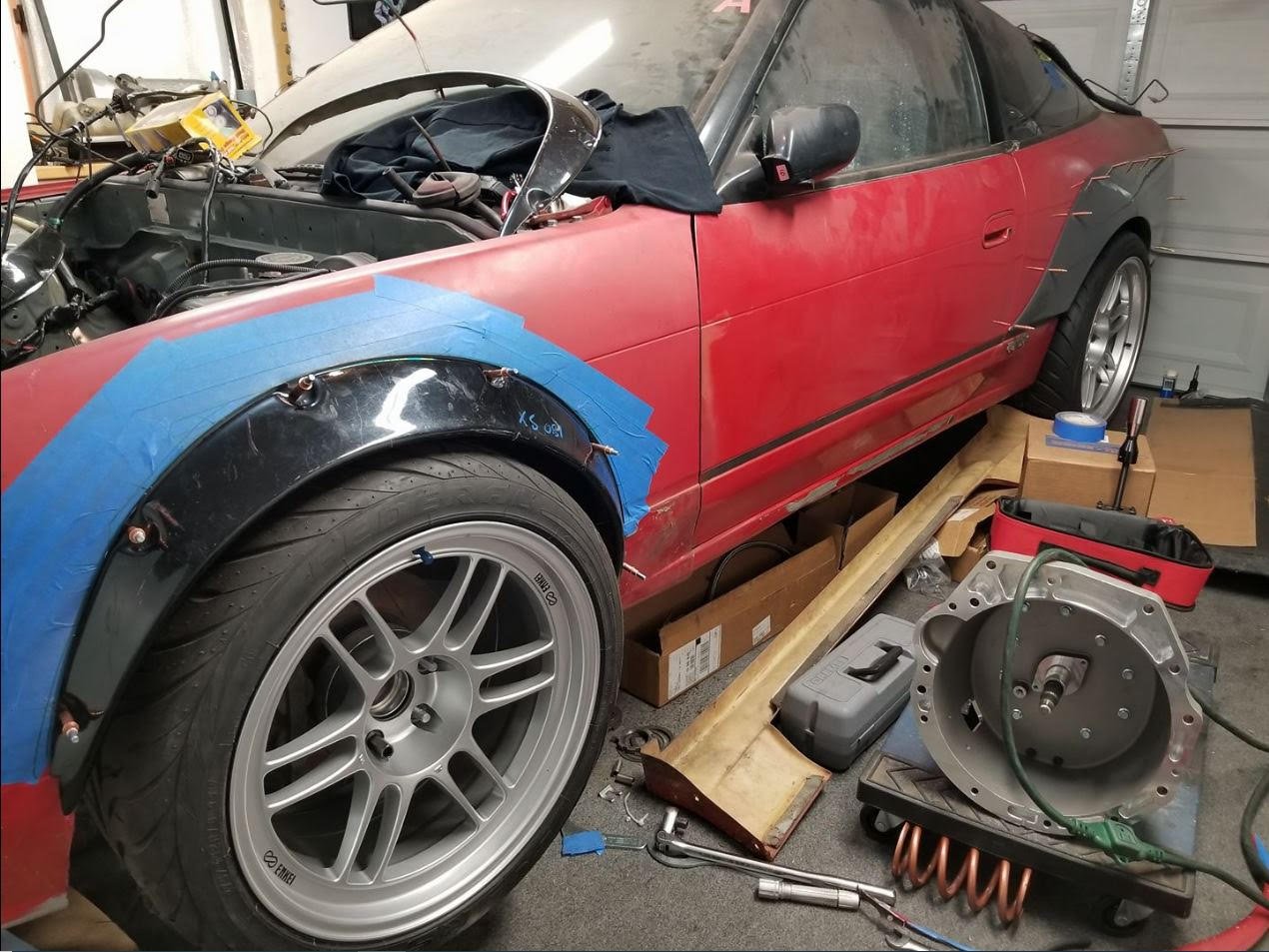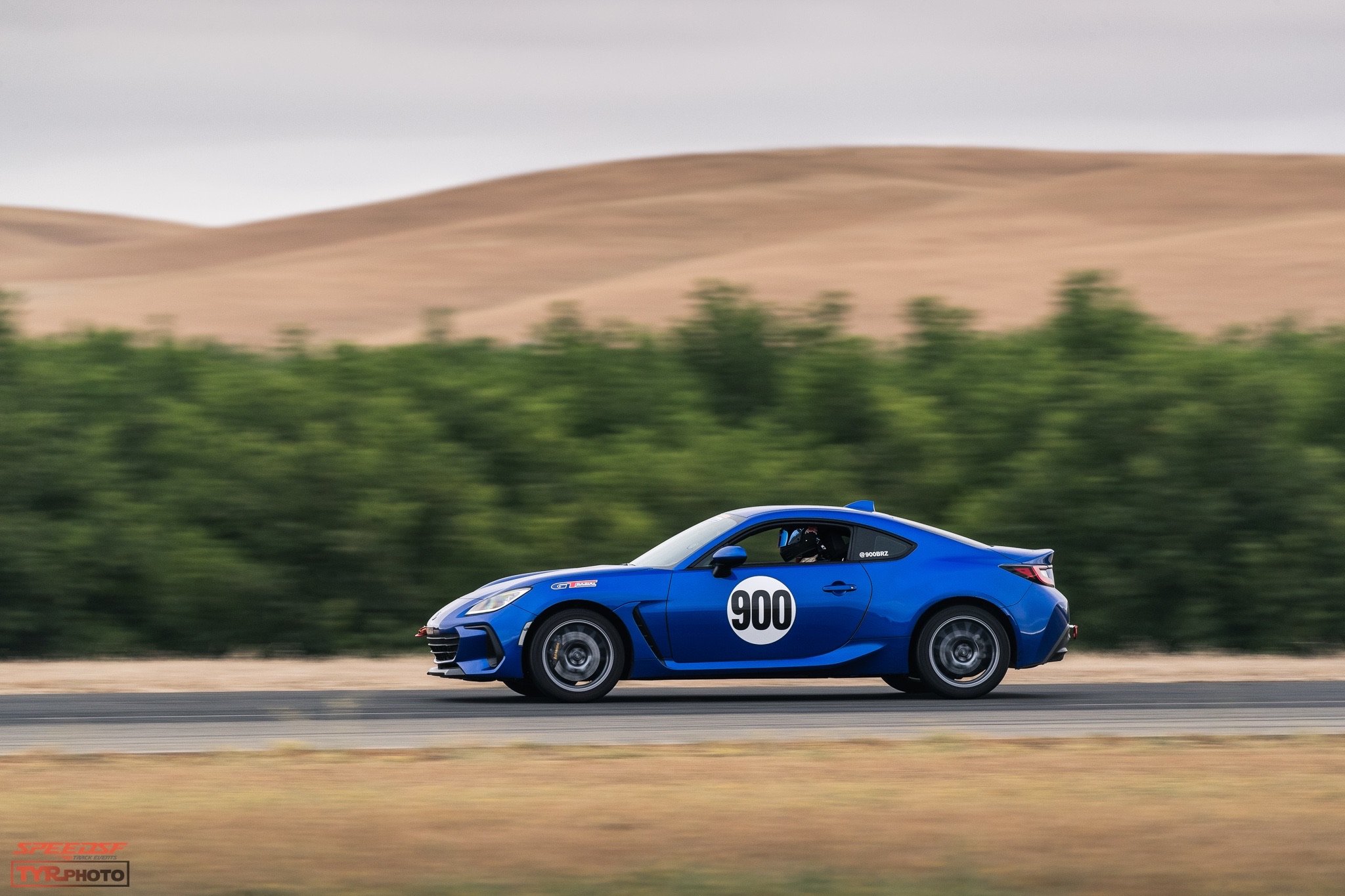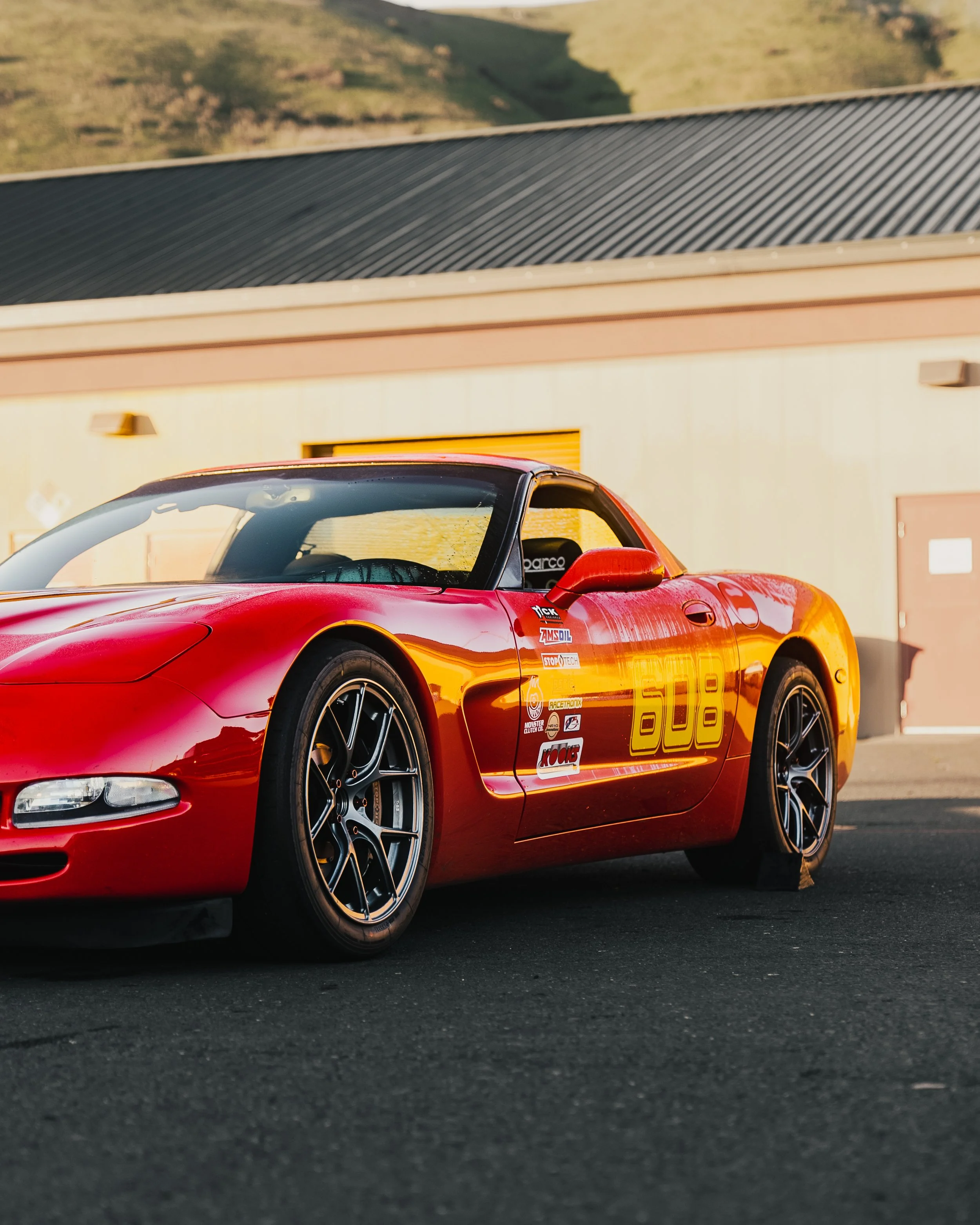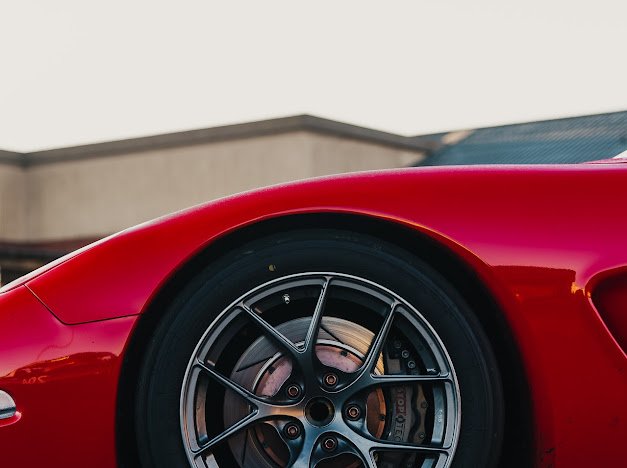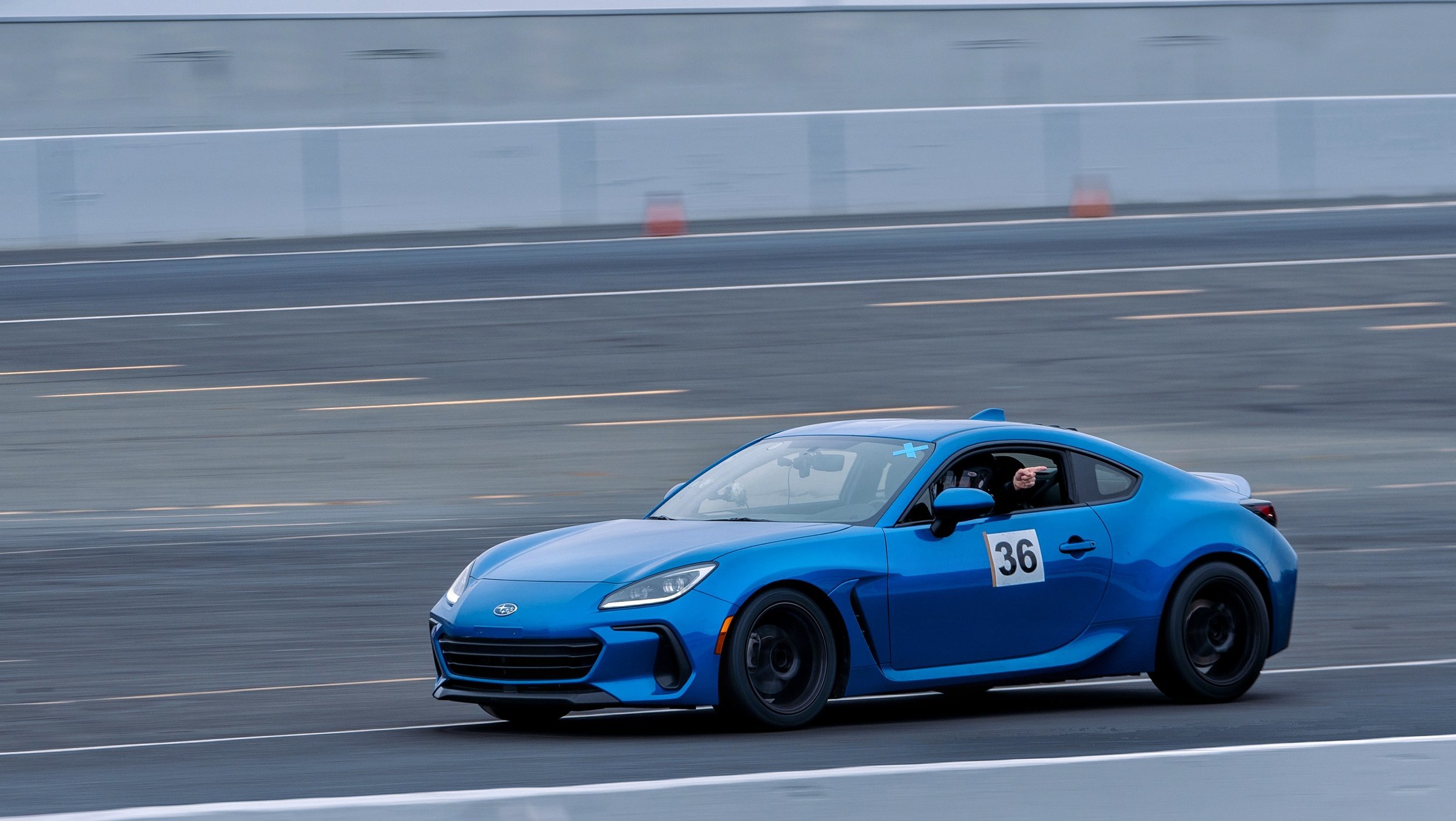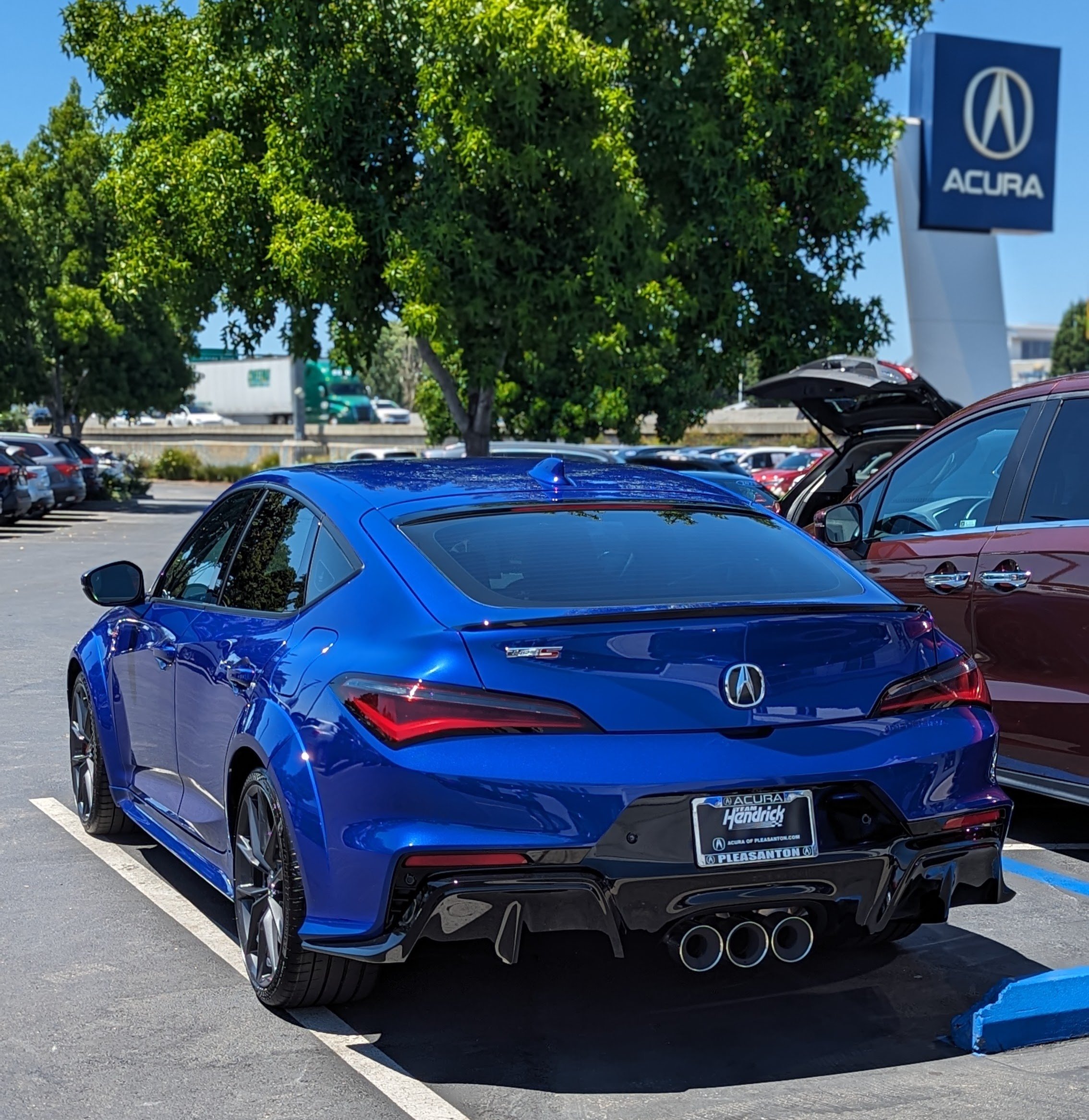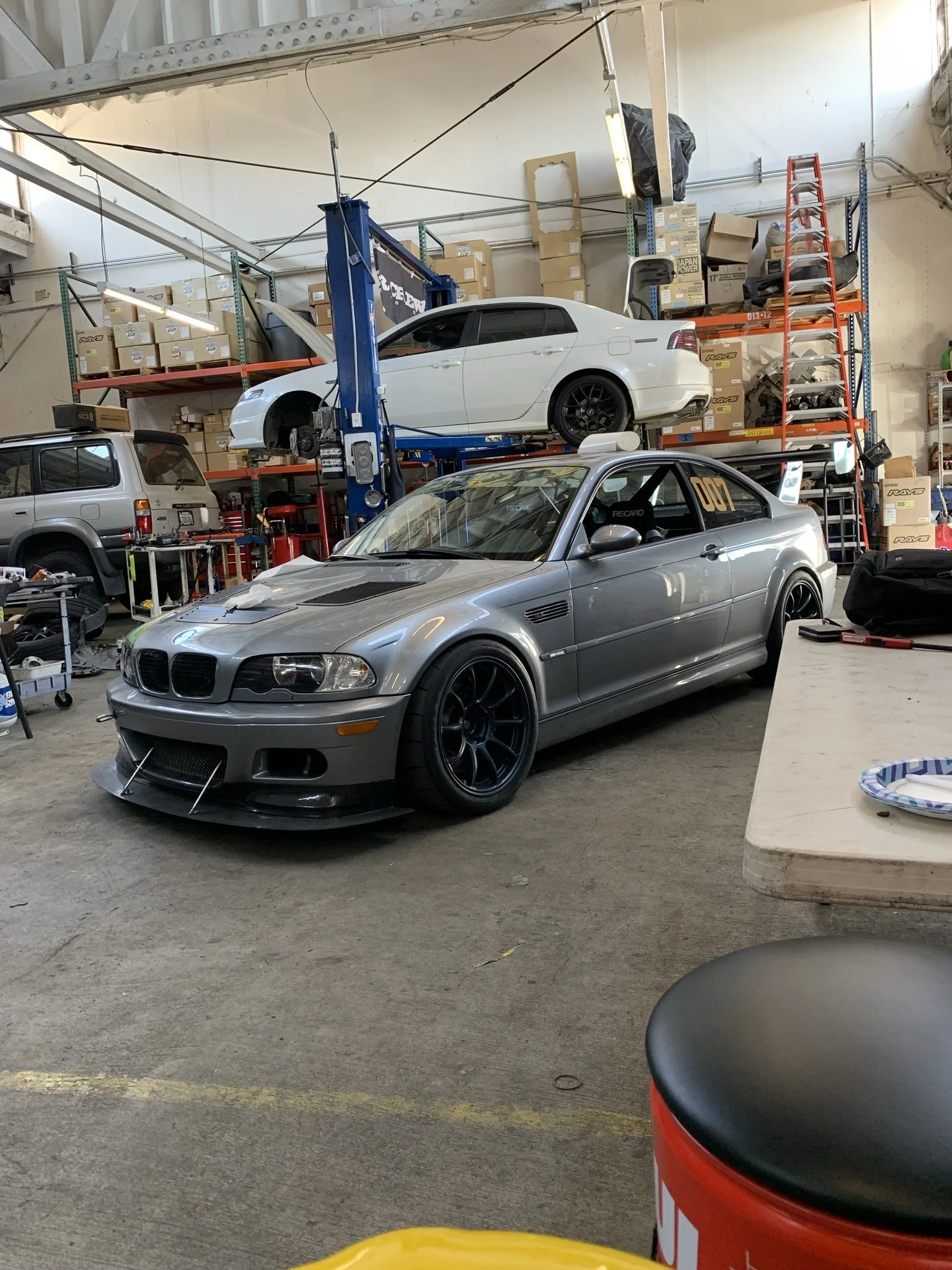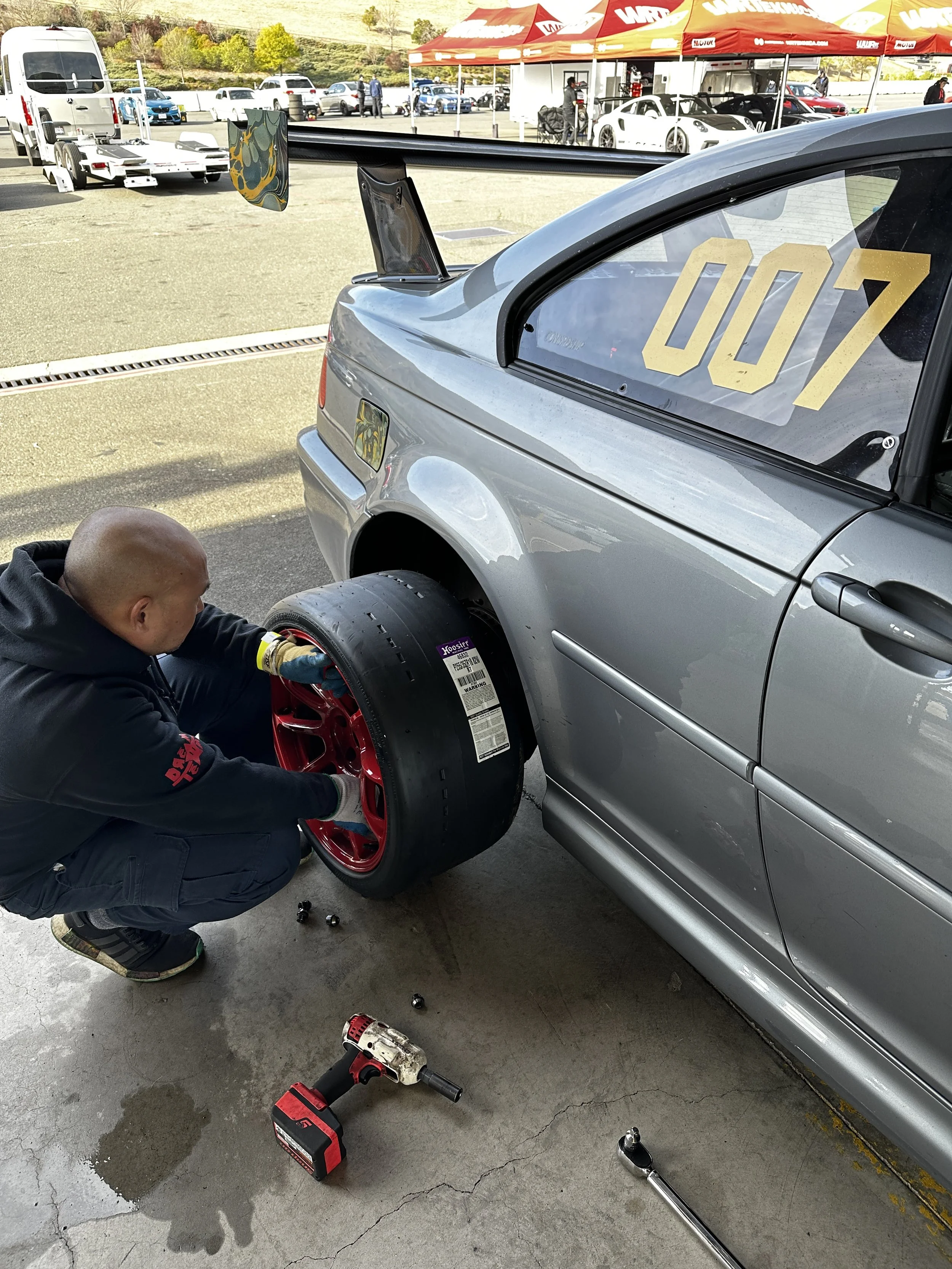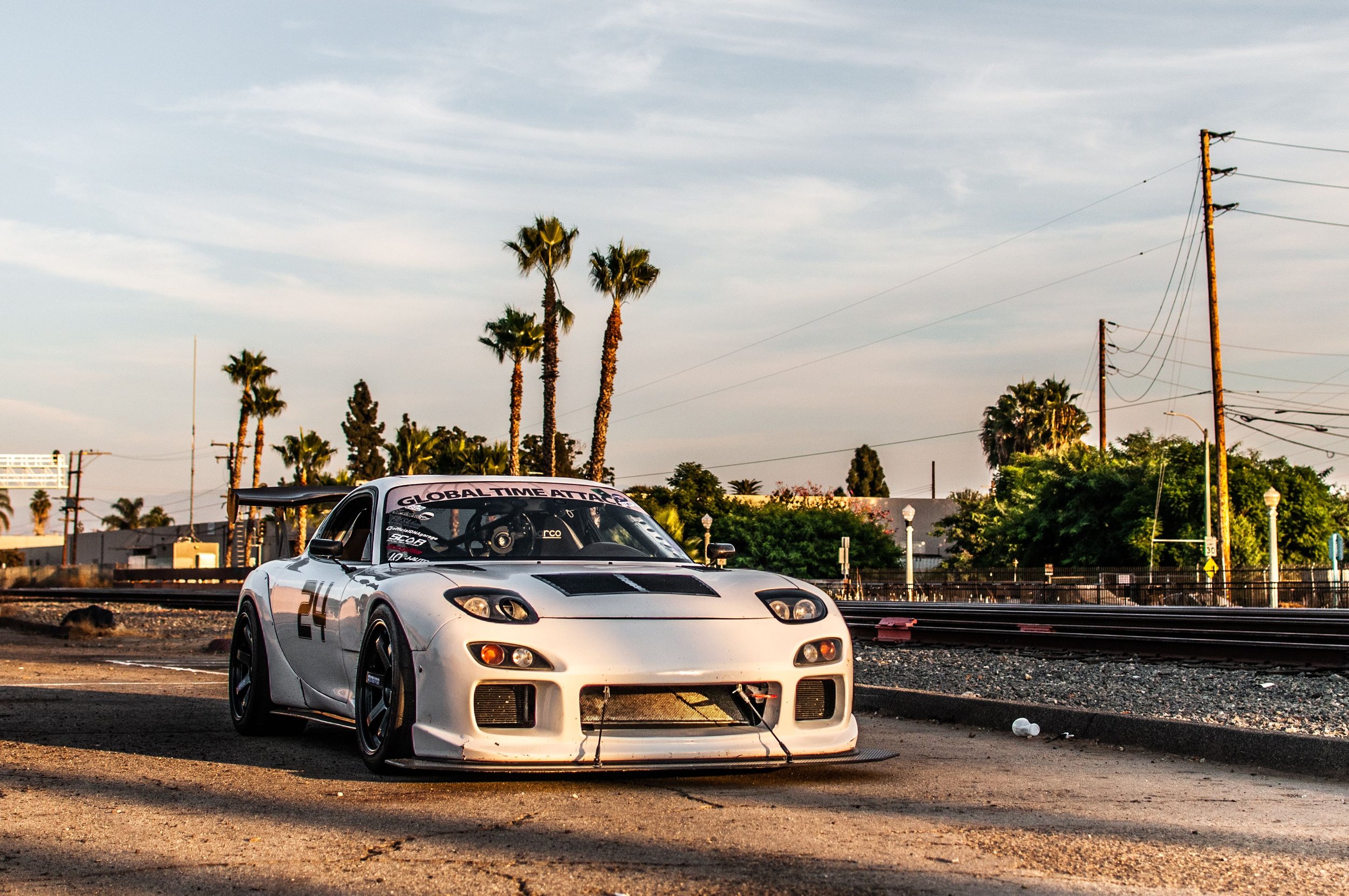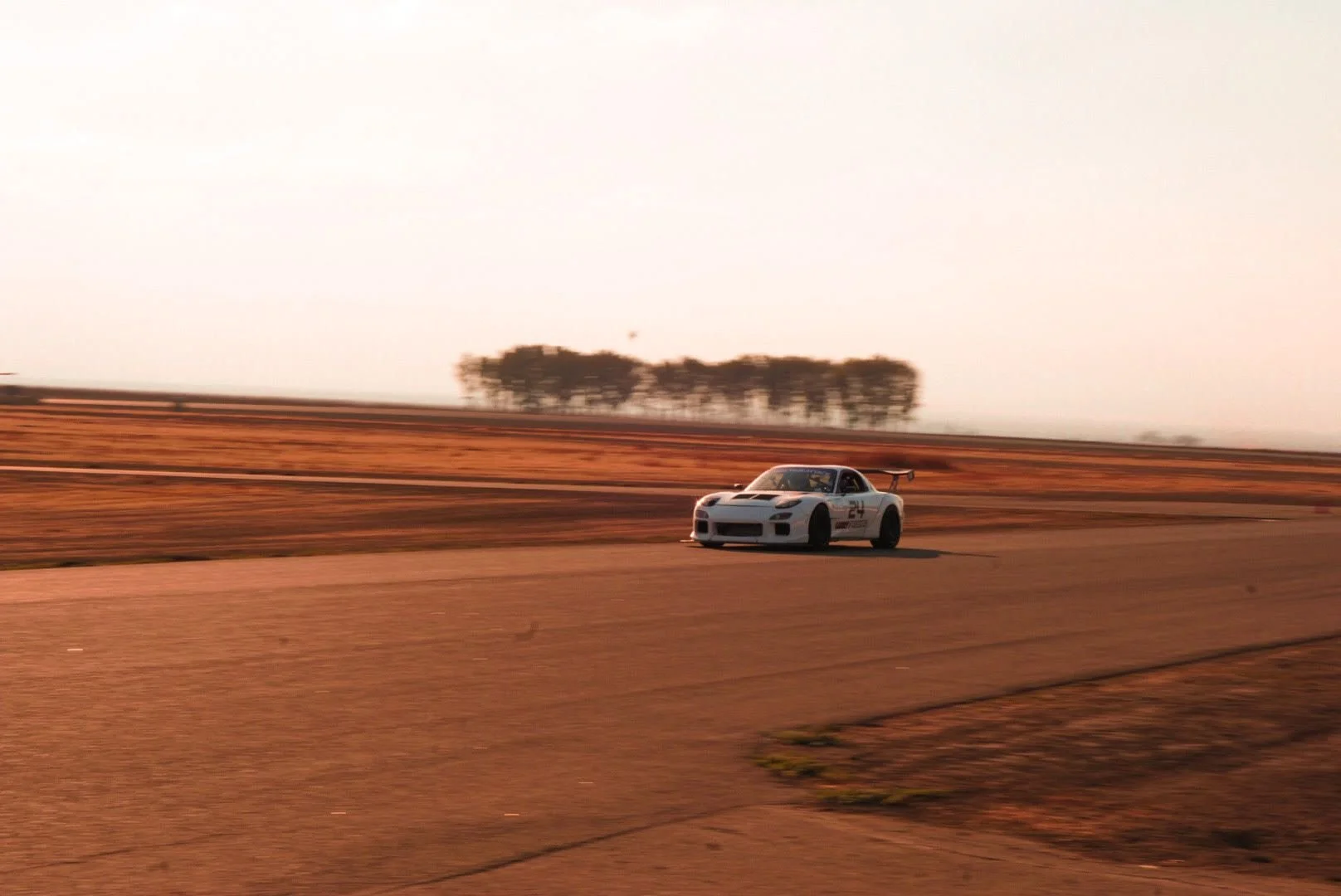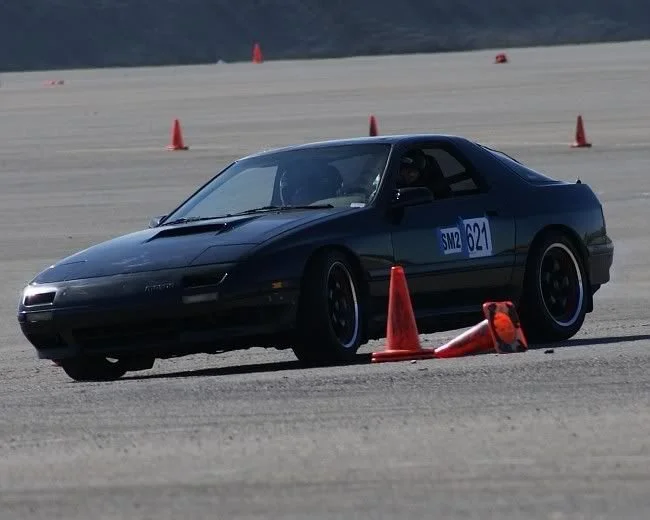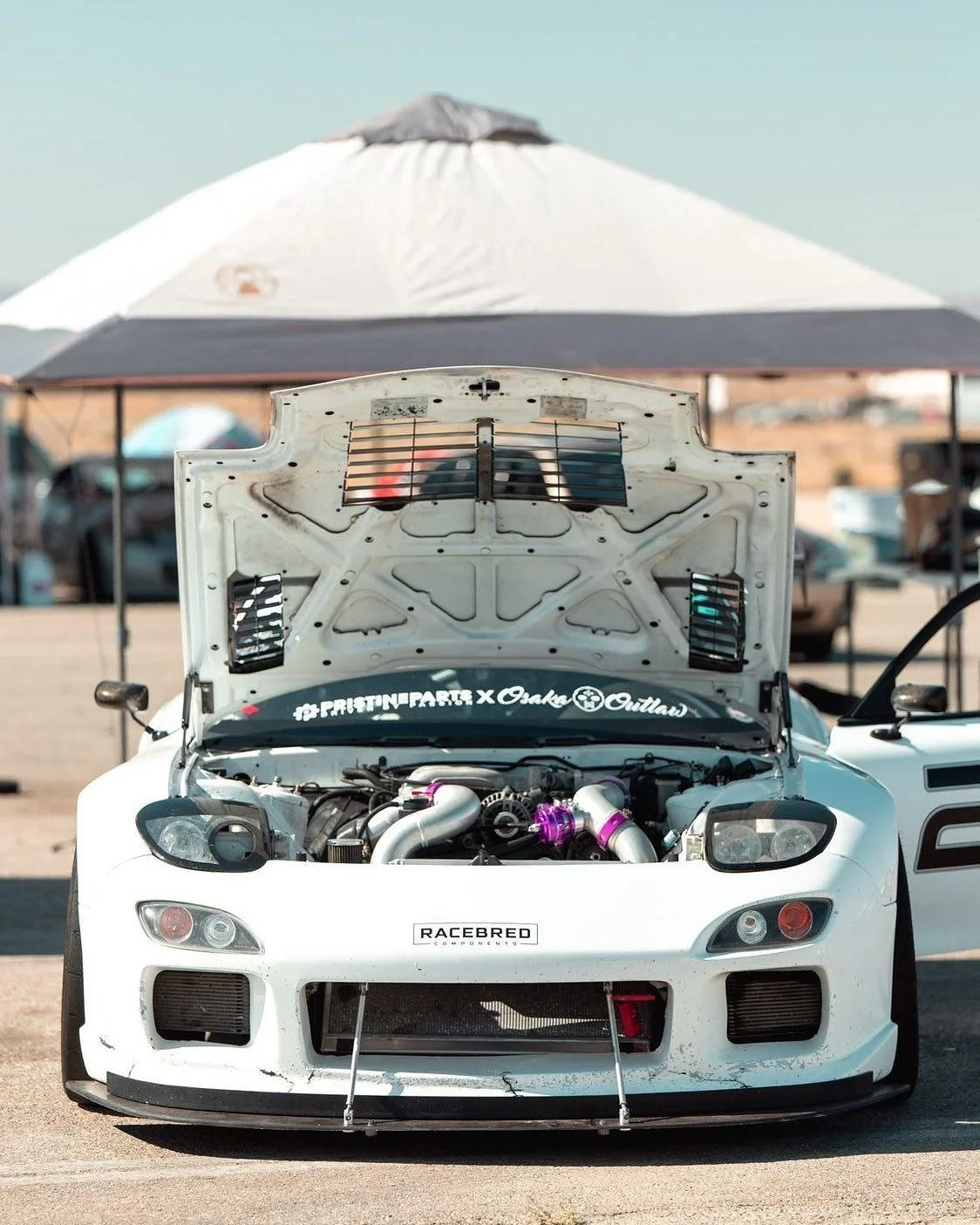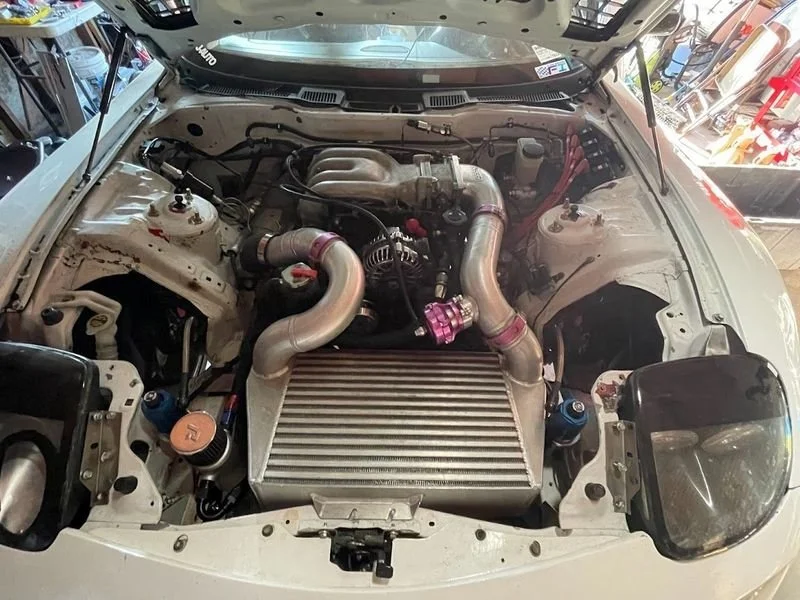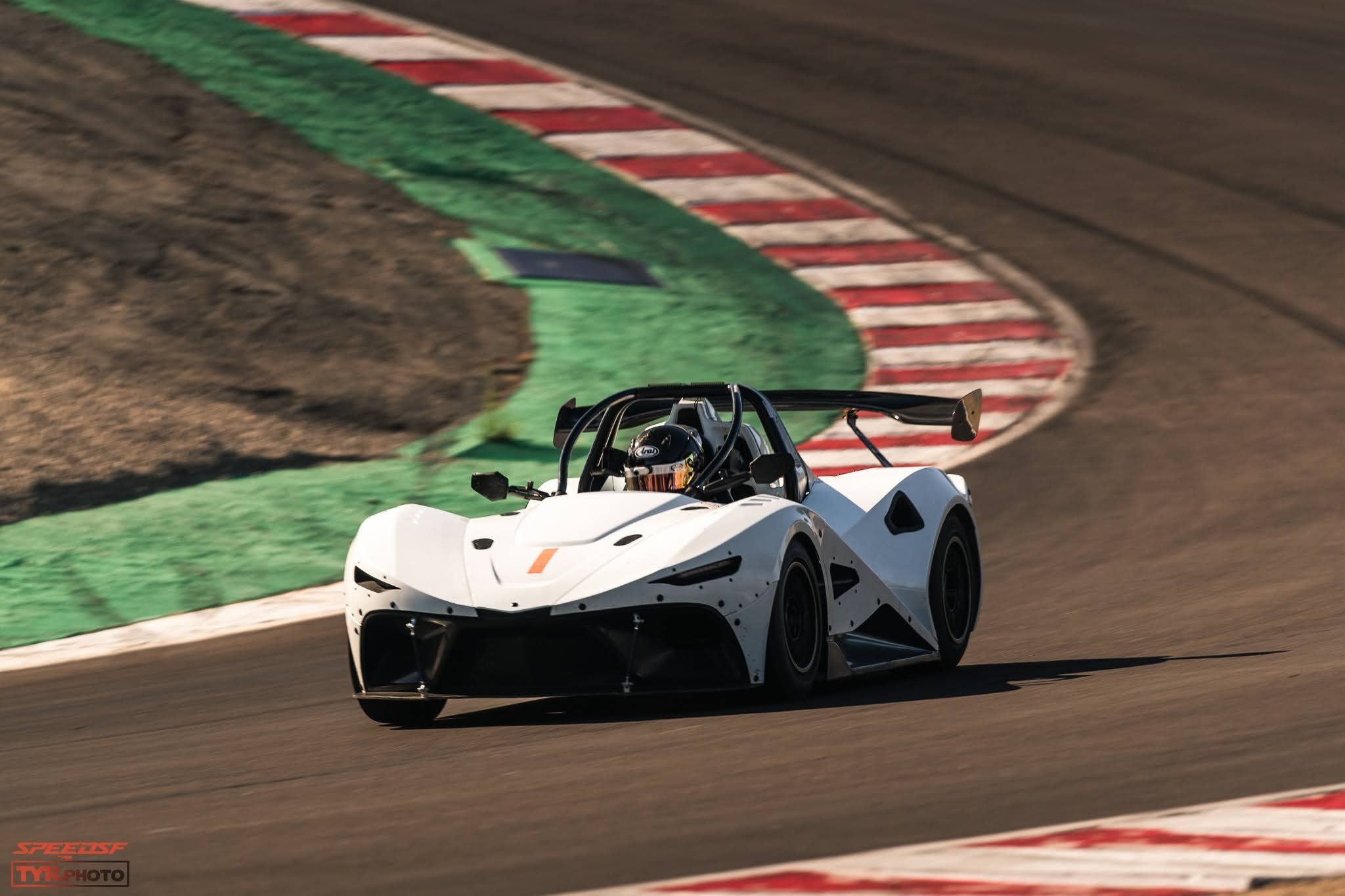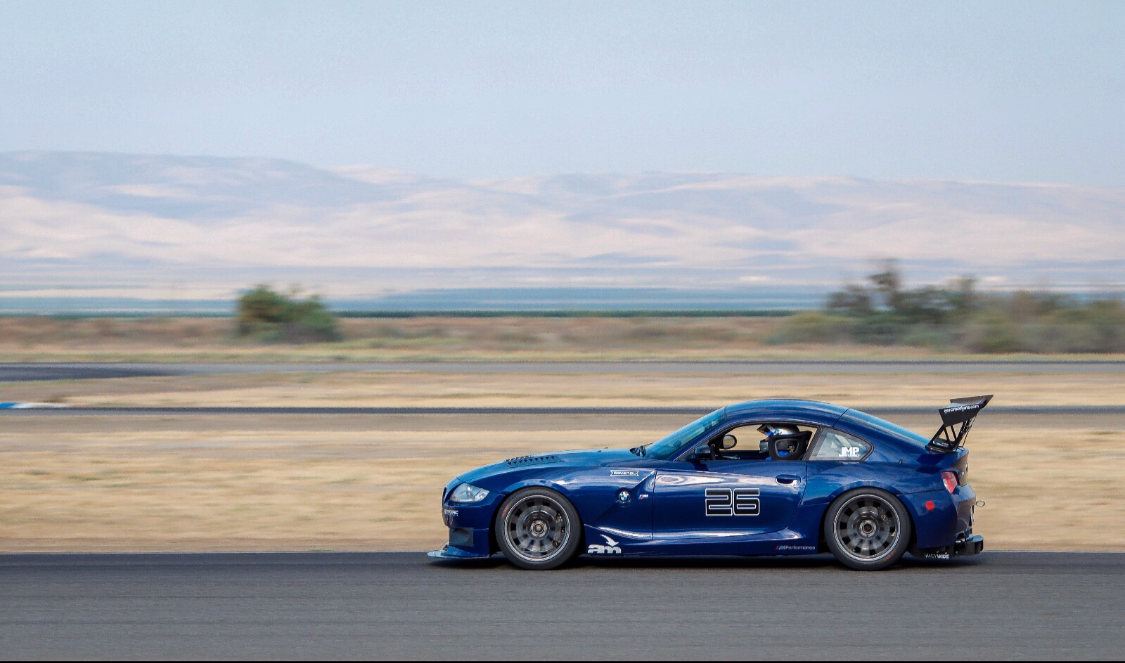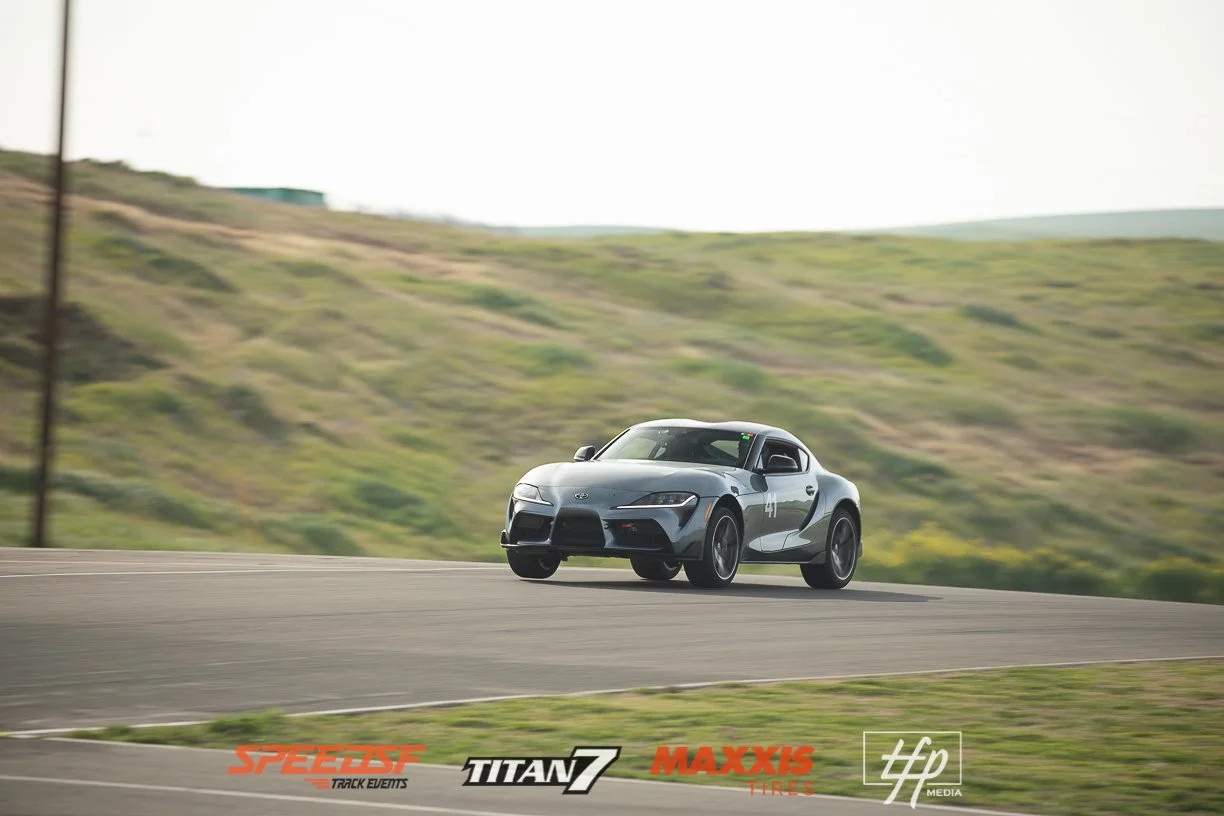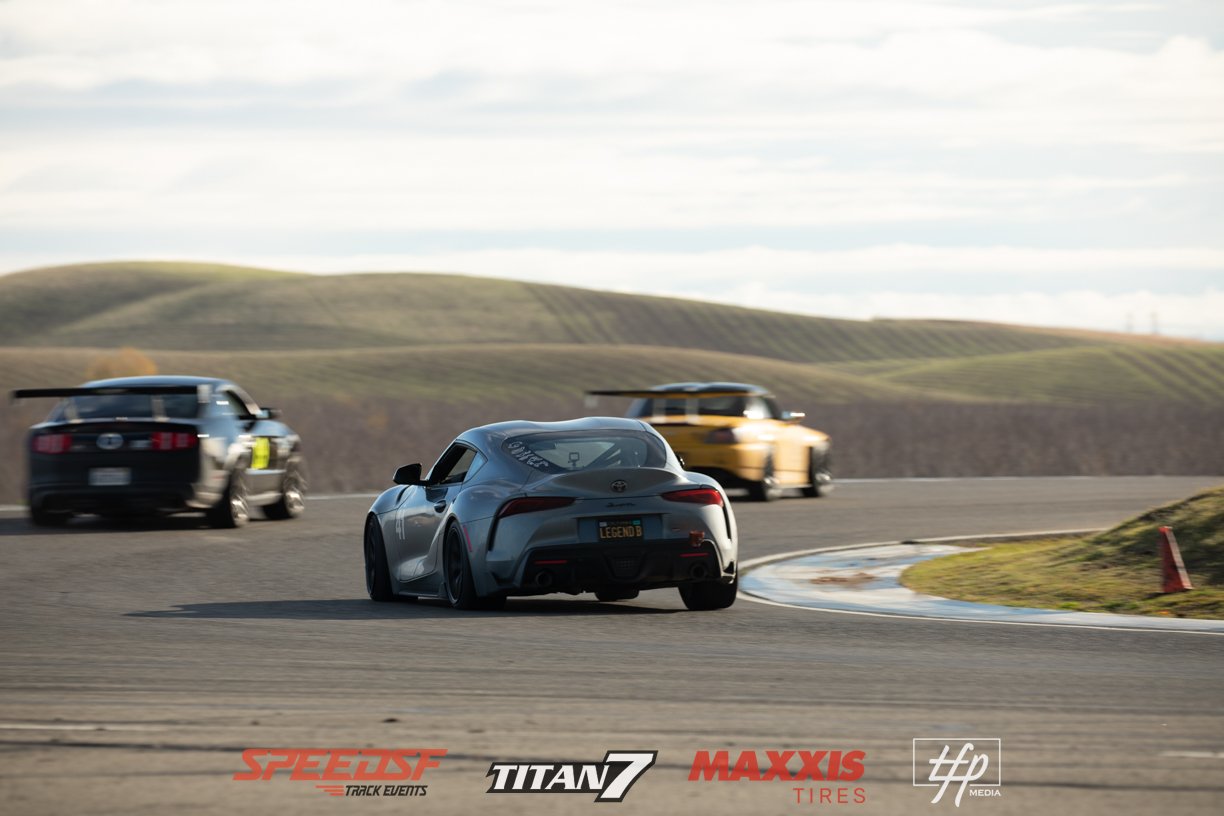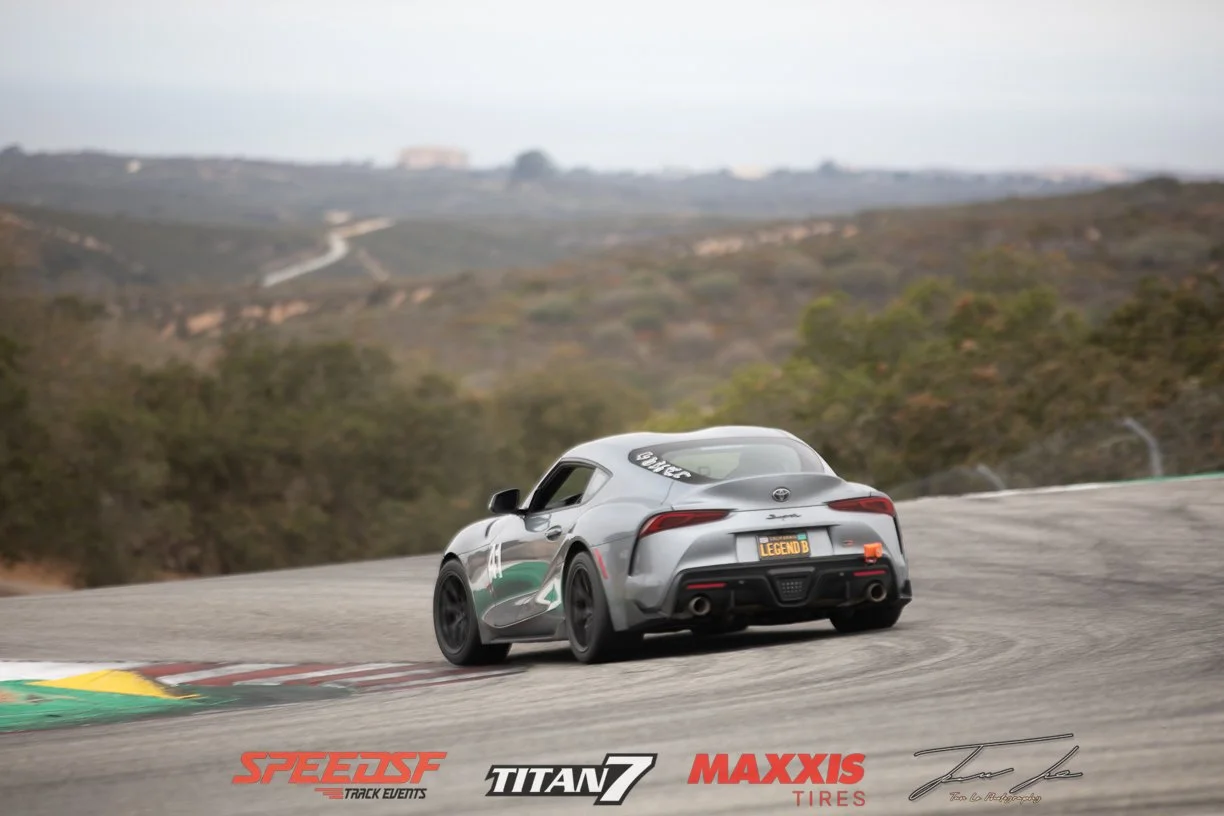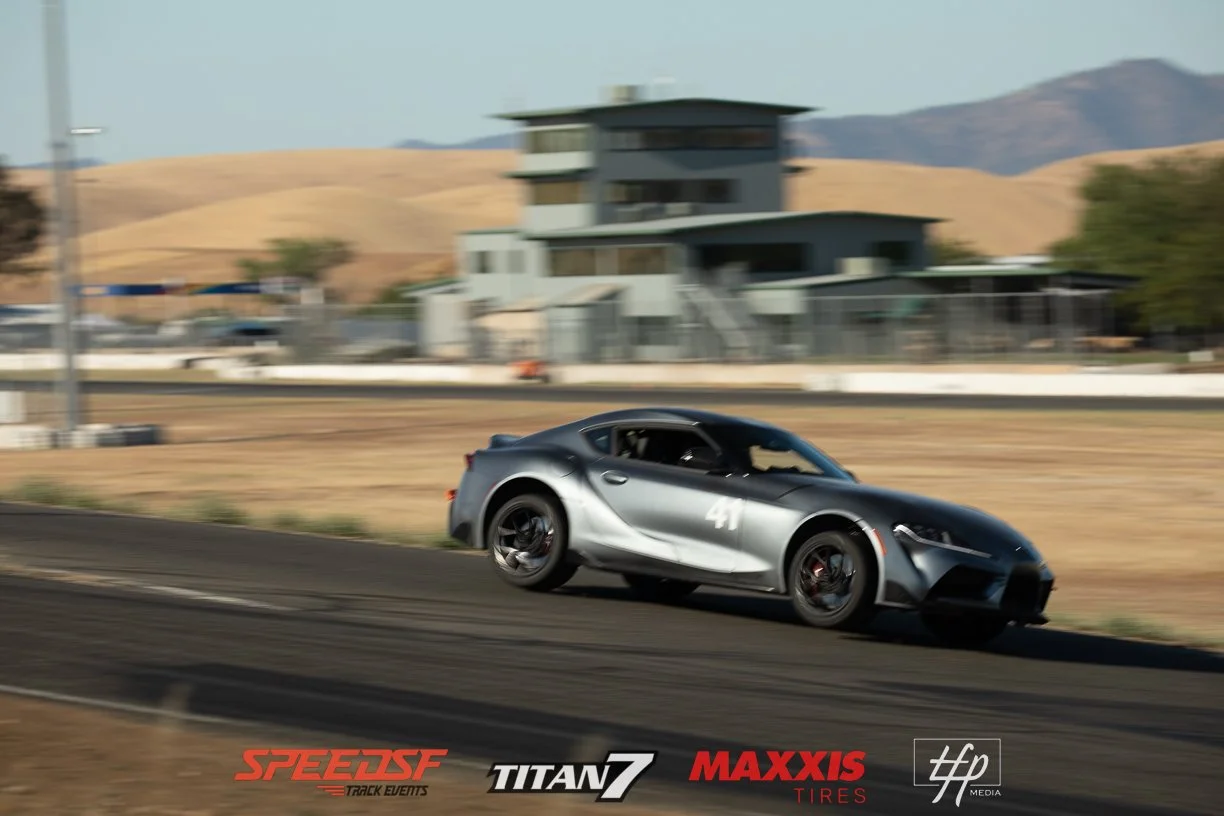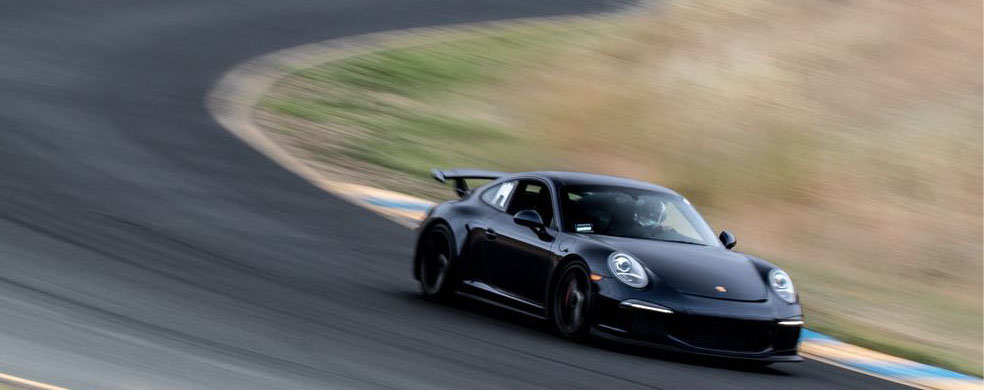
Richard’s MR2 Turbo: Not Too Pretty To Pirouette
Although Richard already had an E92 M3, he decided to spruce up his mid-ship sports car and spin his way into driving competence.
It began all the way back in grade school with Gran Turismo. A few years later, Richard Tran graduated from video games and started moving through the worlds of hard-parking BMWs and drag racing until his expanding network brought a few road racers into his life. When one of them invited him out to a track day with Speed SF in 2019, he accepted — albeit after some hesitation. He wasn’t interested in taking big risks — he’d seriously hurt himself in a car crash a few years before, and he certainly didn’t want to damage his M3, but the feelings of euphoria following that first session helped him forget about the potential costs of thrill seeking.
In fact, he’d been bitten badly enough to sign up for another twelve track days that year. Quickly, he put the dependable M3 on the back burner; he had a cheaper, lighter, more maneuverable mid-engined car he wanted to master.
His 1991 Toyota MR2 Turbo (SW20) might’ve been stock, but it looked about as stock as it did the day it rolled off the showroom floor. Three-stage paint, fresh interior panels, and completely new suspension components were all parts of a three-year restoration that culminated in a show-grade vehicle. Richard was so proud of it, he displayed it at SEMA.
Work Meisters and the OEM kouki aero was all that was needed to make the SW20 pop — it truly is a svelte, sexy car.
Despite its immaculate condition, it wasn’t too good to be used in the way he’d used his M3. In fact, Richard felt that he’d be missing out on something vital if he didn’t track it.
He had his head screwed on straight, but he didn’t quite have the quick hands needed to manage the MR2. After a tentative first track day, Richard realized just how different a ten-year-old M3 was to a thirty-year-old MR2. The factory components just wouldn’t cut, especially on all-seasons, so he replaced the rotors with slotted Stoptechs and slapped on a set of EBC Yellows. Along with those, he installed a set of Tein Super Street coilovers, a pair of GReddy side skirts, and a 1998-spec spoiler with lifted risers for a little flash.
The basic package was fun, but far from friendly. “I made the mistake of trying to drive it like the M3,” he began, “and that just wouldn’t work. I learned pretty quickly that I couldn’t throw it around or brake as late as I could in the BMW.”
The odd agricultural excursion didn’t dampen his enthusiasm for his demanding new car.
After many red flags and several stern conversations with the track workers, Richard learned he had to soften his inputs a little and improve the chassis a lot. The second-generation MR2 is known as a nervous car prone to rotate without much provocation, but it can be tamed with some suspension work, a little maintenance throttle, and the right sort of staggered tire setup.
Giving precedence to the rear axle began by fitting the rear wheels with 245/40R17 Federal RS-RR Pros — considerably wider than the 215/14R17 fronts. Then, Richard turned to Elite Performance’s Melody Cannizzaro to soften the sensitive midship’s edges. A little more front camber relative to the rear helped settle the driven axle while cornering, and a little more toe-in at the rear kept it planted under braking and acceleration. Then, as advised by his friends, Richard tried stiffening the front to minimize the nose dive under heavy braking, which could encourage the lightened rear to spin.
Minimizing some of that see-sawing gave him much more confidence in the car, and the resulting improvements in cornering speeds helped Richard notice a few more of its shortcomings.
It wasn’t the tight, direct thing he thought a lightweight MR car would be, but it was nearing a half-million miles. Sunshine Auto overhauled the entire suspension, adding new control arms, bigger sway bars, inner and outer tie rods, additional chassis bracing, and a set of 808 Racespec coilovers from Bob Pham. “The new setup made the car feel like a go-kart. Actually, the first day back at the track with these mods, I went six seconds faster than I’d ever gone before,” he exclaimed.
Richard’s love for the Sailor Moon series gave this car its eponymous nickname.
“Those modifications transformed it from a decent daily driver to an uncomfortable track car, but I still trust it enough to drive it to the track — it hasn’t left me stranded once,” he said. Pretty impressive for a car that just passed the 500,000 miles on the odometer. Chalk some of that up to build quality from the late-eighties Japanese boom, and some of that to Richard’s obsessive maintenance habits, and a little bit to the near-stock configuration of the power train.
Aside from a Mishimoto radiator an HKS SSQV BOV, and a Berk 3” exhaust, the original 3SGTE motor remains stock.
Aside from a splitter and a pair of canards, Richard doesn’t believe the car needs much more. Actually, he’s confident enough to admit he’s the limiting factor at this stage. “My friends will get in and go six seconds faster than I can, so I know I need seat time more than anything. Well, I could use a set of Sparco Circuits because I’m getting thrown around on the stock seats, but that’s about it.
For me, it’s the perfect track car — dependable, fun, and constantly challenging. I don’t really care about making it the fastest car here. I’ve got a ways to go as a driver, anyways. I’m not here to be the best — I just want to have fun, and in that department, the MR2 always delivers.”
“My track friends’ words of encouragement and support have been a driving force behind my journey; pushing me to overcome obstacles and strive for greatness. I rolled my car once many years ago and I was in the hospital for years. I thought I wouldn’t walk again. I now look at how far I’ve come and I’m thrilled with the progress and the friendships I’ve made along the way.
My wife did not want to see me in another accident ever again. Actually, she wanted me to retire, but she saw how happy I was attending track days with friends, so she now watches me track. I promised her I’ll never go completely flat-out ever again and I’m fine with that — as long as I get to see her smile.”
Special thanks to Elite Performance, The Driveway, and Sunshine Auto.
Joe’s AP1 S2000: Continuing Education
A couple years before forty, Joe Drane decided to finally give track days a try. Like with everything he’s pursued, he dove in with two feet and built a stunning S2000 in record time.
It wasn’t until Joe Drane moved out to California at the ripe age of 38 that he was able to try track driving for himself. Being a natural tinkerer and a bit of a hot rodder growing up, track driving had been a lifelong dream, but the opportunities for that sort of thing in rural Florida were few and far between.
After teaching him the ins and outs of network engineering, Joe started learning the cloud and found a few roles with startups in Texas. This created a focus on execution and continuous learning while also placing high value in data helped him put together a stellar resume in short time. This almost obsessive approach would later help Joe learn at a ridiculously rapid rate when learning the racing ropes.
The Land of Milk and Honey
After relocating to San Francisco to start a new role with Facebook, the assortment of beautiful sports cars lining the streets suggested he might be in the right place to learn to drive on track. He searched for ins on the pages of the local sanctioning bodies until he found an easier, more cost-effective way to dip his toe in the water.
Meanwhile, the need for a new outlet was getting harder to ignore. COVID weighed heavily on him, and while he loved his new job, it didn’t offer the distraction he needed mid-pandemic.
When he proposed running a few lapping days one weekend, his wife not only supported him in his decision, she helped him find an appropriate track car. Incidentally, the two had met at work after Joe spotted her leaving her S2000 in the parking lot. It only seemed right that such a car, the conversation starter, would help him start another love affair.
And so he picked out the cheapest first-gen S2000 he could find. This was several years ago, but even by the standards of the time, this car was affordable — and for good reason. “It was just a mess. It had no rear glass, the check engine light was on, the wiring was a rat’s nest, and the motor was ticking. I spent the winter restoring it, but I didn’t realize just how bad things were until I started working on it.”
Growing Pains
“I ran into some issues installing the aftermarket parts. The radiator wasn’t sitting low enough for the hood to close. I took it into the shop at BlackTrax to have it inspected, and there the mess continued to unfold. The radiator supports were bent, and I couldn’t purchase new ones anymore. I had to source the brackets from two fender cutouts from eBay.
Then we pulled the cylinder head and saw the valve retainers were cracked, there was a ton of carbon on the valves, and two of the cylinder walls were scarred. After ten track days, the transmission blew third gear. Oh man, what a nightmare it was.”
To mend the ailing engine and fortify it for track use, he replaced the block with rebuilt F22’s, then fitted a Radium catch can as well as Mishimoto’s radiator and oil cooler. Not eager to deal with another blown F-series, he wisely spent a few thousand more on a Link G4+ ECU to employ several failsafes and extract everything from the motor — mainly more mid-range torque and a peak of 227 horsepower at the wheels.The Link was then paired to an AiM MXG dash which to give him alerts and relay lap data.
Despite the early hurdles he had to cover, he remained willing and able to push on. The obsessive drive which fueled Joe’s career now had a second outlet; allowing him to research the engineering involved, pick parts, test them on track, and build a more supportive social network than the one which work provided him.
As it gave him a new lease on life, he didn’t hesitate to spend whatever was needed to turn this rough example of an S2000 into something exceptional. Within a few months, he’d added a long list of modifications to try and breathe some new life into this aging chassis.
After investing so much in the performance side of things, it made sense to apply an Inozetek wrap to help the car pop.
Among those additions were an APR splitter, a Voltex Type II wing, Rockstar Garage’s Feal two-way coilovers, and Stoptech C43 (F) and C42 big (R) brakes. Studying hours of onboard footage — namely Nate Hackman’s banzai laps — helped him understand just how much harder he could apply the brakes and how severely late he was getting to throttle.
In the interest of getting up to speed quickly, he skipped the cheap tires and went straight to a set of Yokohama Advan A052s, then wrapped them around a set of 18 x 9.5” Advan Gram Lights.
Though he’d already spent a small fortune on parts, never once did Joe agonize over expense during this introductory period. “I decided to pay for an education in racing since I feel it usually pays dividends,” he said. When his engine tuner Jei from BlackTrax offered to tag along to one HPDE at Thunderhill and teach Joe to study data, he jumped at the opportunity. “The telemetry revealed I was shifting a little too much, so we figured out the right shift points and instantly cut a couple seconds off my PB.”
The car was capable and reassuring enough for Joe to continue pushing, but asking more the car led to the standard Torsen differential failing. In its place, Joe put a Puddymod 1.5-way OSG and found the incremental improvement in power-down and stability motivating enough to invest in one other area that wasn’t quite up to snuff: dampers.
Joe knew the top-shelf option would make the car more quicker, more predictable, and less taxing to drive, so he splurged on a set of Blacktrax-built Penske 8300s. Even without much knob turning, the new dampers revitalized the car and helped Joe find the confidence to commit to the quick corners. “My favorite mod, without question. I dropped six seconds off my previous best the first time out on the Penskes. Worth every penny.”
Continuing Education
Learning to wrench and approach the track from a theoretical perspective helped him progress, but never having attended a racing school, he started to wonder if there were ways to improve his technique post-haste. He enrolled in a few drift courses to study the art of oversteering, and soon felt at ease asking the S2000 to rotate a little more than before.
Both his approach and the S2000’s setup are far from perfect, and Joe’s wise enough to admit that. “I haven’t thought much about adjusting the dampers — most of the time I just leave them in a neutral position and try to drive as best as I can.”
But the results from a relatively short time spent on track speak for themselves. He’s learned at a remarkable rate and, with a little more guidance from the knowledgeable group of friends he’s made recently, he’s bound to be fighting for podiums at the front of the S3 class sometime soon. He still has a few points to play with — and they’ll go towards a Zebulon rear wing, a larger Alumalite splitter, and Professional Awesome tunnels.
Joe’s studious nature has also helped him better understand the endless tradeoffs that building a track car requires. While the major cost associated with getting a rough car off the ground can eat into an aspiring driver’s budget, the peace of mind that comes from driving a flawed, imperfect car can help a driver push hard — harder than they likely would in a pristine example. That’s why he has no regrets taking the rocky but fruitful and informative path he took.
Michael’s 350Z: Take A Chance, prove a Point
Looking for an affordable drift car, Michael “Stubz” Stillo grabbed a 350Z and started driving sideways. After some time, he recognized the car had potential as a track car -- as long as he could accept a few shortcomings.
Twelve years with an unloved chassis has given Michael “Stubz” Hillo a unique perspective on taking the underdog route. There are other established, well-paved paths with minimal maintenance and certain outcomes, but they don’t offer a maverick a chance to prove a point.
Stubz took it upon himself to take the unloved 350Z and make it into a NASA ST4 race-winner because, well, he hated the idea of conforming. However, before he started his mission, he was after an affordable way to begin drifting. Nowadays, the 350Z is one of the few Japanese sports coupes that offers the sort of value the budget drifters offered back in drifting’s heyday. Even then, it was pretty cheap.
It was more than just an option for the cost-conscious drifter, as Stubz realized. Beyond low overhead, a torquey motor, and a rear-drive layout, the Z has a lot going for it. It’s reasonably stiff, the aerodynamics aren’t terrible, and the aftermarket is decently sized. It might not be as well supported as the E46 M3, but it offers similar power-to-weight figures and the potential to run respectable lap times at a fraction of the price.
The zeal and the commitment to proving the platform came later — at first, it was cheap fun. Beating up on pricier cars was only part of the pleasure; the steering was full of feel and responsive, the motor responded well to modifications, and the rear end put the power down decently.
Some of that luster began to fade when he tried to turn the Z into something more than a midfield car. The budget modifications no longer seemed to be enough, and so he tried experimenting with the high-end brands which only offered limited support for the Z.
After testing Penske and Godspeed coilovers, he settled on MCS two-ways with 18K springs up front and 9K in the rear. The car still lacks some of the compliance he’d like in slower corners, but it works well enough in the fast sections, thanks in part to Epsilon+ aero, that the compromise is acceptable.
The most irritation has stemmed from the car’s flawed braking system. Persistent knockback issues and lousy OEM ABS pushed Stubz into spending hundreds of hours diagnosing and attempting to find a package that would work.
Plenty of thrown wrenches and a thousand curse words later, he found a set of Stoptech Trophy big brakes that did a reasonable job. Because they moved the brake calipers closer to three o’clock, they mitigated some of the knockback resulting from the steering knuckle flexing. The remaining bugbear was the ABS system, which needed to be retrofitted with the Bosch Mk60 kit from Race Harness Technologies.
Though the braking system works decently these days, Stubz isn’t completely satisfied. Trailbraking has improved, but the outright braking performance hasn’t gotten much better. However, some of that has to do with the weight of the vehicle, which has been hard to lose with conventional stripping methods. “You’ve gotta get pretty creative when it comes to putting the car on a diet. I didn’t want to, but I had to buy carbon. Hatch, hood, front bumper, and headlight blanks from Spinnaker Composites have helped, but the car is still heavy.” he explains.
It’s transformed into a reasonably swift car in recent years, even with the diminishing returns from spending big bucks on primo parts. The 3,200-pound Z has an average of 257 horsepower which is pretty well administered thanks to 275-section Toyo RRs and the aforementioned aero. A broad powerband helps make the car less track-sensitive than some, and, anyways, Stubz no longer agonizes over finding the perfect setup. After several years of head scratching, he sees the Z as a dependable, safe, and sturdy car which is easy to run and satisfying to drive. Going for the gold isn’t his aim any longer — he’s happy with what the 350Z’s speed. Any car that can lap Buttonwillow W13CW in 1:54 is more than just fun — it’s seriously fast.
Striving to perfect the car sapped some of his ambition, but it’s also given him a few notable wins, wisdom, and a pragmatic approach that provides him with peace of mind. His lack of zeal might not motivate newcomers to try and beat the odds, but if they read between the lines, they should realize that there’s nothing with the Z as an entry/mid-level car. It might not carry an ambitious driver to the top of the podium, but its golden era-pricing lowers the barrier to entry. It’ll help them get involved faster — and in Stubz’s view, that’s better than sitting on the sidelines and dreaming of victory.
Max’s Spec Racer Ford: Lose The Ego
After cutting his teeth in a Porsche, Max got an inkling that going to a lighter, cheaper, more expendable device might expedite his improvement as a driver and budding racer.
After Max Gokhman signed for his 2006 Cayman, his dealer insisted that he take the car to the track. “You won’t be able to fully appreciate it if you don’t,” he said. Max was hesitant — the thought of balling up his brand new Porsche terrified him, but, at the same time, he sensed the man knew what he was talking about.
Max continued to mull over the prospect of tracking his new toy, but his dealer was adamant — so much so he offered to pay Max’s entry fee. That was all Max needed to make a decision. The next weekend, he took the Cayman to Infineon Raceway and began a love affair that never tested his patience. No crashes, no major repairs, and a relatively straightforward relationship with his parts suppliers made his first few years in grassroots motorsports a breeze.
Soft Ascent
After becoming the 2014 PCA Autocross Class Champion and multiple podium-sitter in various Southern California time attack series, he sold the 987 and moved into a 2014 981 Cayman. This time, however, he wasn’t as eager to modify the car. He’d come to understand the practical shortcomings of a track-oriented car and felt he might get more from the ownership experience if he was to leave the car mostly stock.
It was around then that one of his track buddies enticed him into wheel-to-wheel racing. This would entail buying a race-only machine. Truth be told, he had considered it for some time, but the thought of wadding up a Porsche racing car turned his stomach. Even getting on track in one would be prohibitively expensive, so he explored the cheaper options available to him.
He could drive a Spec Miata for a reasonable price, but he wanted something a little different. “I was looking for a mid-engined, purpose-built platform, and — and this is subjective — something a little more interesting than a Miata,” he explained.
He loved the idea of running a “spec” car: something that encouraged close competition through mechanical parity. What about something with the same power of a Miata, but in a car which weighs one thousand pounds less? The tried-and-true Spec Racer Ford, a staple of grassroots motorsport for the last fifty years, caught his eye. Mid-engine, open-top, closed-wheel, and very cost-effective; there was a lot to like about this diminutive, bare-bones racer.
Barest Bones
The tube-frame chassis has a 1.6-liter engine from a Ford Focus sitting transverse behind the driver. These sealed engines produce 135 horsepower, and are fairly inexpensive to replace when they go bang — though this rarely happens. The emphasis here is on reliability, low running costs, and complete driving immersion.
When Max first tested the car at Laguna Seca, he was setting competitive times by the end of the day.
The sense of occasion is something that can’t be underestimated with an open-top car like this. Not only is the visibility fantastic, but getting your helmet buffeted by the wind makes driving at seventy feel like a hundred and twenty. The information relayed by the car is detailed and constant; it’s easy to feel a locked tire or growing understeer through the steering, which is remarkably sharp. “Feedback is crystal clear,” he adds.
Sitting in the middle of the chassis and knowing exactly where your front wheels are at all times inspires confidence to get real intimate with other racers when going three-wide into a turn - truly what wheel-to-wheel is about.
Some might suspect that a car this visceral and direct would come with sharp edges. In reality, it is predictable and communicative, and, as it has much more grip than power, it’s quite easy to find its limits. When it does slide, it’s fairly progressive — more so than the Cayman; nearly 300 horsepower would cause a few dicey situations when passing in a late-apex turn. Some of this is due to a compliant suspension setup, and some of it is due to the Hoosier slick made specifically for the SRF. Incidentally, it isn’t the most expensive tire. Low weight and low power help lengthen its lifespan, too.
The sequential transmission by Sadev, standard in third-gen SRFs, is another racecar element that Max learned to appreciate. Unlike an H-pattern, which is lovely for canyon drives but saps attention from racecraft; or a PDK, which is clinically precise yet fragile on cars that were built for the street; the SRF gearbox lets you bang out shifts while bouncing off the rev-limiter with abandon.
Perspective Shift
Max admits that, while the Spec Racer Ford is the more engaging car to drive, he doesn’t have the same sentimental attachment to it as he had to his Cayman. “I save the sweet feelings for my Porsche. This is a tool to help me grow as a racer. I compare the distinction between the two to owning a pet versus owning livestock.”
And with the reasonable running costs, packed fields, low power, and full calendars, he’s looking to become a competitive amateur racer as he gets up to speed on the Spec Racer Ford platform, with the help of his team Accel Racetek.
“Once I got competitive with this hobby, I learned that money spent on coaching would make me a lot faster than aero, suspension, or other bits of kit. To me, some of those seem most like things to flex over. With Perry and Travis of Accel Racetek, I not only know that the car will be ready for the next race no matter what tomfoolery I get up to on track, but that they’ll keep nudging me to be a better driver.”
Ultimately, the moral here is that with racing, as with any other passion, dropping your ego — such as by going from a venerable Porsche to a humble Spec Racer Ford — may prove to be the path to success, paved with smiles.
Sonoma’s Recent Repave Helps Set New Records
Sonoma’s recent repave — the first in over two decades — has helped Speed SF’s fastest set new records in three of the Challenge groups.
Speed SF’s drivers were fortunate to be the first members of the public to experience Sonoma’s new repave — the first in twenty-three years. One of Northern California’s most popular race tracks, Sonoma has been the site of NASCAR, IndyCar, and World Touring Car races over its fifty-five years.
Construction began after Christmas, with ABSL Construction of California milling out over 10,000 tons of asphalt from the track and pit lane, then grinding down the track, repairing old cracks, and laying the new asphalt.
Crack sealing in January.
Construction completed on February 23rd, two weeks before Speed SF was able to experience the new surface for ourselves.
The scenery was verdant, but the repave was far from green at Speed SF’s first full-track event of the season — enabling some of our front-runners to set new records in three of our Speed SF Challenge groups. Even those who hadn’t set new records set personal records. “The track is about three seconds faster than before,” Patrick Chio reported.
S4
In S4, Sean Win-Yepez cut 1.1 seconds off his previous best.
“There is more grip everywhere, but the gains are especially noticeable in T3/3A. There, there was so much grip that my power steering started to cut out!
One observation is that the curbs are not redone, so they now offer relatively less grip than the track itself, whereas before they were essentially about the same as the pavement. So, drivers who didn't use the curbs before will pick up more time than drivers who used them a lot.
My setup has remained pretty similar to last year, and I don’t think I benefited as much in the traction zones as some of the more powerful cars,” he added.
S3
In S3, power helped spread the distance from the previous bests a bit further. Spencer Kimball chopped the previous S3 record, set by him last May, by 2.59 seconds. In the last fifteen months, nothing about his setup has changed aside from some weight reduction. "The new paving really helps with consistency and driver confidence. Thanks to the smoother surface and lack of cracks, you can now take T1 and T2 on proper line instead of diverting your path to avoid surface undulations. I have yet to analyze my data and compare it to my previous run’s, but my lap times were about two seconds faster than my last event at Sonoma in 2023.
Based on my quick and dirty analysis, time was gained in T1, the exit of T6, and the T8/8A esses. One of the coolest features of this totally fresh paving is that my tires looked brand new after the event. Once it's rubbered in, I think we'll be seeing a lot more sub-40 cars at Sonoma,” Spencer predicted.
S2
In S2, Maxwell Lisovsky was able just to show what his monster E36 is capable of. It has benefited from the most development as of late, but that doesn’t take anything away from his staggering 1:39.3 — a whopping 3.5 seconds faster than his previous best. Now, applying the power cleanly in second-gear corners is almost an afterthought for a sorted track tool wearing slicks.
It seems that, due to gaining something more in the traction zones, the punchier cars have been able to take better advantage of the new grip available. However, even those in the budget cars and the underpowered scalpels will find something to love about the fantastic new surface at Sonoma Raceway. These times bode well for the future, which promises novel challenges for drivers and opportunities to push harder than they ever have before..
To sign up for Sonoma event on June 21st, click here.
.
Aidan’s GT3: Vision Realized
Driven to realize a very specific dream built on years of tuning high-revving Hondas, Aidan decided that this 991.2 GT3 would have the subtle cosmetic touches to wow crowds and the high-end racing modifications to set seriously impressive lap times.
Photo credit: @z_stills & @tengerphoto
As Aidan Vo moved through adolescence, his affinity for cars carved out a prominent place for him in the San Jose drag racing scene. After he built an all-motor DC2 Integra capable of twelve-second passes, the big magazines came calling. This was the early 2000s, when the tuning scene was enjoying its biggest boom.
Through some of his drag racing acquaintances, Aidan eventually made the leap into road racing. Following his foray at Thunderhill, he started outlining a list of changes the Integra needed to become a corner carver, and for a moment, it looked like Endless might foot the bill.
So Aidan began disassembling the Integra and shelving the parts which wouldn’t do much good around a road course. Halfway through the teardown, he had a change of heart. He parted the car out, sold the chassis to another racer, and decided to hitch himself to the all-wheel drive wagon that’d just reached American soil.
It was in a Subaru WRX STI that really learned how to turn fast laps. His confidence bolstered by the safe, accommodating four-wheel drive, he earned his spurs in relative comfort. Then he switched camps and built a cost-no-object Evo X, which earned several magazine spots. Not only had he become well known and capable around a road course, he’d been rewarded for expressing his inner vision.
As his income grew, he started searching for a new platform. Something with a little more panache — something German.
The big Audi RS4 might not have been at home on the track, but the fit and finish of a plusher, posher machine did spark his imagination. There was something distinctive about it; something which resonated with Aidan and his appreciation for high style. The jump into the Euro market got his imagination running, but, unfortunately, that would be the extent of his involvement with cars for some time.
After living through the height of the tuner craze and enjoying all that the burgeoning market could offer, Aidan stepped away from cars to focus on his career and his growing family. All throughout this quieter interim, he couldn’t successfully quiet one part of his mind. “I missed that buzz; I had to create and build again,” he reflected.
Ten years of car-free focus had done wonders for his finances. Not completely car-free, however; he spent many evenings over that decade drooling over builds his younger self could never afford. When Aidan decided to return to his old hobby, he brought with him the means to realize a plan he’d held for a decade.
“I’ve always been captivated by the Porsche 911 since the 993 generation,” he began. “It’s always had a clean, restrained, understated design — that’s a big part of my aesthetic.”
A few weeks later, he rolled his new 991.2 GT3 into his garage, parked it, and pictured the finished product in his mind with all his planned modifications. The challenge he’d set for himself was considerable, but he had a clear plan and a few connections to help him along.
The Singer DLS was the one machine which inspired the build. “I’m not a Porsche purist who doesn’t believe in tinkering on their car. I see a Porsche as a vehicle that I can use to promote my vision.”
Knowing that the name Manthey was synonymous with Porsche performance, he did what all GT3 owners with grand aspirations for their build would do: purchase Manthey’s complete suspension, brake, and aero package.
There are only a few GT3s equipped with these parts in the Bay Area, and for good reason — one kit costs as much as a newish economy car. Most struggle to justify spending nearly thirty grand on Manthey-tuned KW dampers, solid bushings, brake lines, pads, dry carbon wing, as well as a Cup car’s front splitter, but the resulting crispness and composure is worth it to those with discerning taste and deep pockets.
Perhaps the one downside was that, for all that money spent, the car didn’t look much different than it did prior to the modifications. With so many Porsches looking so similar, Aidan decided to give a nod to the Porsche styling of yore by replacing the factory GT3 wing with a Porsche Sport Design ducktail. He learned shortly after just how difficult it would be to swap out this piece, retain all functionality, all while using OEM Porsche parts — and only OEM Porsche parts.
A hundred calls to local dealerships resulted in the same sad message: “on indefinite backorder.” It took months of perusing before he found an appropriate ducktail from a local owner looking to return his Sports Design-equipped car to stock, but he finally found the part. With the ducktail in hand, he felt as if the build were gaining a momentum of all its own. “Finding that part gave me the confidence to continue doing things the way I want to do them. Everything happened so organically, it almost felt like destiny.”
It’s subtle, but it sets it apart from the rest of the winged GT3s driving around San Francisco.
Of course, the body and the engine underneath would require several tweaks to accept the new boot-lid. Aidan had to source a 911R intake, 911R engine cover, the hinges, every nut and bolts and the oil return lines to allow this new body panel fit snugly. Unfortunately, What would seem to be a simple swap took months and countless emails.
The tradeoff was obvious. “The ducktail definitely makes less downforce than the original wing, which I learned when trying to go flat over Turn 1 at Laguna Seca, but it helps with rear visibility.”
With used 911-money spent on the suspension, it would only make sense to do the same with the powertrain. With Dundon Performance on the phone, Aidan specced out an engine package that would uncork the power of the 991.2 GT3, more mid-range torque and a top-end that reminded him of some of his fastest Hondas.
Dundon provided him with an intake, throttle body, plenum, and headers. JCR provided their titanium race pipes and titanium exhaust tips. The combination of these parts together allows the car to scream like an RSR at redline while keeping a deep, sonorous growl at lower revs.
With the way the GT3 was evolving into something like a racing car, Aidan decided to try and give his car the front track and aerodynamic grip of its race-only sibling, the GT3 Cup. He rung up his contact at Manthey and ordered the primered fenders, flares, splitter, bumper, and crash bar from a bonafide 991.2 Cup car. His painter Jesus matched the new parts perfectly and even achieved OEM paint thickness.
And now Aidan has something that is undeniably his own. Even if it were for sale, his buddies would never attempt to buy it. “‘It’s so obviously his, I wouldn’t ever feel like I owned the car,’ one of my friends told me.”
But is it a show car or a track toy? Aidan doesn’t believe there needs to be any distinction between the two. He’s made steps towards having both distinguished looks and serious performance, and all that he’ll need to do to suit his mood is change a few bolts and reorient the engine fans.
“As pretty as the trunk is, it definitely lacks downforce compared to the Manthey carbon wing. I’ve planned ahead to regain the downforce we all crave at the track. I have a Cup decklid and wing ready for track days. That arduous ducktail swap was done specifically to allow swift decklid swaps when it comes time to take the GT3 back to the track. All you have to do is reorient the fans to fit the subframe brace. After that, you’re off to the track.”
At this point, he feels he’s nearly realized his vision. Aidan cannot see himself selling the car, but that doesn’t mean he’s going to make it a collection piece. Instead, he’ll put it through its paces, enjoy it as both a driving tool and a rolling piece of art, and hope that his commitment and the car’s obvious quality will inspire the next generation of speed freaks with an eye for design.
Scott’s Turbo Miata: Slippery Slope
Halfway through a warm afternoon session at Buttonwillow, Scott Smith found it getting progressively tougher to get his Nismo 350Z into gear. He pulled in and quickly found the source of the problem: a failed clutch slave cylinder, a common issue with the Z33 HR platform. Soon, it was impossible to get the car into neutral, so he stalled it, called it a day, and limped it home to San Jose.
Before Scott left, SpeedSF’s Don gave him a chance to sample a svelte sports car — something to help lift his spirits a little. Don’s 1999 Mazda Miata was fairly basic, but with a built motor, sticky tires, a roll bar, and a racing seat, it provided the sort of thrill Scott was searching for. After a couple sessions in the refreshingly direct Miata, he started wondering what he was doing with the big Nissan. “If you decide to sell it, give me a call,” he urged Don.
One year later, Don made that call and Scott made the Miata his own — and began putting his mark on it by squeezing a little more out of the motor, which was already pretty peppy by 1.8-liter standards. Scott added a Skunk2 throttle body, a Mazdaspeed Miata exhaust cam, and the JDM flat top manifold for a total of 163 wheel horsepower and 140 lb-ft of torque.
It didn’t need much more for fun laps at half the Z’s cost, but Scott decided to splurge and lay the foundation for a grand build. The top-shelf Xidas, housed in 500 and 900-pound springs front and rear, respectively, may have been a bit much for such a basic car, but they did futureproof the build. He didn’t know it at the time, but he was just beginning a long tumble down a slick hillside towards excess.
To capitalize on the bump in power, Scott installed a Mazdaspeed six-speed gearbox and an OS Giken 1.5-way differential with a 4.77 final drive. While Joe Chang was building the diff, Scott asked him to build a custom splitter and air dam to glue the front to the track. For some time, this and a rear gurney flap was enough to keep him contented, but eventually the allure of a big wing thing caught his attention and he bolted on an APR GTC 300 at the rear. Though the spring rates were borderline overkill prior to adding the aero, they made it so he didn’t have to alter the suspension to support the moderate downforce produced by the the new elements.
In Scott’s mind, the Miata was then about as fun as anything in that price range. For something that could lap Laguna in the 1:42s, it was reasonably practical, too — practical enough to drive to the track and back in relative comfort. Since his main aim was getting the most out of the basic package he’d put together, he didn’t feel the need to touch the car for some time. Instead, he focused instead on maximizing seat time, and the approach paid off quickly; he soon broke the two-minute-barrier at Buttonwillow 13CW with a 1:58 and set a SpeedSF Challenge S5 record in the process.
That no-stress, no-mess lifestyle was addictive, but, whether he wished it or not, it had to come to an end. Most people start seeking big upgrades to again experience the spark that drew them to the car in the first place. In Scott’s case, a major modification was almost forced on him after a connecting rod punctured the block and started a short but violent oil fire. That day, several onlookers witnessed a Miata-sized fireball rolling down Sonoma’s drag strip. Thankfully, George Kibilov, then driving the car, was prudent enough to wear his fire suit and emerged unscathed. The car did not fare as well.
Thankfully, aside from the perforated motor, the damage was largely cosmetic. The rear bumper was scorched as well as the underside, but not beyond repair. Scott took the opportunity to go two feet in and make what was once a mild street car into a single-purpose track toy.
The second stage started with a return to Joe Chang for a custom motor. Joe directed the build and, since Scott was planning to turbocharge the motor, he suggested 9:1 compression, Wiseco pistons, Supertech valvetrain, ACL bearings and bolts, and a “secret Joe Chang spec” head.
Before Scott decided on the right whistler, Joe directed him to Jei Chang at Blacktrax for tuning. Jei advocated for the Adaptronic ECU and a GM ethanol reader so that the engine was both reliable and adaptable enough to accept different blends.
The turbo kit came courtesy of Ed May of 949 Racing. Ed had already run the kit on his own track car, but decided he’d be better off without a blower after deciding to return to autocross. The kit consists of an Absurdflow log manifold, a Garrett GT2871R turbo, a 3” exhaust, an upgraded Walbro 255 fuel pump, 1000cc ethanol-compatible injectors, a custom oil cooler and pan baffle, and an upgraded oil pump.
On a conservative twelve pounds of boost, the motor makes 254 horsepower and 208 lb-ft of torque at the tires. Added power was only part of the appeal — the kit was completely troubleshot, and the GT2871R promised near-instant response.
Jei’s tuning helped shape a flat, broad and usable torque curve — so usable that Scott can use fourth gear exiting corners which once required he use second. Jei programmed the AIM MXL dash to warn Scott of unsafe conditions. The AIM also reports the ethanol rating and self-adjusts the boost based on said value.
The added torque doesn’t change the driving experience much, but Scott did beef up the brakes and tires after boosting the motor. A set of Wilwood Dynapros up front and Maxxis RC1s on 10” 949 Racing wheels all around helped him brake for and accelerate out of corners in much the same way he would when his motor made half the grunt.
The turbo motor has been reasonably reliable in this guise, but there’s no getting around heat issues in the middle of summer. After three turns into a hot lap at Laguna Seca, the AIM warned Scott of creeping oil and coolant temps. The brakes had a habit of getting soft, as the turbo is just inches away from the brake fluid reservoir. Ducting and vented hood louvers proved valuable at the next event, keeping temps in check. As for the brake fluid, Scott wrapped the reservoir in an ‘aerospace thermal blanket’.
With the times kept falling rapidly, Scott began thinking a little masochistically. He figured that, since his car was well past the point of streetable, he figured he may as well take the next steps in his search for additional speed and scrap any hopes of keeping the car civlized.
Then Scott stripped the car and hired Tony Colicchio to install a full Spec Miata cage. Tony knew that weight was still a primary concern with this super Miata, and thus the cage was kept as simple as the weight, power, and outright speeds required; extra bars would only slow it down.
In its current configuration, the Miata weighs just 2,250 pounds. Being that svelte is a major factor when navigating slow, technical courses quickly; Scott can lap Thunderhill West in the 1:19s without too much effort. At faster tracks, the downforce plays a much larger role; it’s what allowed him to log his best-ever lap at Laguna last weekend: a 1:36.4. Scott notes that he ran multiple 1:36s throughout the day, while still “short-shifting and babysitting the gauges” and that “this car is my Spec Miata on steroids. It’s ten seconds faster at Laguna and Sonoma, but still dances like the Spec car; it just has to be driven harder given all the extra grip!”
The car currently runs on RC1s, but with points to grow in S3, he’s decided to find more grip — both mechanical and aerodynamic. A set of 245-section Hoosiers and a revised front splitter might help him shave another few seconds off his personal bests, and if all goes to plan, he might be able to shake things up at the front of the S3 grid to keep Legend (Toyota Supra), Joe (Lexus IS-F), and Patrick (E46 M3) on their toes.
For all the additional speed, Scott has paid a price. Not just the dollar value of all the goodies, but the ‘fun’ of lugging along his Spec Miata trailer, having to monitor the gauges on sweltering days, and bringing thirty gallons of E85 each outing.
Like so many in this position, he’s found a streetable compromise very appealing in the last couple years. After trying a few fast, heavy, and focused street cars, he settled on a PDK-equipped 987.2 Cayman S and threw the most basic of footwork mods at it.
This mildly fettled street car will lap Laguna Seca in 1:38s all day and carry Scott home from the track in total comfort. Plus, with the speeds it’s capable of, Scott has plenty of potential sparring partners; he can annoy any number of M3s if he wants to. It represents the inevitable compromise that every former purist arrives at eventually.
Simply put: it just works. No muss, no fuss, no ramps, no numb legs from sitting too long in a cramped bucket seat. It’s almost relaxing compared to the little firebreather. It’s only a couple seconds off the Miata at most tracks, too.
However, lap times only tell so much about the experience at speed. The Cayman may be competent and seriously quick, but the Miata is a pure, unadulterated thing that leaves Scott smiling for the rest of the afternoon. Is that extra oomph worth the headache? Well, it depends on the week Scott’s had. Some Saturday mornings call for a triple espresso injected directly into the carotid, and others are best with a comforting cup of chamomile.
Walter’s Sentra: Lifetime Obsession
Twenty years after crewing for various teams in the Spec SE-R series, Walter began racing himself and made a very special Sentra his own.
A lifelong Nissan fan and a crew member for an old NASA team running an SE-R, Walter seemed destined to pick up this particular Sentra. His family had brought him up on Zs and Maximas, so when Walter turned 16, he bought his first car, a 1991 Sentra.
That sowed the seed for the next several years. Inspired by Need for Speed, he started tuning his Sentra and soon became a knowledgeable voice in the community as well as an in-demand mechanic. His reputation opened the door to crewing positions for several big teams running in NASA’s SE-R Cup series back in the early 2000s — some of which even ran in the 25 Hours of Thunderhill.
In 2003, Walter stepped away from cars to focus on family. That break lasted for fifteen years. After that long interim, he picked up an E46 M3 and started driving himself. As good as the BMW was on the track, the love for the old Sentra, now mixed with his recent racing experiences, led him to consider building a special Sentra for racing. However, he couldn’t spare the time he once could, and so he hoped something half or wholly-built would pop up in the classifieds.
When an old friend reached out to Walter with news of a special car for sale, he felt like his stars had aligned. Not only was this particular Sentra built by MotoIQ’s Mike Kojima, but it had been the brother of a car Walter was familiar with — one which had been raced in SE-R Cup back in the day.
That particular car from his crewing days was named “Dog I.” This was “Dog II,” the sister car. The two had been given their monikers from their Petco sponsorship; they had pawprints plastered all over them during their racing days. The latter wasn’t used much in Spec SE-R, but it had seen some action in the Pacific Tuner Championship ten years ago. Since then, it’d been stored and taken out for the annual track outing. The price was right, the build quality was obvious, and the decision was easy. Walter drove his truck and trailer down to LA that weekend and began a new relationship that joined his past with his future.
Like its sibling, Dog II is built upon a body-in-white build with all the right parts. The motor, a 2.1-liter SR20VE with 11:1 compression, produces 200 horsepower and 170 lb-ft of torque on a 50-50 blend of 91 and 100 octane fuel. It’s a peaky motor, but with only 2,600 pounds to push along, it makes do.
An oversized Koyo rad is part of the beefy cooling system that helped Kojima run the car comfortably in desert heat.
Handling comes courtesy of a square set of 235/40R17 NT01s wrapping Volk TE37 wheels and an intricate cage connecting all four shock towers. Ground Control coilovers, plenty of front camber, and a bump steer kit help the car follow every minor steering input. The final touch, a little bit of rear axle bending to toe the rears out slightly, contributes to the Sentra’s immediate turn-in — the kind that is vital in a front-drive sedan. “Super oversteery” were the words Walter chose to describe its balance.
The car was just about perfect. Aside from updating the safety equipment, Walter felt it needed nothing. That was until he drove it on track for the first time and struggled with the peakiness of the motor. Despite the SR20VE’s variable valve lift, it isn’t quite as tractable as he wanted. So when picking out a new Nismo LSD, he specified a 4.75 final drive to keep the engine in its sweet spot more of the time. And like that, he was done with modifying it.
The problem with a car like this, even a relatively simple car that’s nearly completed, is that it requires a trained race shop to maintain it. He leaves it to Tarek at All Automotive in Mountain View. “They have the suspension geometry expertise and motorsports experience needed to direct the continuing development of the vehicle as well as continue the maintenance needed after every season,” Walter adds.
Now that the Sentra’s up to date and running reliably, he hopes to put in as many track days as he can. It hardly uses its brakes; the Wilwood four-pistons and 11.75” rotors are understressed. For how fast it is, it’s remarkably easy on consumables. It’s still on the same set of tires the car came with, too.
He played a supporting role for many years, but once the ball was rolling and he was able to sit himself in the seat, things have gotten steadily better. His racing education helped him make the right decision when it came to buying a purpose-built car — one which has given him the opportunity to put in his 10,000 laps without having to regularly wrench on the car. The fact that he’s finally getting to hone his driving skills on track in such relaxed fashion is sweet, but it’s not quite as sweet as being able to simultaneously revisit his tuning heyday and witness his racing future expand.
Speed SF Challenge 2023 RECAP
Close fields, dark horses, and lots of new talent made this year’s Challenge one for the record books.
Speed SF’s committed clan of drivers kept the Challenge season full of excitement this year. The competition was fierce throughout most of the classes, the fields were full, and the number of new course records — nearly a dozen — proved the rapid rate of evolution, both from car and driver.
In S1 and SX, Steve Melson was our standout. His more-is-better approach to track days; running his McLaren 765LT, his Audi R8, and his Mercedes GT S simultaneously, proved he knows how to make the most of his (seat) time.
Unfortunately, his busy schedule prevented him from attending the required number of events to qualify for a podium place, but his occasional appearances were filled with laps thanks to the triple-session approach he’s made his own. Still, even with relatively few appearances this year, Steven was able to set a new S1 record at Laguna as well as a new S2 record at Thunderhill West. We look forward to seeing him next year.
Steven’s McLaren is, without a doubt, the fastest stock car currently in our ranks.
In S2, George Brooks, a newcomer to our series, established himself as a front runner from the start. His potential was clear after winning the second event, and the combination of consistency and his C7 Corvette’s acceleration kept S2000-driving Champion Gary Yeung on his toes. George's early-season pace wasn’t a fluke, either – he proved himself quick at numerous circuits with front-running positions all throughout the season. In fact, George did not miss a single event this year.
His commitment paid off; culminating in a double-points victory at the season finale at Laguna. Though George’s effort could not beat Gary’s outright pace in 2023, we have no doubt George will give Gary and the rest of the S2 contenders hell this year.
A simple Corvette and good support helped Thomas find his potential quickly.
Newcomer Thomas DiGioacchino rounded out the podium. His C5 Corvette and his driving improved considerably over the course of the season, and his five podiums stand as testament to the fact that, even with relatively little experience, putting yourself in good hands can help you hone your craft quickly.
On top of the regulars, there were four reclusive geniuses making up the ranks this year — each of their one-off wins kept everyone guessing. Seigo Ma (S2000), Steve Melson (Mercedes GT S), Kai Anderson (Camaro ZL1), and Tailai Lihe (Supra) might not’ve been in attendance every weekend, but they didn’t need to be to stand at the top of the podium.
In S3, we saw the closest title battle among any of our classes. It was Spencer Kimball and his well developed E92 M3 who eventually took the crown, but Legend Brandenburg in his modestly tuned Supra kept most of us guessing. The title wasn’t decided until the season finale — where the difference between these two was a mere eight points. Legend took the win that day, but it wasn’t enough to offset Spencer’s dominant performance from February to December.
Spencer’s M3 has had all its issues addressed and now puts in remarkable times consistently.
Tailing closely behind, mainstay Joe McGuigan in his recently sorted IS-F made the last step of the podium, and, it should be said, kept Legend and Spencer honest throughout the season. Also worth a tip of the hat was Ken Cemo, who attended every event and drove his Camaro exceptionally well. His upbeat attitude and commitment slate him as a future podium finisher.
Sean’s tidy driving made him the dominant driver in S4.
The S4 field was by far the largest, with thirty-three competitors and a close battle between S2000s at the top three steps. Sean Win-Yepez followed the wise words of Aki at Blacktrax and kept his S2000 simple and the changes minimal. Additionally, Sean started running double sessions to maximize seat time. This allowed him to run most of his best laps in the Gold Open Passing group, which reduced the pressure and made it easier to set a hot lap. With seven wins and eight new lap records at the end of the season, Sean’s holistic approach had clearly paid off.
While Sean set the S4 standard this season, it was wildman Nate Hackman in his milder S2000 sliding close behind and providing the entertainment. His flamboyant driving style was not merely exhilarating to watch, it was seriously fast; his bests often just marginally behind Sean. Maybe Nate will max out his allotted points in 2024 and give Sean an even tougher time.
David Haro snuck in a solitary win — another gold for the S2000 clan. We anticipate the other S4 contenders — Scott Smith (987 Cayman) and Patrick Chio (E46 M3), winner of the S3 season finale — nipping at Sean and Nate’s heels throughout the coming season.
Patrick (M3) added a passenger seat in order to run in S4 for the final event and showed most of the class his heels.
In S5, the two heavy hitters in the lightest cars traded positions all season. In addition to setting a slew of records at Thunderhill, Tyler Packard took his RX-8 to the title, but that was not certain until the final few rounds. S5 is anyone’s game as long as they show up frequently, as Patryck Sworonski (NA Miata) proved with an equally impressive series of wins and seconds. In the end, Tyler attended one more event than Patryck, and that made all the difference.
We hope to see both new and familiar faces ready at Laguna Seca on February 18th, where this year’s Challenge will officially begin.
On a technical note, our Competition Director Scott Smith has made a few modifications to both base and modification points to further converge on competition parity.
To view our class calculator for the 2024 season, please follow this link.
Passing Etiquette: Making Space and Saving Face
Passing and braking are the last two things a driver learns to do well. We’ve broken down a series of basic rules to follow to help learn how to make the pass stick and how to do so safely.
Photos (unless specified otherwise): Trevor Ryan
Overtaking is a tricky business, and learning how to pass decisively and safely takes time and practice. It pays to err on the side of caution — especially with unknown drivers. After all, squabbling for position isn’t the most judicious thing to do when there’s no prize on the line. Nobody wins a track day.
As a general rule in racing, the overtaker must present themselves alongside the driver in front — typically with the overtaking driver’s front wheels ahead of the overtaken driver’s rears before the turn-in point. This way, they’re able to see the other driver through their peripheral vision. Studying one’s surroundings and knowing where other cars are at all times is necessary to become a capable track driver.
It pays to be seen. Credit: CC-by-2.0/MIDWST.BLUR
Of course, this is a rule followed in wheel-to-wheel racing. With Speed SF, the passing car must have its front wheels in-line with the passed car’s front wheel before the beginning of the braking zone if they want to attempt a pass. It’s worth giving everyone a little more room since nobody can truly win at a track day, after all.
Our aim is to give all our drivers their own space and help the faster drivers safely navigate the slower traffic so nobody gets held up.
To give assertive advanced drivers the leeway to pass freely while allowing novices time and safety to ease their way into it, we have outlined some hard and fast rules for our various run groups. For those groups with stricter passing rules, like Green and Blue, the process of passing is made as simple as possible.
Novice Group (Green)
Responsible novices dedicate most of their mental energy to driving their own car, so they likely lack the bandwidth to watch their mirrors while driving. For this reason, we only allow passing on the designated straightaways — never through the middle of a corner — to simplify the mental burden. The courteous driver being passed should lift off the throttle to make life easier for the passing driver. This really helps when overtaking in a Miata.
When the driver being passed decides to lift off their throttle, they give the passing driver more room to complete this overtake prior to the braking zone, which is our second requirement. The passing driver should not be pressured into squeezing themselves down the inside at the turn-in point. Just because someone, especially a novice, gives the point by does not mean that a pass is possible; the passing driver must carefully judge whether it is going to work. If it’s doubtful the pass can’t work, back off — nobody wins a track day.
Keep an eye out for that point-by. Credit: OpenTrack
Generally speaking, we like the driver being passed to allow the passing driver to rejoin the conventional driving line before turning in. If they insist on turning into the corner from an inside line (ie. a line closer to the apex than the standard line), they must navigate a shorter radius and therefore reduce their entry speeds accordingly.
Because the novice’s situational awareness isn’t as great as a regular who instinctively checks their mirrors, we require the passing driver to wait for a specific gesture from the driver ahead. By leaning their left hand out the window (or right in a RHD car) and pointing at the portion of the track they’d prefer the overtaking driver to use while passing, they give a sign of recognition and avoid confusion. Wait for a clear signal, and preferably before a longish straightaway — it’s safest and easiest to pass there.
Intermediate Group (Blue)
Even with their experience, we want members of blue group to follow the same passing rules as the members of green.
HARD RULES: GREEN/BLUE
Point-by passing is required at all times. Under no circumstances is passing in the corners allowed, and passes along the straights must be completed before the braking zone.
Point-by Recommended/Mixed Group (Yellow):
After a dozen days or so, driving alongside others at a quick pace is no longer terrifying like it once was. We try to encourage these drivers to be assertive with their car placement so as to begin the two-part process of an advanced pass. Both parties must be aware of one another, and as long as there’s enough room to overtake safely, we allow passing without a hand signal. Though a point-by is still recommended to make sure everyone is aware, it isn’t required.
There are other ways to communicate reaching an arm outside the window. For instance, the driver being passed taps their rear-view mirror prior to the turn-in point (a common acknowledgement). This indicates that the driver attempting the pass is seen and will give way. The driver ahead can also offer a corner without signaling by slowing than necessary before turn-in, usually off the ideal line. If the driver behind sees the “door opening” and the driver ahead taking an odd line slowly into the corner, they will know they’ve been given a chance to pass.
When overtaking and turning in on a tighter line, remember more braking pressure (if braking is necessary) is likely required.
HARD RULES: YELLOW
The fundamental skill required to run in this group is strong situational awareness. Drivers are allowed to pass anywhere, but only at a moderate pace. Point-by passing is recommended, but not required. Exercise caution and make sure to read the driver ahead before attempting a pass.
Open Passing Group (Red + Gold):
Highly experienced drivers aren’t protected by such rules, which means they need to read the subtler signs of a driver giving way, learn how to pass decisively, and how to present themselves so as to be seen.
To run successfully in the Open Passing Group, you must know how to improvise with car placement while keeping the general level of grip in mind. Even while driving through a corner side by side, both drivers must be able to react and, hopefully, anticipate the other’s move.
Limited visibility and reduced grip make overtaking in the rain even more challenging. Remain patient and, due to the tricky conditions, avoid forcing the issue.
Of course, open passing doesn’t mean fighting for position like it would in a true race setting, but the increased level of competition typical in this run group
Assuming both parties can recognize each other’s position on track and drive in harmony, these sorts of overtakes can be done safely. They do, however, require a good deal of spatial awareness, decisiveness, car control, and forethought. For that reason, we only allow drivers with over twenty track days under their belt (or those holding a racing license) to join this group.
HARD RULES: RED/GOLD
Twenty-plus track days or racing license needed to partake. Must be experienced with open passing. No passing restrictions as long as drivers exercise good judgment.
Final Thoughts
Cooperation is the name of the game, so try to wait until a definite sign is given before attempting a pass. Make sure there’s adequate grip available to take a tighter line than the conventional line if that’s what the situation requires. The tighter the line, the more deceleration prior to the corner is required. Trailbraking helps here.
If a train of cars ahead makes life difficult for a faster driver bringing up the rear, they’re advised to pit momentarily to establish a gap. This makes life much easier and offers a better chance of achieving a personal best.
When deciding whether or not to attempt an overtake, remember that the passing car is always responsible for ensuring a safe pass. Even if the car ahead closes the door on the driver behind, it’s the latter’s fault. Leave a little space whenever possible and never squeeze somebody on a track day.
Keep eyes up at all times, scan the environment for faster and slower cars both and behind, and try not to fixate too much on rolling speed into the corner during an overtake. Instead, prioritize a strong exit. Well, the beginners should try to do this to avoid sliding off when overtaking on the inside. The experienced drivers know that, in racing, sometimes getting ahead of the driver in front is all that’s needed; an overtaken driver can’t always respond if the overtaking driver exits the corner slowly. Again, that’s racing, and this is track day driving, where the objective is to bring the car home in one piece.
Lastly, remember that there’s nothing to win here. Track days exist to help people gain experience running independently, so giving way to a faster driver when they’ve demonstrated superior speed is a mark of maturity. Yes, it might sting, particularly if they’re in a much slower car, but leave some room for humility and open the door — following a faster driver closely can be the best sort of instruction anyone can get.
Hubert's MKIV Supra: Soft Spot
After failing to find an E30 M3 to begin tracking, Hubert decided he’d get his HPDE start in a fourth-generation Supra Turbo: the slinky grand tourer he fell in love with during his teenage street racing days.
Like Ken Yu, Hubert Chan first got a taste of speed on two wheels. His motorcycling antics with his cousin Wil sowed the seed, but it wasn’t until one of Wil’s dearest friends gave Hubert a taste of acceleration that made even a 600cc bike feel a little lackluster. The stoplight-to-stoplight sprints in Phil’s modified fourth-generation Supra Turbo had Hubert hooked. “It just never stopped pulling,” he said.
However, Hubert wasn’t pushed in the direction of drag racing — he had an affinity for corner carving. An E30 M3 seemed to him the coolest cornering machine in his price range, but he struggled to find the right one. Eventually, he decided another platform might be more accessible, so he gave the big Supra a chance. This was 2013, back when both these iconic cars cost half of what they do today.
The Supra had left an indelible mark on him, and though not many had taken them to the track, his knowledgeable friends signed off on the Supra as a worthwhile sports car. When Hubert found the online listing for a clean, reasonably priced, and unmodified 1994 Turbo, he bought a one-way ticket to Salt Lake City and drove it back to the Bay, dreaming of future modifications the entire way.
The Supra Turbo had proven itself as a stellar road tripper; comfortable, quiet, and still torquey enough to pass anybody quite easily. However, it was a little on the boaty side, and Hubert sought out a few ways to improve the footwork.
First came a set of Fortune Auto 500 coilovers, and the resulting agility proved that the car was more versatile than its reputation had led him to believe. The Supra’s long wheelbase didn’t feel like an encumbrance on tighter backroads, and the way it sat securely over bumps and cambers made it quite confidence-inspiring.
The foundation was there for more power, which Hubert always knew would be the most exhilarating part of tuning this new toy of his. The promise of easy horsepower encouraged him to amass a large collection of engine parts over the course of the first year. By the time he’d had it for twelve months, he was ready to move onto the second chapter and double the power output.
With the help of mechanically-inclined friend, they pulled the factory turbochargers and replaced them with a log-style cast manifold and a Precision 6266 turbocharger, then fitted Kelford 264° cams and a full 3” Tanabe Medallion Exhaust. With some meth injection and a safe tune of the AEM V2 from Lawrence Shipman, the motor made a healthy 580 horsepower on 91 octane.
With the way the Powerhouse Racing turbo kit emphasized low-end torque, it became challenging to turn that into propulsion. To address the wheelspin issues, he followed the forum recommendation to replace the factory torsen with a TRD 1.5-way differential and increase the rear tire size to 295s, which he was able to do via widening the factory rear wheels.
For the final touches to the footwork, Hubert had consulted the Supra community for an appropriate sports alignment, but upon taking it to Elite to have it aligned, Melody Cannizzaro suggested a few alterations to his provided specs. With additional toe-in at the rear, the Supra felt reassuring and stable; enough so that Hubert was comfy stepping on the throttle in second and third gear. No longer was he hindered by the big torque, which gives relatively little warning before it hits.
The Supra had established itself a capable cruiser and a competent canyon car, but Hubert was most interested in seeing what it was like in an environment where he could really stretch its legs. It wasn’t long after that his friend Janning encouraged he take the Supra to Laguna, where he met his friend Samson, another track driver who’s been instrumental in getting Hubert up to speed.
After a few spins and some big slides, Hubert began to get a sense of just how much of the power he could use in Turns 2 and 11. The power must be applied gently in the slower corners, but it will put the power down in third, assuming the car is mostly straight. “The car was definitely driving me that day, but I didn’t care. I was addicted!” he exclaimed.
Over the next few events, Hubert began addressing the handling problems only apparent after a few fast laps. It was still a little too floppy from factory; the annoying targa top would flex to the point of requiring readjustment after every session.
Hubert parked beside his friend and mentor Samson’s M3.
Titan Motorsports’ four-point rollbar, reduced the flex and the need to fiddle on the targa between outings. Still, it remained too soft to transition crisply, so Hubert installed a set of SuperPro polyurethane bushings at the critical points in the suspension, Titan anti-roll bars, and a TRD strut bar. It’s tauter than it’s ever been, but it’s still a little on the comfier side. As a car which sees more street duty than track action currently he’s content with the setup.
Its ability to cruise to and from the track in total comfort isn’t something he’s willing to forgo in the name of going faster quite yet. The power is more than adequate, the car is controllable, and the engine doesn’t show any signs of stress. Essentially, it’s barely breaking a sweat with such limited lapping.
“I’m happy with the Supra in its current state for now, but once I get a little more comfortable pushing it, I might improve the brakes and the suspension.
It’s just an easy car to live with, and I’m afraid of ruining that. Plus, it gets so much attention in the pits. Some people ask me why I risk driving such a rare car, but I think it’d be wrong to keep it in a garage. Most people think it’s only good for drag racing, but the Supra is a great performance car — it’s very much at home on the track.”
Ken's 240SX: Twenty Years in the Making
Twenty years after picking it up, Ken brought a revitalized version of his old track car back to Laguna. It’d sat for a decade as Ken raised a family, but late those nights after the kids went to bed, he studied whatever he could and amassed a collection of track parts. When he finally got a chance to give it another lease on life, he didn’t cut any corners.
A student of motorcycles, Ken Yu spent his formative years tracking two-wheeled vehicles at Thunderhill, Laguna, and Sonoma. Eventually, he grew tired of taking spills and started looking for a four-wheeled way to get his fix. Specifically, he wanted something easily modified and cost-effective. Back in 2001, 240SXs could be found for nearly nothing — especially ones with blown motors.
A Zilvia.net posting led him to this 1989 hatch, which had been sitting for some time and needed a little love. Well, a lot of love. Aside from the blown motor, there were some serious issues contributing to the low cost of the car. “Someone left a burger in the back. There were maggots everywhere!” Still, $1,500 was a steal.
He started with a basic set of suspension upgrades. Whiteline sway bars, Megan Racing track coilovers, SPL lower arms and tension rods.
Out came the interior and in went the vinegar solutions. Then came a stock SR20, Z32 brakes, Tokico shocks, 5Zigen wheels, and Federal tires for plenty of fun in those halcyon post-college years. And this first round of modifications didn’t break the bank; many youngsters could swing these back then — no pun intended. When a full S13 front clip only cost $2,500, it was not too hard to put a quick 240SX together.
Rather than take the typical drifting route, he decided to make his 240SX corner. At 2,600 pounds with ~200 to the tires, the 240SX could graze 100 at the end of Thunderhill East’s front straight. It was nimble enough to get around many autocross courses, too.
By transplanting the motor without replacing the coolant hoses, Ken blew a pinhole leak in a coolant line at Thunderhill in the middle of July. Three of the ringlands broke, sending shrapnel into the head. He managed to limp the car all the way home to Hayward with regular coolant top-ups, but the SR was toast. He rolled it into the back of his garage with hopes to quickly replace the motor, but he didn’t bet on the next chapter of life taking him down a very different path than he’d pictured.
Ken got married, had two kids, a dog, and bought a house, so the track toy no longer took precedence. However, he kept the dream alive over the next five years by amassing a small stockpile of go-fast parts and tools.
Starting seven years ago, from ten to midnight — after the kids had gone to sleep, Ken would sift through his parts pile and make small steps towards rebuilding the car. Megan Racing coilovers with Swift springs, a pair of Sparco seats, an extensive cooling package, and a bolt-in cage set the tone: it was going to become a full-on track car built on years of forum trawling.
With his new CD009 on the floor, Ken spent a couple nights fitting Jun Flares and GarageMak overfenders.
Lots of research was needed to find out all the desired suspension settings for the 240SX — no darling of the track day community. With relatively scant information available for track-oriented S-chassis, he had to consult some of the video library he’d amassed over the years. “I’ve been watching Video Option since Volume 12.”
As this would be a fat-tired track car with a need to put power down better than what a stock S13 ever could, he had to identify the flaws of the suspension setup.
Up front, he added a set of Geomaster knuckles to lower the roll center for improved camber and toe curves. Along with that, he threw on most of the S13 parts in the SPL catalog, Techno Toy Tuning’s lower front arms, and even an S14 rear subframe for slightly better geometry and a wider track. Thankfully, retrofitting the older car with this S14 part only required a set of conversion bushings.
It would have to stop well, too. There were the two-piston rear Brembos sourced from a 2004 Subaru STI and mated to two-piece Girodisc rotors with Carbotech XP12s. Installing them was a cinch, too — almost a bolt-on affair.
At the front, the Core4 Motorsports Wilwood six-piston with Carbotech XP16s fulfilled the same need for easy modification, while offering far more reassurance than any hodgepodge of other car’s parts. Any track rat loves knowing that the kit on their car has been used by Core4 on their Silvia build for AER endurance races.
“Collecting all those parts was what kept the dream alive.”
When the ball was officially running, he called on two respected old school shops to help him rebuild the one piece he didn’t replace himself. Lonnie Jenson Co increased the SR’s bore to 86.5 mm and assembled the bottom end with Eagle rods and CP pistons. Performance Options rebuilt the head, while Ken added HKS Step 3 camshafts and dual shim rocker guides to keep the head from vibrating itself to bits at higher revs.
With a whole new fuel system and a Link G4X standalone ECU to decide on the right blend, Ken knew that he’d be stretching the stock gearbox to its limit. A Mazworx conversion kit, a CD009, and an ORC twin-clutch disk made up the the beefy new drivetrain — more than strong enough to handle 360 horsepower at 310 lb-ft at 5,500 rpm. That was sent back to an S15 helical differential with a 4.3 final drive. The combination of this gearbox and rear end resulted in explosive acceleration.
After bolting in and tuning the new powertrain, the car would hook when pointed directly ahead, but the lack of compliance over surface variations caused Ken a few spins. At first, Ken struggled to find much grip coming through Turn 3 and 3A at Sonoma. “The inside wheels kept losing contact due to the lack of droop and suspension compliance. The solution was to ensure 30% of the suspension travel was reserved for droop through the helper springs,” Ken noted.
With more toe-in at the rear and a TCS Sportline rear wing, the car’s stability improved at higher speeds and under heavy braking. Being heavier in the front than the rear, it still gets a little light over the crest of Laguna’s Turn 1, but it’s less than vicious. The wingless iteration felt like it might bite his head off.
To expect much more from the projet would be unfair. December 30th was the first time he had this car on track in over a decade. And, wisely, Ken wanted to study the ways to get a dependable car out on track first.
Clearly, Ken’s done his homework. The engine manages temperatures well for a turbo car — admittedly, only cold-weather testing has been done so far, but it’s likely cooling won’t be a problem except perhaps on the warmest days.
The geometry is improved, the drivetrain handles the horsepower well, and the maintenance it requires is relatively low for an old Nissan. There’s also little tweaks that show an attention to detail and an emphasis on presentation, like how the ISR exhaust extends far enough to avoid blackening the bumper. It’s pretty — and that’s not always a great descriptor for a 240SX with bolt-on over fenders.
The attention to detail and insistence on putting reliability first will make the car’s issues easier to diagnose. However, half the car’s ancillaries are OEM SR20, so time will tell how well they’ve weathered the elements.
It’s clear Ken’s laid the right sort of foundation. Coilover testing, adding a front splitter, and increasing body rigidity are the main items on the agenda. Seam welding around the hatch and the doors — two massive apertures for such a small body — should make another massive step forward in making this middleweight handle well. Buttoning it up will take time, but Ken’s already sunk two decades into this car and his enthusiasm for tuning the 240SX hasn’t diminished one iota since the start. In the grand scheme of things, what’s another year?
Brian's BRZ: Painful Lessons in Lubrication
Few BRZ owners have been as methodical when it comes to monitoring their engine's oil pressure as Brian Armstrong, who hopes to develop new components to make this popular new platform more dependable.
He’d spent years dreaming of driving on a track. Brian Armstrong had grown up hearing racing tales from his late uncle, a former professional stock car racer; and grandfather, a racer, mechanic, and performance engine builder. Even coming from good stock, Brian hadn’t really found a door into the world of motorsport himself. The opportunity finally arose when he relocated from New York City back to his native California in 2021.
Now in a more car-friendly environment, he decided to get a more track-oriented car and explore performance driving. It didn’t take long to choose a vehicle. He wanted a front-engine, rear wheel-drive platform and relatively low cost of operation. It was either the newly released BRZ/GR86 or the latest MX-5. The stars aligned when he found a 2022 BRZ in World Rally Blue in transit to a local dealer for MSRP. He put down a reservation site unseen and picked it up about a week later, in early December 2021.
In Good Company
He started with autocross, attending 4-5 events before graduating to track days. After a couple events, he found 86 Challenge, a local time attack series dedicated to the 86 platform and sponsored by SpeedSF and GT Radial. He started participating in the Stock Class, which allows only minimal modifications to the car, with the intention of setting a level playing field with a low cost of entry to be competitive. “The stock class appealed to me because all the cars are set up the same, more or less. That means your pace is primarily dictated by driver skill.”
The few modifications allowed in street class help showcase the BRZ’s brilliance out of the box; there are no drawbacks to having such a short list of legal upgrades. His car has the following modifications:
Pedders Offset strut mounts and top camber bolts for -2.5° of front camber
17x8” 949 Racing 6UL wheels wrapped in 225/45R17 GT Radial Champiro SX2 tires
AP Racing Endurance front BBK with Ferodo DS1.11 pads and Carbotech XP10 pads in the rear
7mm Perrin front spacers
ARP extended studs
GR Performance Exhaust
And he’s added a couple ergonomic tweaks: a shift knob from Ansix and, for a little added support, he inserted a section of half-inch yoga mat into the factory seat bolsters. It’s surprisingly effective!
In addition to competition, he also found community in 86 Challenge. Having faster drivers as benchmarks is helpful, but the participants also freely share information to help each other improve as drivers.“We record our telemetry data on AiM Solo 2 or RaceChrono data loggers, then share the data on Google Drive, so we can compare. It’s all voluntary, but we all want to help each other get faster.”
They were also interested in diagnosing some of the BRZ’s from-factory flaws. “We’ve also been collaborators in trying to understand and improve the reliability of the oiling system in the 2nd generation BRZ/GR86,” Brian continued. Two 86 Challenge participants had added oil pressure sensors to their cars and started documenting oil pressure drops on right hand corners as early as November 2022. After several drivers in the broader 86 community suffered engine failures on unmodified engines, including a couple who Brian knows personally, this became a bigger focus..
Brian’s analytical strengths helped him delve into the data and contribute to this effort. He instrumented his own car, with help from 86 Challenge drivers @nostreetracing86 and Miles Kodama, and published a video on YouTube explaining the issue with evidence from his car and two others. He also volunteered to test a prototype baffle from Killer B Motorsport and later Verus Engineering in hopes of finding a simple way to mitigate oil starvation.
Ironically, his engine blew the day one in-depth article he’d contributed to was published.
That expensive afternoon at Thunderhill East went smoothly until it didn’t. Initially, when Brian saw a pressure drop to 0 PSI, he first thought a sensor had failed. When he heard that terrible telltale shuddering sound emanating from his engine bay — the one he’d heard so many times in the big-hit failure videos on YouTube — he knew it was catastrophic.
Thankfully, fellow 86 Challenge driver Kevin Schweigert offered Brian space in his garage to suss out the cause of his FA24’s failure. With the pan on Kevin’s garage floor, Brian took a peek. It took two seconds to determine what had happened.
A small piece of metal had broken off the baffle and blocked the oil pickup. “It was a one-of-one prototype build, so these types of things can happen. Verus immediately accepted responsibility and said they would help with the rebuild.” They covered the cost of a new FA24 long block and, through generous donations from the community, Brian was able to cover the cost of labor and additional parts needed for the rebuild.
Second Stab
During this rebuild, Brian took advantage of the opportunity to make some improvements to his oiling system to try and increase durability and decrease flow restrictions, which can decrease pressure to the crankshaft.
His old oil cooler lines had been rubbing on a sheetmetal seam near the driver’s side headlight and there was insufficient protection from abrasion. It could have been a serious issue if not addressed.
Following advice from other 86 Challenge members, he decided to replace the lines with custom built Goodridge 910 AN hoses—as used in the GR86 Cup Car. These kevlar-braided lines are more abrasion resistant, but also feature a larger internal diameter, for less flow restriction. He also increased the size of the oil cooler core with the hope of reducing temps and reducing flow restriction.
His shakedown of the new engine, oil cooler, and a new generation of oil pressure instrumentation hardware at a recent SpeedSF event was auspicious. Everything worked well, Brian was at ease, so he pushed a little harder than normal set a new PB.
Brian’s committed to the cause. His continuing work with Verus aims to solve this starvation issue and the pair is planning to test a new prototype in January. They now believe the primary issue may be related to the oil returning too slowly from the heads to the oil pan, which the prototype attempts to fix.
The community support and innovation from the major aftermarket players have encouraged Brian to continue chancing his baby in an attempt to solve the problem which worries most BRZ owners. Undaunted by the big bang this year, he’s planning on returning to Stock class in the 86 Challenge in 2024. Consider it a testament to a lovely atmosphere among cooperative drivers and an exhilarating platform worth taking a few risks for.
Thomas' Corvette: In Good Company
In only two years, Thomas has learned more than most will grasp in a decade of track days. Having a solid, dependable C5 has helped him put in his time, and having Elite Performance as a resource has made fine-tuning the car so much simpler.
Finishing out his senior year of high school, Thomas DiGioacchino listened to a friend’s suggestion and scrounged the money together for his first track day. Crap tires, decent weather, and a near-stock Mustang GT were all he needed to find that thing that’s been steering his life for the last five years.
Thomas decided to pursue the mechanical side of things and enrolled in Ranken Technical College’s High Performance Technology course with a focus on Chevrolet LS engine design.
That emphasis allowed Thomas to build a motor for a car he hadn’t yet bought. It began with an iron-block LQ motor and LS1 heads, and as the LQ block only displaced 5.3 liters, he bored and honed it out to 5.7 liters to fit the LS1 head. With forged pistons and rods, oil pan baffles, and the other pieces that made it a 500-horsepower workhorse, he unknowingly set the tone for the rest of this build.
The car itself came next. During his final year at Ranken, he found himself a base 2002 Corvette within his price range and tucked it away in his side yard until graduation, when he loaded up his truck with his furniture, his motor, and began his drive from Missouri to his hometown.
Back in San Mateo, he reached out to his then-limited network for car parts and, with some luck, gainful employment as well. As he’d relied on Elite Performance to direct him towards a few bolt-ons for his Mustang, they were the natural resource to consult. One day, while speaking to Elite’s Melody Cannizzaro about getting his Corvette aligned, she provided up with a job opportunity. He didn’t have to think twice.
Working with Elite gave him access to one longtime customer who happened to be offloading some go-fast bits from their recent Corvette build. Thomas was able to grab a set of Titan 7 T-S5 wheels for peanuts, and then came big brakes, bushings, and a bucket seat. Soon, the plans for keeping the Corvette tame and civilized went out the window.
Wisely, he went for safety equipment next, and decided that this car would only help him become a truly quick driver if it was reliable first and fast second. “I knew that seat time would be the priority if I was going to run with guys like Gary Yeung,” he said.
That said, it would be silly not to make use of the big motor sitting in his parent’s backyard. Soon, it found a new home in the Corvette’s engine bay, and Thomas took the half-built C5 to its first track day, where it ran without a hiccup. It ran well the second day, too, as well as the third. Clearly, he’d paid attention in class.
Aside from the minor repairs any twenty-year-old car needs, it was the epitome of dependable. His focus was on learning to drive the car better, but, to his credit, a C5 on stock suspension does leave a lot to be desired. It would lean excessively, and under trail braking, it had a habit of snap-oversteering.
After several months of saving, Thomas bought a used set of JRZ two-ways. While he was at it, he pulled and refreshed the entire drivetrain, then upgraded the springs and clutch packs in the OE LSD. Those modifications made the Corvette much more progressive at the limit, regardless of whatever cheap tires he happened to be running.
When he found the time to fine-tune the suspension, he increased the rake to increase rotation at corner entry. A square 295-35/18 setup was the cost-conscious tire option, and he stretched every set until the cords showed. Still, the car was mostly neutral with a hint of understeer in the faster stuff thanks in part to his APR GTC-300 wing.
As his confidence grew, he started to recognize that driving around on worn rubber was no longer the training tool it had been, so he sprung for a set of AR-1s and turned his first sub-two-minute lap at Buttonwillow 13CW. “I had to fight it the whole way around, but I got 1:58. A sloppy 1:58, but still,” he said.
Good tires helped, as did having a hare to chase. With Gary Wong driving his S2000 off into the distance, Thomas was able to see where he could push harder than he believed was possible. It’s a huge help having an experienced driver luring your outside your comfort zone.
Logging that first milestone lap gave him the confidence to try the Speed SF Challenge the next weekend at Thunderhill’s five-mile configuration. He did his homework and studied several record laps, focusing on curb usage. With Gary Yeung giving him some basic feedback the day of, Thomas saw his lap times fall by as much as four seconds. In the end, he was able to clinch third place in S2 — just half a second behind Kevin Schweigert in his BMW M2.
That success turned Thomas into a sponge. His subsequent lapping days have been spent studying data and having the experienced drivers like Joe McGuigan critiquing his onboard videos. “Joe’s been a huge help; giving me pointers on which gears to use so I can put the power down more easily.” The result of this traction-conscious approach to driving is evident in the footage below:
He’s also benefited from picking a short list of prime parts. In fact, he’s never bent his Titan 7 wheels or broken any suspension parts, despite hammering curbs and dropping wheels regularly. Maybe it has something to do with emphasizing robustness with this build—a tip he picked up from his mentor, Gary Yeung.
‘I’ve learned a decade’s worth of motorsports knowledge in the last two years. Everyone’s been so supportive, and I owe my progress to all of them. They’ve pushed me to improve as a driver and a builder—especially Gary. Watching him work inspired me to raise my game, and I think it shows. My Corvette’s overbuilt, so I can push it all day. Like Mango, my Corvette is a workhorse that’s made it possible to attend almost every Speed SF event in the last two years. All I do now is change the fluids and try to find out where I can go faster.”
Parts
JRZ motorsport coilover conversion
Titan 7 T-S5 wheels 18x10.5”
Trackspec hood vents
Dewitts radiator
Spal fans
Improved Racing oil cooler
Improved Racing oil pan baffles
Prothane polyurethane bushings
APR GTC-300 wing
APR splitter
Fenton's Integra Type S: A Change of Heart
While he was on the fence for a while with Acura’s bigger, boatier Integra, the Type S had enough of the right stuff to convince him to try this front-wheel drive super sedan.
“I used to be the biggest hater of FWDs,” he started. Despite his introduction to cars coming in the form of a Civic, he rapidly transitioned into rear-drive platforms when he took up track driving. After a pair of S2000s, he moved onto Porsche Caymans, 911s, and, most recently, a Subaru BRZ. What they all had in common was their rear-drive layout, which cemented in Fenton the belief that all other drivetrain configurations were beneath consideration.
Lately, he’s had a change of heart.
It was an unexpected decision to sell his BRZ. Oil starvation issues concerned him, but he had also owned the car for eighteen months and was starting to wonder what decent replacement was out there—something new, fun, and practical between fifty and sixty grand.
Actually, he was a little more particular than that:
1) It had to be track-capable.
2) It had to have been endorsed by Throttle House, savagegeese, or TheTopher.
3) It had to be at least as practical as the BRZ.
4) It couldn’t break the bank in the event of an incident.
Not much in that price range met his requests, but the faster Hondas, despite driving the wrong axle, were fairly close. But it was more than the drivetrain that deterred him at first.
“I remember when the base Integra was first announced, I thought Acura was disrespecting the Integra name. It looked like a boat; it had no resemblance to the DC2 or the DC5 and, I believed, was probably an overpriced Civic.”
A few months later, the Integra Type S was announced, and Fenton found himself torn. “I started to love the way it looked. Even though the general shape was the same, they tweaked the right areas to make it look like a driver’s car. This had proper flares, an aggressive rear diffuser, a vented hood, gaping intakes—it was unique and purposeful.”
“The Integra wasn’t really on my radar until, one day, I was bored at work and decided to configure a car on the Acura website. I specced out my ideal Type S, and figured I’d add my email to their list—why not?
The next day, Acura of Pleasanton, just seven miles from my house, contacted me and offered that exact car at MSRP plus $1,000 of non-negotiable dealer add-ons. One prospective buyer had backed out and my name came up on their list.”
At the time, he’d been considering the FL5 Civic Type R, though the markup was significant. Plus, the car has a number of creature comforts and tuning differences over the Civic that makes it a better daily. An Integra-specific re-tune of the K20C1 engine, shared between the two, provides much more mid-range torque. Additionally, the Integra’s electronic dampers benefit from new tuning to make it a more supple road car.
The case in favor of FWD was growing, but he still had his bias to overcome. “I used to believe that, if you cannot powerslide it out of a corner, it’s not a sports car.
However, he couldn’t find anything else under $60,000 that is spacious, has a backseat, has a manual transmission, is track-capable, and is rear-wheel drive. I realized that, in order to hit my price point, I’d have to make one or two concessions.
I figured I’d at least give the Integra a try. In person, it looked fantastic, and it felt like a $50,000 car inside. It was something I could live with on a daily basis. The shifter is nearly as good as a Honda S2000’s, the ride quality is phenomenal; with the dampers in comfort mode, it rides almost as well as a luxury car. It has minimal torque steer and phenomenal brakes. After driving it around the block, I was sold.”
He bought it that day.
Since then, he’s beaten nearly all of his previous bests. At Laguna Seca, Thunderhill East, and Thunderhill West, he’s beaten his bests in the BRZ by 2 to 3 seconds. Some of that has to be down to Integra having twice the torque, but, as Fenton’s learned, a FWD car might be easier to come to terms with.
“I can lean on the car more confidently, whereas the BRZ would break away more abruptly. I know that, on turn-in, it’s going to understeer, and while that might sound boring, it means I can get up to speed a little bit faster, especially on cold mornings.”
At Laguna Seca, he drove the tires off his car—literally. Underinflating the PS4S tires to try and keep them in their ideal range seemed sensible, but during turn-in to Turn 6, the front-right tire debeaded. “I only stopped a few feet from the wall. It taught me not to track 30-profile tires with soft sidewalls any longer.”
If there was one issue beyond that, it was the lack of support from the stock seats. “The OEM seats are inadequate for track driving; they are the same design as the base Integra with very little bolstering. The OEM FL5 seats are supportive and soft enough for daily driving and track duty. I’d happily exchange the Integra seats’ heating and electronic adjustability for the FL5’s greater versatility.”
And so he started adding the first round of modifications, beginning with a set of 18 x 9.5” + 45 Apex VS-5RS wheels wrapped in Kumho 265-35 V730s (the same as he had on his BRZ for fair comparison), as well as a set of Ohlins Road & Track coilovers.
The Road & Tracks have a reputation for being more road than track, but the Integra-spec 6kg front and 10kg rear springs are much stiffer than what’s normally offered. “The spring rates have helped a lot with tucking the nose. You can get consistent mid-corner rotation with a lift-off the throttle.”
Along with those mods, he added some Castrol SRF fluid and a set of Endless ME20 pads from RHD Japan since the yen is weak now. Their torque rating is much higher than the standard pads, which were at least resilient enough to run sessions at Laguna without fade.
With the first round of modifications in place, he took it to Thunderhill West and ran a 1:24 in his second session—some 2.5 seconds faster than he ever went in his hardcore S2000 on Federal tires. “It felt adjustable; it wasn’t a battle against understeer in every corner. You can transfer weight with the inputs and rotate the car in small, measurable increments. That’s something I find a modern GTI just won’t do.”
Most recently, Fenton ran Thunderhill East Bypass for a day that he found encouraging, if not a little frustrating. After spinning in the first session and getting the black flag, he found himself without traffic in the second session and logged a 2:01. “I believed I could find another one to two seconds in the third session, but one of the flaws of the car held me back.”
In order to completely avoid fuel starvation, the tank needs to remain above half-full. After dipping below the middle hash five minutes into his third session, he spent the remainder dealing with fuel cut. He couldn’t leave too miffed; he’d only had one real session to push the car, and with that 2:01 indicated on his Garmin, he’d already gone three seconds faster than he ever had in the BRZ.
Considering he’s only done three modifications and is already three seconds faster than the BRZ, he has no regrets. “I might not be powersliding it everywhere, but it’s taught me that there are other, subtler ways of manipulation.”
Beyond all this, I can drive to and from the track in complete comfort. With radar cruise control, lane-keep assist, blind spot monitoring, heated seats, a premium ELS sound system, and even a sunglasses holder—I’ve never been so comfortable on my way to and from the track before. Going from a partially gutted S2000, to my mostly-practical BRZ, to this, I’ve experienced three distinct improvements in comfort. Plus, I can ferry people around. There is plenty of space for four adults—roughly the interior space of an Accord from fifteen years ago.”
It’s still a little too quiet to hear with his helmet on, so he’s planning on upgrading to a modest exhaust that should make it easier to gauge where he is in the rev range, reduce backpressure, and find a little more grunt. That said, it’s not lacking in that department; it has more than enough torque to run third gear through most of Thunderhill West. Oh—it could use more front camber.
In Fenton’s eyes, it deserves to be seen as Acura’s flagship sports sedan—it’s a deserving successor to the DC2 Integra Type R. “It’s a compromised car at the end of the day, and yet they have kept all those compromises from adversely affecting driving enjoyment. To me, it’s the perfect compromise.”
Jacek's M3: In Good Hands
By leaving some of the tough questions to the talented guys at R-Crew, Jacek’s been able to enjoy four stress-free years of regular tracking with this E46 workhorse. Simple, clean, seriously quick, and always willing to turn another lap—this car has it all.
Indoor karting lay the foundation, then construction gigs throughout college gave Jacek Kozubek the chance to scrape enough money together to buy himself a two-stroke kart. He flipped a few cars on the side, too. It seemed there was never enough money to fund his new habit back then.
Frustrated though he might’ve been, he kept going with his entrepreneurial pursuits, and these put him in touch with more experienced racers who could make his transition into racing full-sized cars even easier.
Once out of school and making a little more, he started scanning his surroundings for the right track car. It was R-Crew Inc. who helped guide Jacek through this often frustrating process, and after an introductory period with a healthy DC2 Integra, Jacek followed R-Crew’s advice and picked up two of the more popular platforms in today’s track scene.
After the end of this trial period, he decided he preferred his E46 M3 to his S2000. “The S was great, but I felt a little disappointed with the straightline performance. It was better than the BMW stock-for-stock, but when I got to drive Don’s M3, I could see how good an M3 could be with the right modifications.”
Wisely for a man buried in work and family obligations, Jacek handed the car over to R-Crew for modification and maintenance. The first order of business was the typical set of wheels, brakes, and coilovers, though he saw no sense in half-assing it. Fancy footwork it would be, and after adding AP Racing 5000R brakes, JRZ 11-series coilovers, and a set of 18x10” Volk TE37s, the M3 was no longer the plush and porky thing it was in stock trim. It was now a riveting street-track car, but far from perfect.
There was still some sponginess to the car, as well as a notable lack of traction in hairpins. R-Crew replaced the poly bushings with heim joints, then fitted a 1.5-way OS Giken diff to minimize inner tire fire. The resulting surefootedness provided the platform upon which Jacek could add some aero grip; a Bimmerworld splitter and full-carbon wing only helped the car—there were no slow-speed shortcomings from the wings.
Since Jacek handed the car to R-Crew for transportation to and from the track, he didn’t see any reason for keeping the car even remotely streetable—it would be a full-on track build. Out went the interior and in went a Tony Colicchio cage. Additional weight shedders included a set of lexan panels to replace the rear quarter glass, Bimmerworld fiberglass doors, and R-Crew’s full exhaust. After the dieting measures, the M3 weighed in at a respectable 2,850 pounds with driver.
That full exhaust was the only modification made to the motor, and that simple recipe made it into a dependable lump. The S54 sometimes gets a bad rap, but with the right sort of maintenance, it’s a workhorse—Jacek’s record is testament to that.
In four years, he’s run roughly thirty-five faultless track days with this particular engine. These aren’t standard track days either; Jacek typically runs multiple run groups on the same day. Sometimes, he’ll drive two consecutive twenty-minute sessions, and after missing the first few laps of the third session to fill up at the pump, he’ll finish out was is nearly a sixty-minute sprint.
With all the big boxes ticked, there’s not much more that the car needs. For Jacek, a driver who prioritizes seat time, he’s absolutely fine with that. However, the car could go from welterweight to lightweight with the two big jobs on the horizon. After fitting a carbon dash, the guys at R-Crew plan to pull the entire wiring harness and install an AiM PDM32: a solid state power distribution module that allows them to pull the fusebox and all relays. With some luck, these two mods might shed another two-hundred pounds.
Hoosier A7s have been his choice for a long time now.
Over the last fifteen years, from scrounging cents to run karts to spending big dollars at the track, Jacek’s enjoyed good luck with his hobby. When money was tight, he focused on getting the most track time in the way that was feasible: through karting. Now, after making some money, he’s learned to spend it wisely. With all the newfound freedom it’s brought, he’s come to value his time more, and rather than spend it wrenching, he’ll happily hire those who do this stuff better than any hobbyist would.
By leaving the car to R-Crew, he’s been able to ensure his time at the track is spent as efficiently as possible. The car runs without hiccup, it’s set up to suit his driving preferences, and if ever he’s got a question about a change he could make, he has an experienced crew to consult. He’s gone from frugal to experience-focused. If an ambitious driver has the means to leave maintenance and transportation to the professionals, why not? It’s always better to be in the best hands possible.
The money’s been spent, and now all that has to be done is drive, really—drive it into the ground. “I use my iPhones until they’re so cracked I have to replace ‘em, and I’ll drive this car until I put it into a wall.”
It’s amazing how he’s been on the money the whole time.
Johnson's RX-7: Refreshingly Reliable
After taking on the daunting task of road racing a turbo RX-7, Johnson dealt with the teething pains of a force-fed rotary, but his dedication to the platform has taught him what needs to be done to keep the particular powerplant happy.
Title photo: @Yunnizhai
Misc. photo: CaliPhotography
Running through the spec lists of the boxy cars which caught his eye, he found one member of the Gran Turismo garage with an unusual engine configuration.
Two-rotor, 1300 cc.
That was when the seed was sown. A ten-year-old Johnson Mac had found a car that piqued his boyish interest in machinery. Little did he know that this quirky Mazda would influence the direction of his career, and that, twenty years later, he’d still be tinkering on a rotary-powered car with the same sort of enthusiasm he had at the onset.
Things didn’t take off like he would’ve liked, but perhaps those years of dreaming served to build a foundation he could later build upon. It was the white FC3S from Initial D that got him to scour the local classifieds for an affordable RX-7, but he was a high schooler then without the funds to get one of his own.
First Stage
It wasn’t until a few years passed that he could have one for himself. The primered exterior and stained burgundy interior of his first FC didn’t impress many, but the reliability of the naturally-aspirated 13B engine surprised its new owner. Despite the reputation these rotaries had, Johnson learned that proper maintenance could make one fairly dependable.
That foray with an atmospheric motor encouraged him to venture into turbo territory. With the help of Fris from Lucky 7 Racing, his friend Allen, and the rest of his FAFSA money, Johnson bought an ’87 Turbo II shell, fitted a turbo powertrain, upgraded the footwork, and went autocrossing.
It was only a matter of time before he graduated to track days. After his first time on a road course, he knew he’d found the hobby he’d spend the rest of his days doing. Two frightening crashes and countless nights working in his driveway didn’t deter him from pursuing his passion, but common decency did—temporarily, anyways.
After crashing his second FC, he didn’t want to burden his roomate with another project crowding the driveway, so he parked his rebuild while saving for a house of his own. Johnson had graduated and gotten an engineering job, so the money was coming in, but he was still stretched thin.
Third Stage
Three years passed before he could acquire a house, a grip on things, and, finally, another FC. Right as he was beginning to revive his car habit, his friend from Lucky 7 Racing called about a car that might interest him: a race-ready FD3S that the customer had sold back to the shop. Money was tight, but the timing could not have been better, so Johnson took a leap of faith.
The car had been built to run in NASA TT2 and built to a high standard. In fact, it was mostly complete, save for some paint and wiring issues. It even had a running engine making twice the power of his previous Turbo II’s. He sold off the salvageable bits from the crashed cars crowding his garage and made space for his third-gen.
That was the summer of 2016. Four months and three track days later, the engine blew. “I’d had some issues with breakup at the higher revs—I knew it was wiring-related, but I never found the source of the problem until it blew. “The OE reluctors were used with connectors retrieved from an OE harness, a weakened connection which may cause erratic spark timing when vibration is introduced. We believe this may have caused detonation flattening the side seals on a rotor face of the first engine.”
Fortunately, Fris was willing to help him install a new motor, and over the winter, the two were able to give the FD another shot at life. “I rebuilt the harness from scratch that time, made sure all the connections were reliable, and upgraded to a Haltech ECU with improved engine safeguards. The tune was and is still managed by Nelson Siverio. He is a wealth of knowledge and the reason I’m interested in tuning as well.”
With the new turbo and an E85 tune, the 13B-REW makes 484 horsepower and 400 lb-ft at the wheels.
Making sure the engine ran well within a set range of parameters was the next goal. “You need to perfect ignition timing—that’s a non-negotiable, and then ensure fueling is appropriate at all times. These engines don’t work well outside of a pretty narrow operational window, so Nelson programmed several failsafes into the Haltech 1500 to keep the engine safe.
For example, if AFRs reach 11.8 at full load—11.2 is ideal—then the ECU triggers limp mode (in several stages) and drops the limiter to 3,000 rpm. I also have several different sensors installed throughout the fuel system to ensure I’m getting more-than-adequate pressure at all times. Monitoring the differential fuel pressure has been the best way to get a sense of what’s happening on the fuel delivery side of things.”
The Haltech did more than make his powerplant dependable—it made it tractable, too. Functions like boost-by-gear and boost-by-throttle position help to limit excessive torque and outline a semi-intuitive power delivery. Despite the big single turbocharger’s rapid onset, Johnson’s grown comfortable with the way the car squirms under power—it’s predictable.
“On the mechanical side of things, I installed an OS Giken 1.5-way differential and had it tuned to suit my torque curve. The lock-up is progressive, and the 295-width tires can handle the power if I’m careful rolling on the throttle. Out of hairpins, I still drive it like a turbo car from the ’80s, though.”
Even the modern Garrett GTX3582R isn’t quite as responsive as he’d like. Well, that may be due to the fact that an old-school HKS cast manifold is causing a bottleneck, but he has more pressing concerns before he can address a slightly lumpy power delivery.
The FD3S’ weakpoint, aside from the obvious engine issues, has been the flimsy five-speed—Johnson’s been through a few. His current answer to this persistent problem is not another h-pattern, but a dual-clutch sourced from an F80 M3. As the factory BMW clutch packs can withstand 600 lb-ft of torque, they should be more than stout enough for his purposes. Additionally, the advantage of seven gears and negligible shift times may help keep him in the meat of the powerband more often—thus solving his problems in slow corners.
It’s a tall order that will require the assistance of some transmission specialists who can mate modern BMW with modern-classic Mazda, but Johnson’s engineering insights and passion for this platform should carry him through the frustrating pioneering period. His commitment to the rotary sports car over the last two decades had made him into more than a mere tinkerer. He’s almost a qualified technician now, and his last forty track days all on the same motor stand as evidence to his understanding of this lovable, finicky oddball.
Alex's RUSH SR: Turning The Page
A formative karting experience stayed with Alex through his early trackday afternoons, and after growing tired of his heavyset GT car, he decided to go and buy something lighter, purer, and much more exhilarating.
Alex Chang’s foray to North American track days with a track-prepped Z4M was fun, but it’s odd how, now, after trying a single-purpose open-topped racing car, he’s thinking about parting ways with it.
Alex’s upbringing in Brazil gave him a chance to get some karting miles underneath him before purchasing a Civic Si and running a few pricey lapping days at Sao Paulo’s Interlagos. That was a bit of a tease as the hobby was then out of reach financially, but his karting experience and the greater speeds of the bigger tracks had left an indelible mark on his young mind.
By the time he moved to Los Angeles, Alex had made a little more dough and started looking for another way to get his speed fix. Urged along by Sam Kim and Ed Kim, he decided to try the North American style of lapping days at one third the cost of the Brazilian alternative.
Inspired by his BMW-loving brethren, Alex bought an E92 M, but he couldn’t connect with it in the way he hoped he would. The desire for an unadulterated driving experience pushed Alex to purchase another front-engine production car from the same family, albeit one both smaller and lighter. With some luck, it would feel a little more like an extension of himself.
He didn’t hesitate to pick up his Z4M Coupe, which had plenty of promise. With the venerable S54 and a wheelbase ten inches shorter than the E92’s, the potential for an involving on-track experience was there, and for the first year, the rapid breakaway kept him entertained. “You must have quick hands to drive this car!”
And so the foundation was set. There wasn’t much hope for outright lap records in this car, but it scratched some of the itch and, if he could look past the steep price of aftermarket parts, was a solid car with moderate-to-low running costs.
Bigger brakes, tires, and eventually power mods helped generate some extra excitement on his monthly outings at the track, but the addition of aero had the opposite effect—the Z4 became too planted.
Without any nervousness to keep him on the edge of his seat, Alex decided to shelve the trackday hobby for a while; he’d just become a father and had more pressing concerns than getting his adrenaline fix. Getting to wake up in the middle of the night to a baby’s cries did that just fine.
But it’s hard to put the helmet down forever, and after his brief sabbatical, Alex sought out something else to give him a purer thrill. He toyed with the idea of a Radical SR8, but its reliability issues scared him off. Still, a short test in one helped him recognize that an open-top/single-seater sports racer was what truly appealed to him. After stumbling upon a Facebook advertisement for a new open-top car called a RUSH SR, he acted without much deliberation and put in an order with Jeff Schneider from Fresno Powersport.
The 1,100-pound sports racer has a tube frame construction, a GSX-1000 motor that revs to 11,800 rpm, easily removable bodywork, and a moderate amount of aerodynamic grip.
After stepping into the RUSH, Alex found himself in a wildly different environment. The car was bare, raw, and responsive in a way anything over 3,000 pounds can never be. Its attitude was so easy to adjust, which pushed him to focus on altering his driving inputs much more than he ever had with the BMWs. “I might’ve been relying on modifications to go faster before, but, to be fair, that might’ve been because I never really had another similarly-modified Z4 to measure myself against—and so my driving has never received as much attention as it does now.”
The driving experience was undeniably pure, and the operational costs more than justified the entry price. A set of Nankang AR-1s run him $700 a set, and they last him eight-ten track days; they begin to fall off after around twenty heat cycles. A set of brake pads and rotors run him $30 and $70, respectively. Reduced operational expenses and a sense of support from the surrounding community gave him a way to evolve quickly.
Not many vehicles make a Z4 look enormous.
More than the driving experience, it was the community of RUSH enthusiasts on the West Coast that made him feel he’d made the right step forward.
The tight-knit group is growing fast, though still relatively small. Nevertheless, their competitive nature and the mechanical parity of their cars has pushed them all to develop quite quickly as drivers. “I actually was never considering wheel-to-wheel, but the other guys were getting their competition licenses and encouraged me to join them. It’s like having a second family at the track.”
With the cars all being equal, it all comes down to who drives the best that day and regardless of who wins, they all celebrate. “If it wasn’t for the RUSH SR and its community, I would’ve quit”
They’re all glad Alex didn’t stuck with it. He’s just returned from events at Sonoma and Laguna Seca this last October, where out of a field of twenty-four RUSH cars from California, Texas, and Canada, he was a top-five contender both weekends. With a little more seat time and a little help from his new RUSH family, Alex might be a front-runner in the upcoming season.
What’s certain is that he won’t regret his decision to follow his gut.
Blake's M4: Friendly Firepower
While the F82 still lacks the tuning support some of its predecessors enjoy, the long-wheelbase platform has served Blake Titus as he’s learned the basics of track driving. A satisfying platform that’s “always on the verge of killing you,” as he puts it.
Lead photo credit: @danielbooty
He could look past one letting go, but when the second EJ motor blew, Blake Titus’ honeymoon phase with his WRX officially ended. Though there was an opportunity to rebuild for the third time, Blake sensed a better platform might help him make an easier transition from autocrossing into track days. He was half-right.
The Subaru’s successor, an S52-swapped E30, held some promise, and for a while, it seemed like he’d found a way to get his jollies with half the headaches. That wasn’t to last.
As it turned out, the S52’s head had cracked somewhere on the way to his first track day at Thunderhill West. After pulling his oil pan’s plug, a milkshake poured out, and Blake considered throwing in his helmet.
Thankfully, there was another car sitting in Blake’s garage. His F82 M4 was far from track-ready, and the predicted running costs made him wince, but it was operational and still covered under warranty.
His first outing at Laguna was successful; a 1:42.10 is an encouraging time for a heavyset grand tourer with more torque than traction. Sure, it floundered around on stock springs, but that time in an intermediate’s hands proved beyond a doubt that the F82 platform had potential. He knew it wouldn’t be easy on his wallet, but out-of-the-box performance like that can make people do silly things.
Curious where he could start tweaking the car to find some more cornering speed, he got underneath it and studied the intricately arranged layers of structural stiffeners meant to help the big BMW belie its weight.
“You just have to look around and marvel at how much structural bracing there is. After a while, you start to ask yourself, ‘How could I improve upon this?’”
Thankfully, not much is needed to get this car ready for the racetrack. The first round of basic bolt-ons consisted of a staggered set of Apex EC7s wrapped in Toyo R888Rs, GLoc R18 and R10 pads, Castrol SRF fluid, and a set of Girodisc two-pieces—the factory rotors would warp after a few track days.
That simple setup served him well for the first year of tracking the car, but after he’d gotten properly acquainted with the M4, he sensed the weight wasn’t being managed as well as it should be.
To hasten weight transfer and provide a little more body control, Blake picked a set of Swift Spec R springs measuring 5K and 13K front and rear, respectively. These were a grand compromise; they were chosen so that he could retain some semblance of comfort on his drives to and from the track. Mainly, they allowed him to keep using the factory EDC dampers.
“I’ve kept it full weight for now. I thinks it’s pretty easy to turn a nice dual-duty car into an uncomfortable POS,” Blake admitted.
The rubber began to feel like the limiting factor after some time, so Blake bought a new set of tires that promised more consistency. The Nankang AR-1s delivered in that respect, and they helped him chop two seconds off most of his best times.
They would fade fast, though no faster than any other tire he’d tried. Its heft was undeniable and, unfortunately, virtually unmovable. Most of the strippable weight sits around the rear axle, which shouldn’t be removed. Even in stock trim, the M4 needs more weight over the driven wheels; it always struggles to administer the S55’s power without wheelspin.
In the name of improving traction, he decided to try to force the rear into the pavement with Bimmerworld’s GTMore wing. It made a considerable difference—he chopped his time at Buttonwillow 13CW by four seconds the first time out. However, the front hadn’t been balanced aerodynamically and the resulting understeer made it even easier to fry the fronts. Bimmerworld’s rep recommended he try a track-oriented set of shocks, so Blake bought a set of MCS two-ways and turned a few knobs.
Few things have helped settle the rear like Bimmerworld’s dry carbon GTMore wing.
He might not’ve known precisely what he was doing, but he was relieved to see the rep had Blake’s best interests in mind. The resulting compliance made a world of difference—particularly at the bumpier tracks he frequented. At Buttonwillow 13CW, Blake could drop his best time by nearly three seconds—a 1:55.8. Quite an improvement from a set of shocks adjusted and an educated guess.
Credit: CaliPhotography
He figured that then would be as good as any time to throw a front splitter into the mix, so he tried cutting his own Alumalite piece and bolting it to his front, but it folded at the end of Thunderhill’s front straight. The replacement, Turner Motorsports’ MC2P splitter proved more resilient and effective, though it still cannot match the downforce generated at the hinteraxel. To find an agreeable balance, Blake had to reduce the wing’s angle of attack.
By this stage, Blake was pushing the car hard enough to test the powertrain’s thermal resilience. After one frustrating leak from the charge air cooler, he replaced the factory item with one of CSF’s, and swapped the standard heat exchanger with a Koyo unit. Since then, it hasn’t been fazed by August heat.
A square set of Yokohama A055 slicks mounted on narrower APEX VS5-RS wheels gave him the grip and neutrality he’d been seeking for some time, and with the elements cooperating, Blake went back to Buttonwillow and logged a 1:54.3—his best yet.
Blake’s still searching for a 52, but he feels that the M4 needs to diet or get its footwork finely tuned by a master before that’s possible. As mentioned earlier, pulling weight isn’t his idea of a good time, so he’s decided instead to buy the every one of Turner’s adjustable suspension arms as well as their differential bushings for perfected body control. If all goes to plan, he won’t have as much difficulty putting down the power—which he’s recently increased with a Bootmode BM3 CS tune. As much.
While the F82 M4 doesn’t change direction like a true sports car can, it compensates with unbelievable power—enough to spin at seventy in a straight line. Where it’s at its best is in the longer, faster corners; the long wheelbase and accompanying stability make it easier to trust in these bends. At this point, it’ll just take a little bit of tweaking to make it a nimble thing in the sections where traction and rotation take precedence.
Credit: @ariesphoto7
If Blake’s experiences have taught him anything at this point, it’s that “the torque is always trying to kill you, so you have to be very quick with your hands and be confident in your skills; you have to drive with all the nannies off. MDM will kill your lap times and too many people rely on these systems. Then the first time they turn the traction control off they send the car to Copart.
The F82 is an amazing platform that still lacks in some of the aftermarket support that have made the E92, E46, and E36 such appealing track cars. Still, the potential is there to make the F82 a real contender once the rest of the world catch on. I can’t wait to see what other companies offer in the future to keep improving on the platform.”
Legend's Supra: Big Brain Move
Legend wisely picked a platform he could grow into. Rather than dump big dough on mods, he did the bare minimum with setup and spent his time in the seat, not underneath the car.
Legend Brandenburg’s ND Miata served him well during his track day foray, but he quickly got serious about the business of turning quick laps and decided he wanted to build his skills with a platform with more tuning potential. Mainly, he wanted more motor.
Not that the ND’s engine is anemic, but it’s not what you’d call a rocketship. He considered the E92 M3, but its ~350 horsepower at the wheels couldn’t compare to what some of the modern turbo cars could offer. After running the numbers, he concluded a 2021 GR Supra’s value, especially when considering the potential for power gains with minor bolt-ons, was unbeatable.
Fast enough to fly.
The chassis felt fun enough for the time being, too. Wisely, rather than opt for a whole catalog of suspension parts before he’d really spent much time driving it, Legend left the Supra semi-stock for the first year. Aside from adding CSG brake pads, Motul RBF fluid, and a set of SPL front control arms for more camber, he didn’t alter the car in his first twelve months of ownership. Instead, he spent his money on learning to drive it. Wise man.
First, he enrolled in a FastSideways course to hone his car control skills. Then he picked a competitive time trials category to put some fire under his ass. Without a hare to chase after, it’s very hard to push beyond what’s comfortable.
You’ve gotta get the bit between your teeth before you worry about setup-related tenths.
His approach proved effective; after just one year of fighting in the S3 class of Speed SF Challenge, he finished fourth; just barely missing out on third. Considering he’d been fighting better-prepped cars on his stock rubber, his first-year effort deserved praise. He’d learned his Supra fairly well, and now was time for the next set of performance modifications.
His goals for 2022 changed with a change in the SF Challenge ruleset that allowed him to remain is S3 with a set of RC-1s a no-brainer. Wrapped around a set of Titan 7 T-S5 Wheels, and a set of HKS lowering springs to help fit the larger wheels and tires, he continued learning his occasionally-tricky Toyota.
“I recognize that there’s still a lot I can learn about the intricacies of this car, and maybe even more that I extract from myself as a driver.”
That year’s fraught S3 battle for second place with neck-and-neck with Joe McGuigan, who just edged Legend in the last event of the year.
So, after driving his Supra essentially stock trim for two years of S3 competition, what did he learn? “It requires a very delicate right foot—and quick hands!” he said. Provided you can keep up with the corrections, the middleweight rotates far better than its weight would suggest it could.
Only this season did he make a real step into track-only territory. “I’d always designated this car as a track-oriented build, but it’s been a strong street car up until I made this year’s modifications. I’ve driven it to and from the track every event without any issues whatsoever. Again, I don’t know if there’s another new platform on the market with the same sort of versatility, tuning potential, and performance.”
To get the heavyweight Supra to handle a little more to Legend’s liking, he installed a set of MCS 2-ways, the entire range of SPL arms—all fitted with spherical bearings. It’s crisper and more compliant now. “I don’t think any other change made as big a difference. The OEM suspension felt overdamped and undersprung, but now the car rides smoother, transitions faster and more confidently, and no longer feels like it’s reluctant to cooperate.”
Keeping all four in contact with the road surface has helped build trust between car and driver.
The car’s famously nervous rear was brought under control with the help of Elite Performance. The dynamic toe change was reined in with a set of SPL rear toe links that help keep settings within a narrower window. With additional static toe-in at the rear, power-down characteristics are improved and so is driver confidence.
Even though he’s felt the temptation to indulge in some easy power modifications, Legend’s keeping the powertrain factory for the moment. “I still have a lot to learn. Plus, it will run laps in 116F heat. Maybe it pulls a little timing, but it doesn’t overheat.”
The studious approach has paid off; in a short span he’s gone from noobie to front-runner. With the fundamentals understood, now he can take his analytical aptitude to the data-side of things, and begin making the myriad minor adjustments that will put him first in class. It’s only a matter of time.










